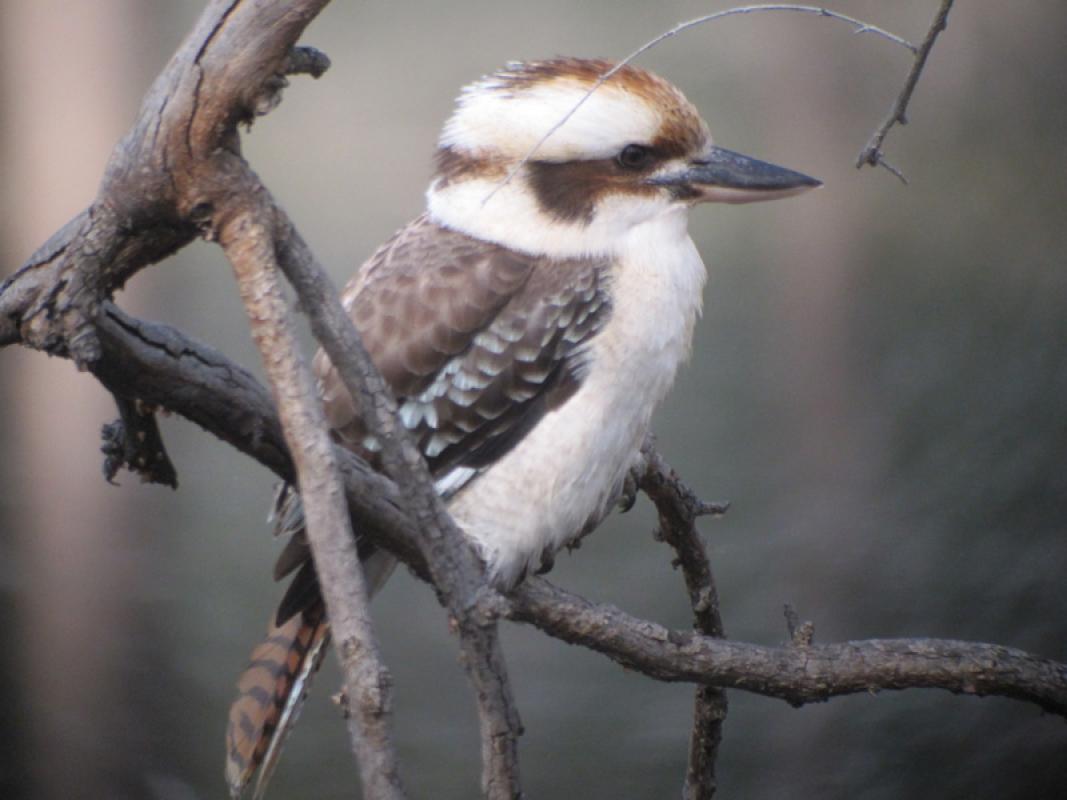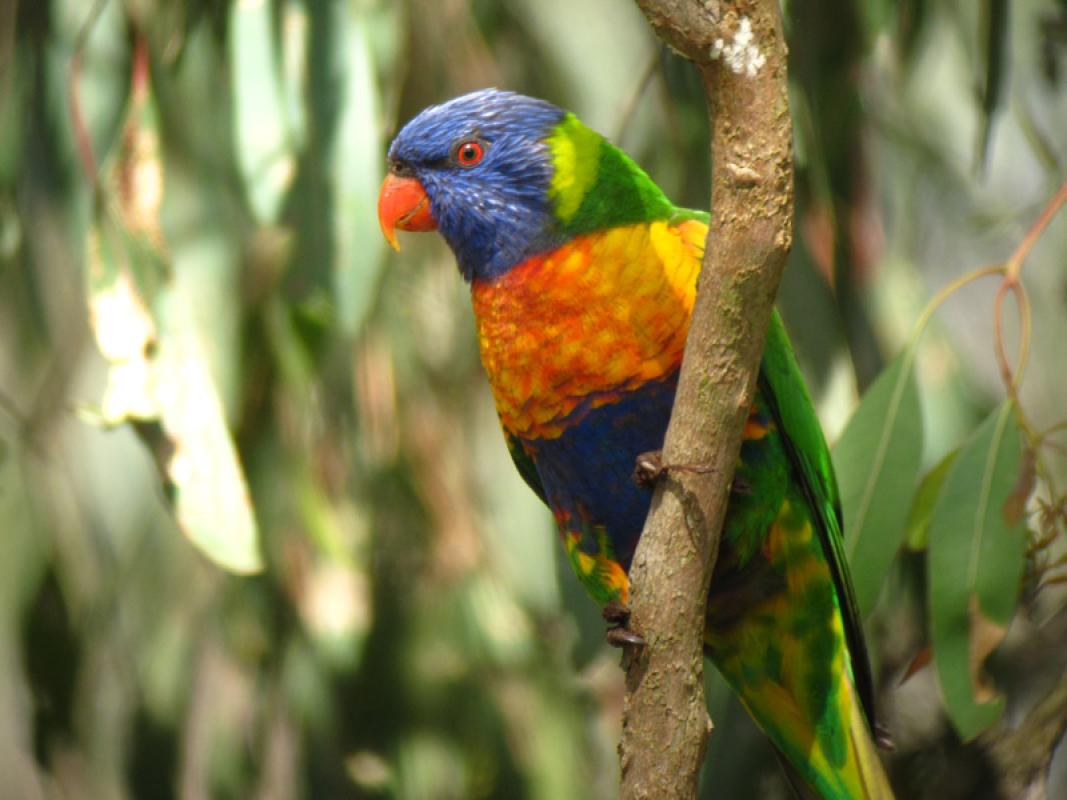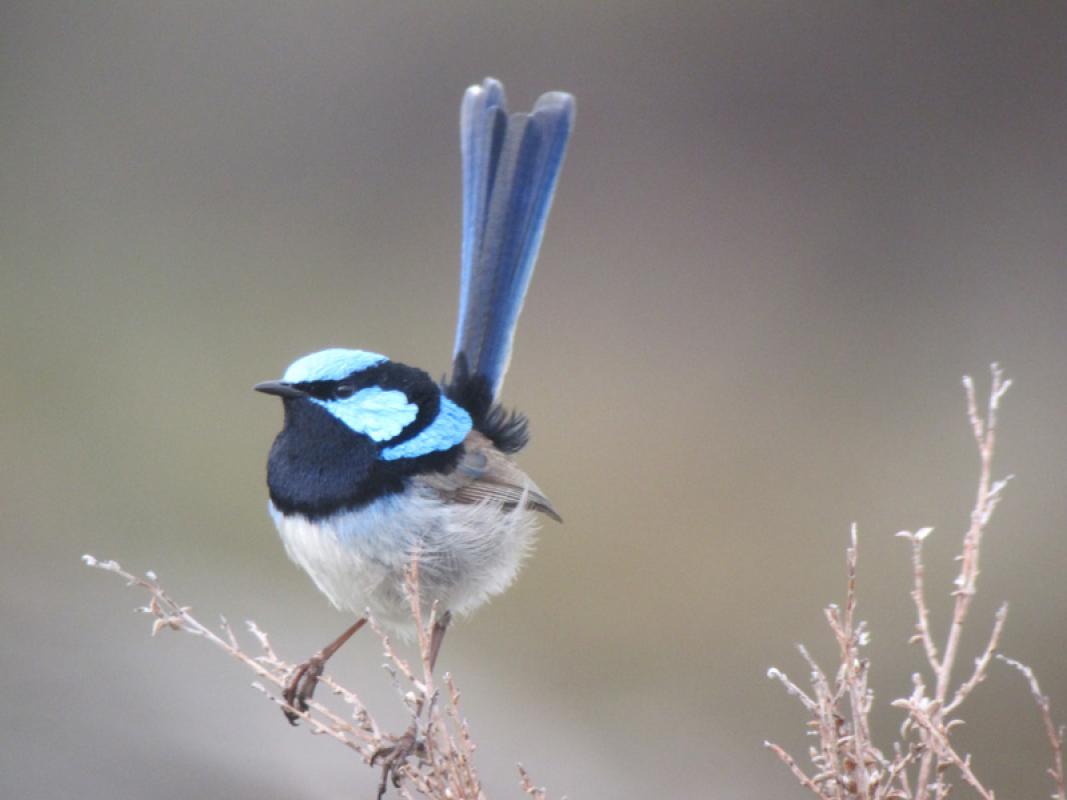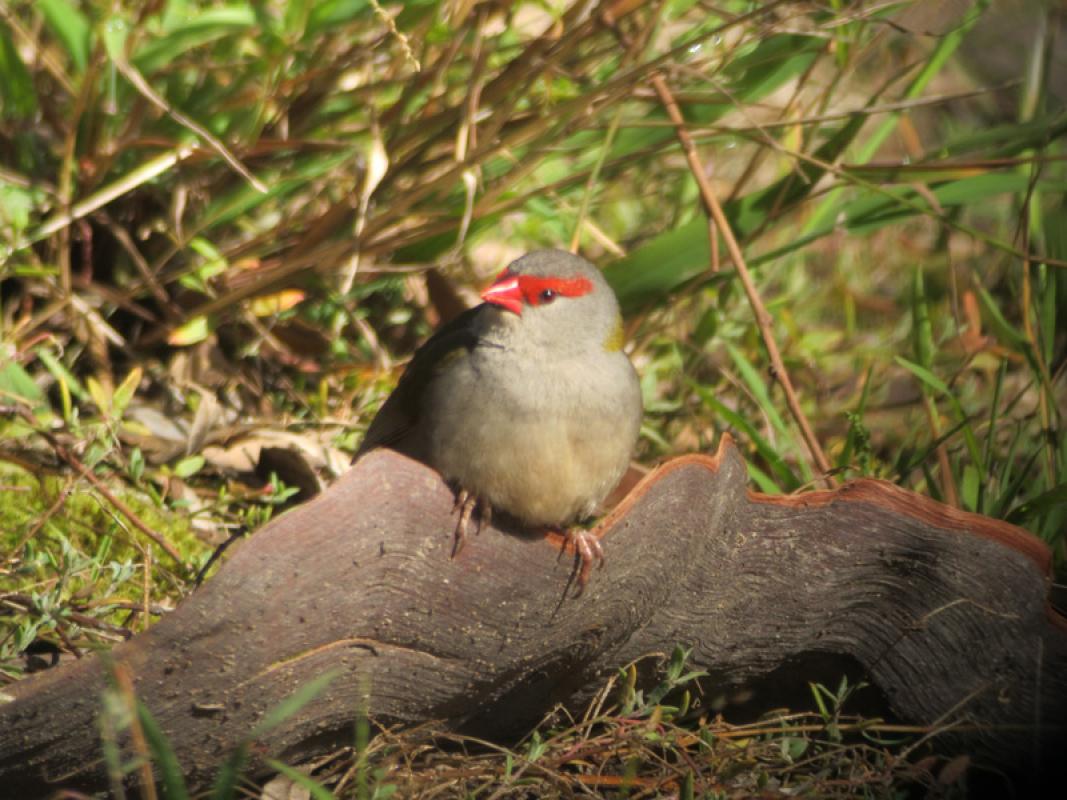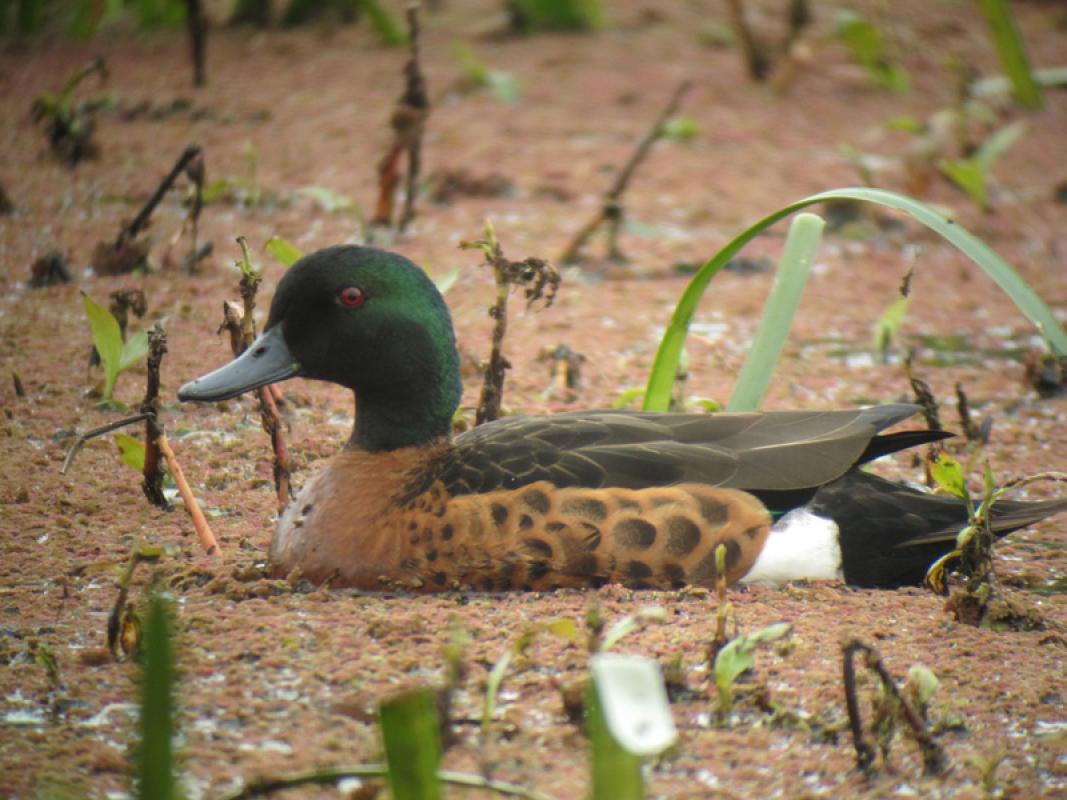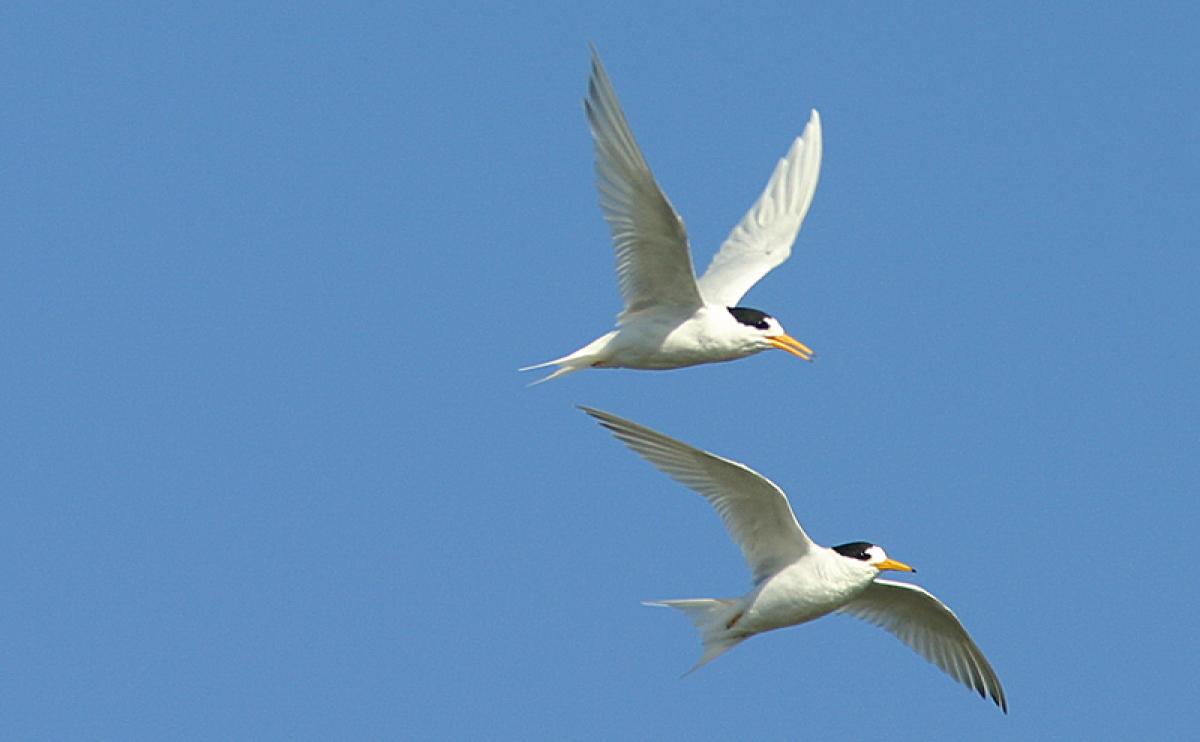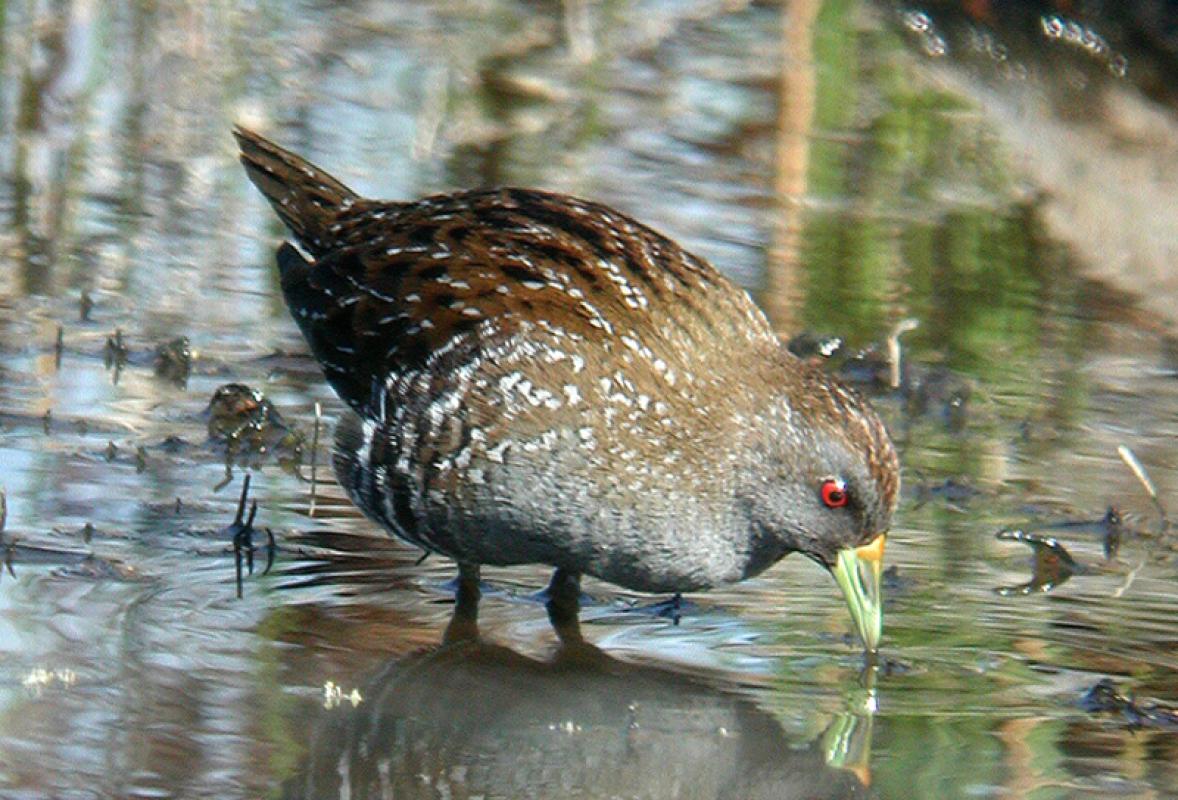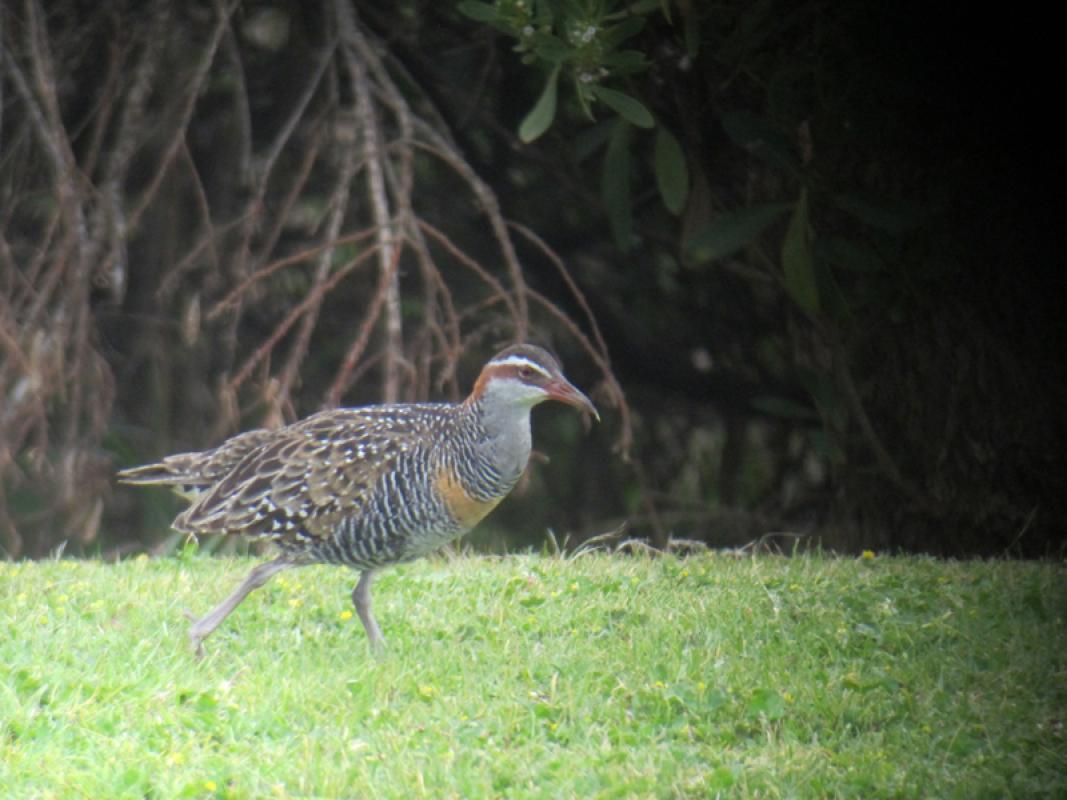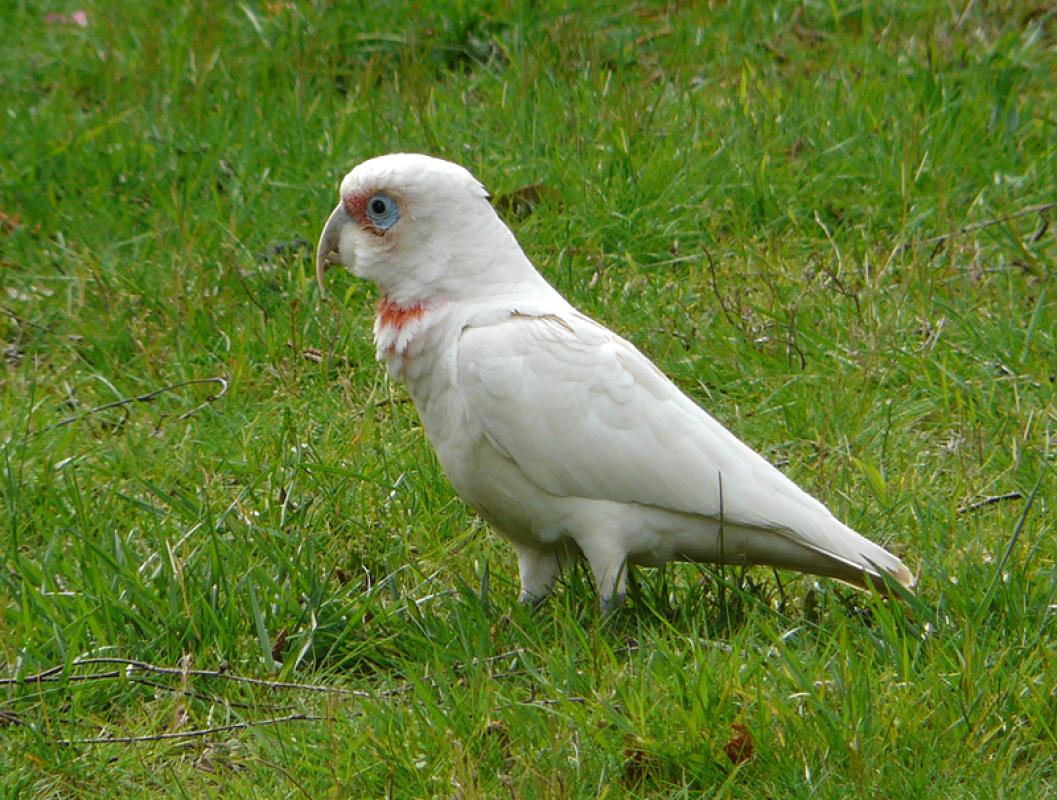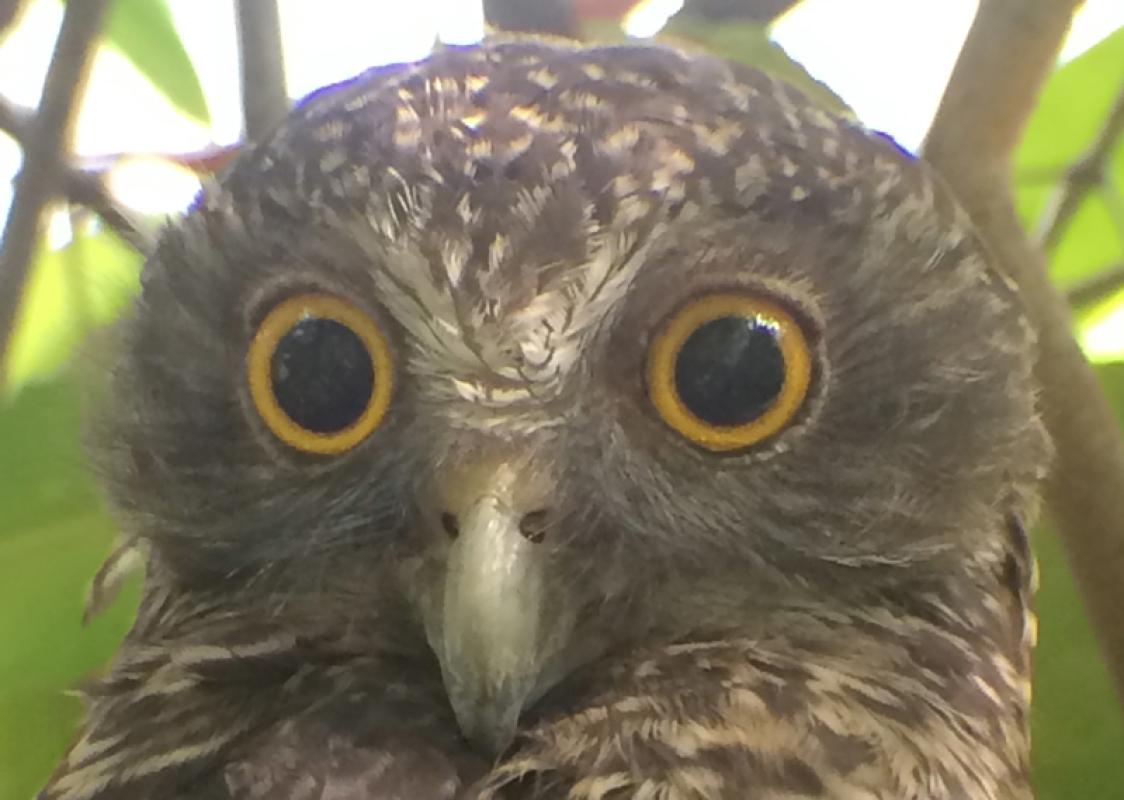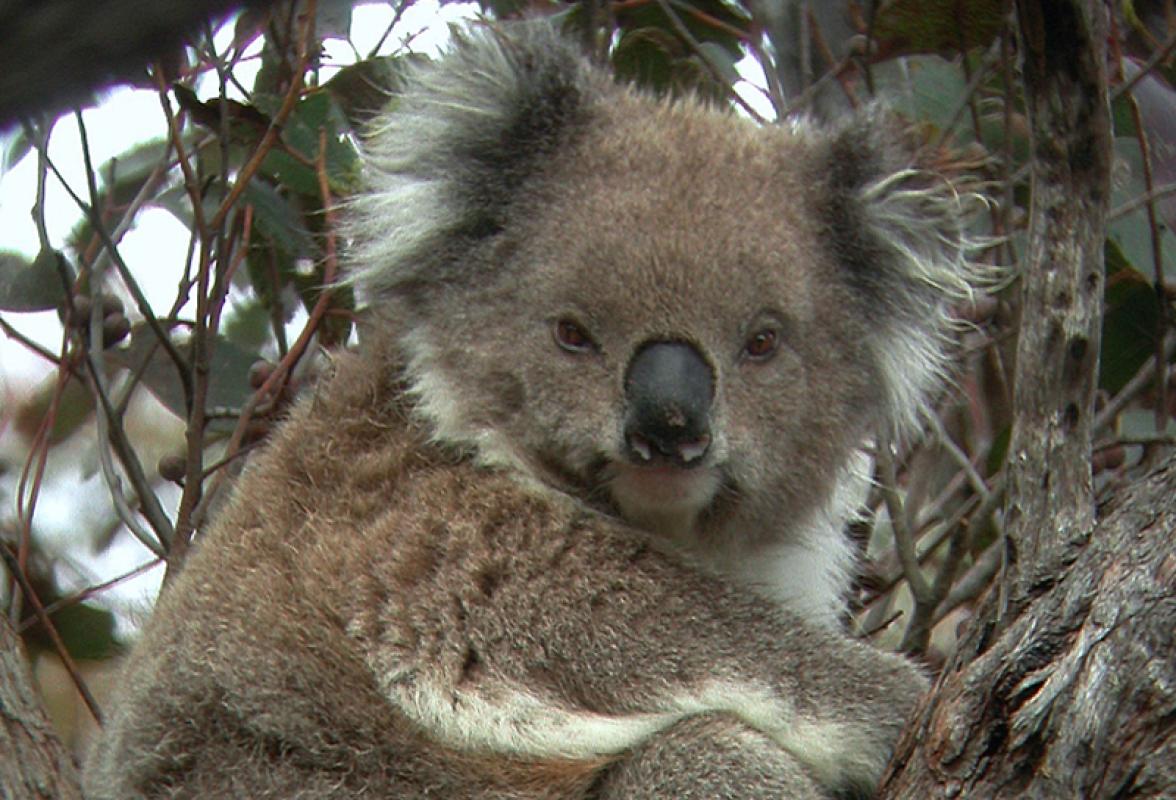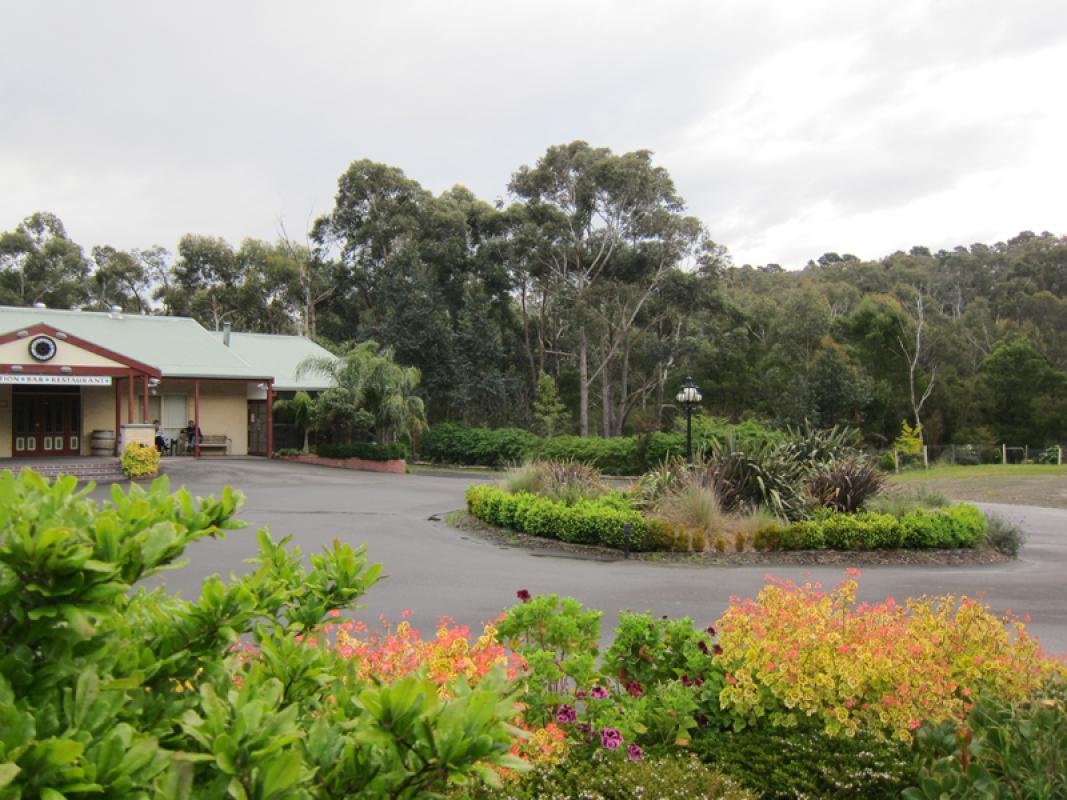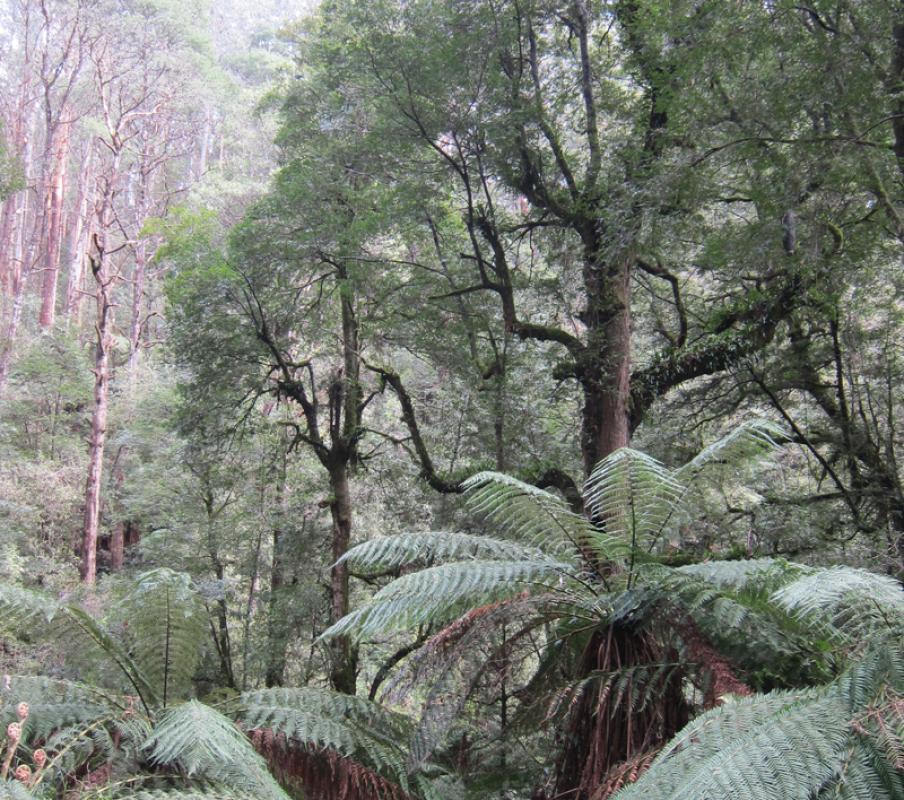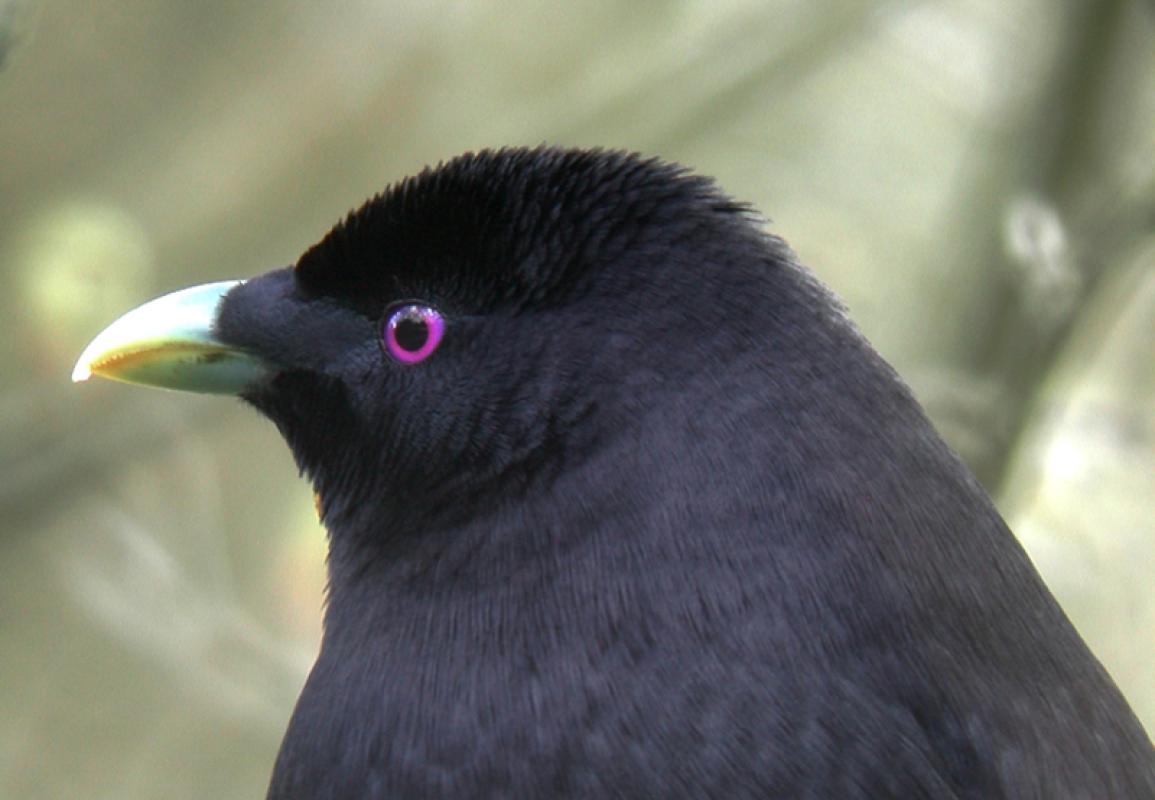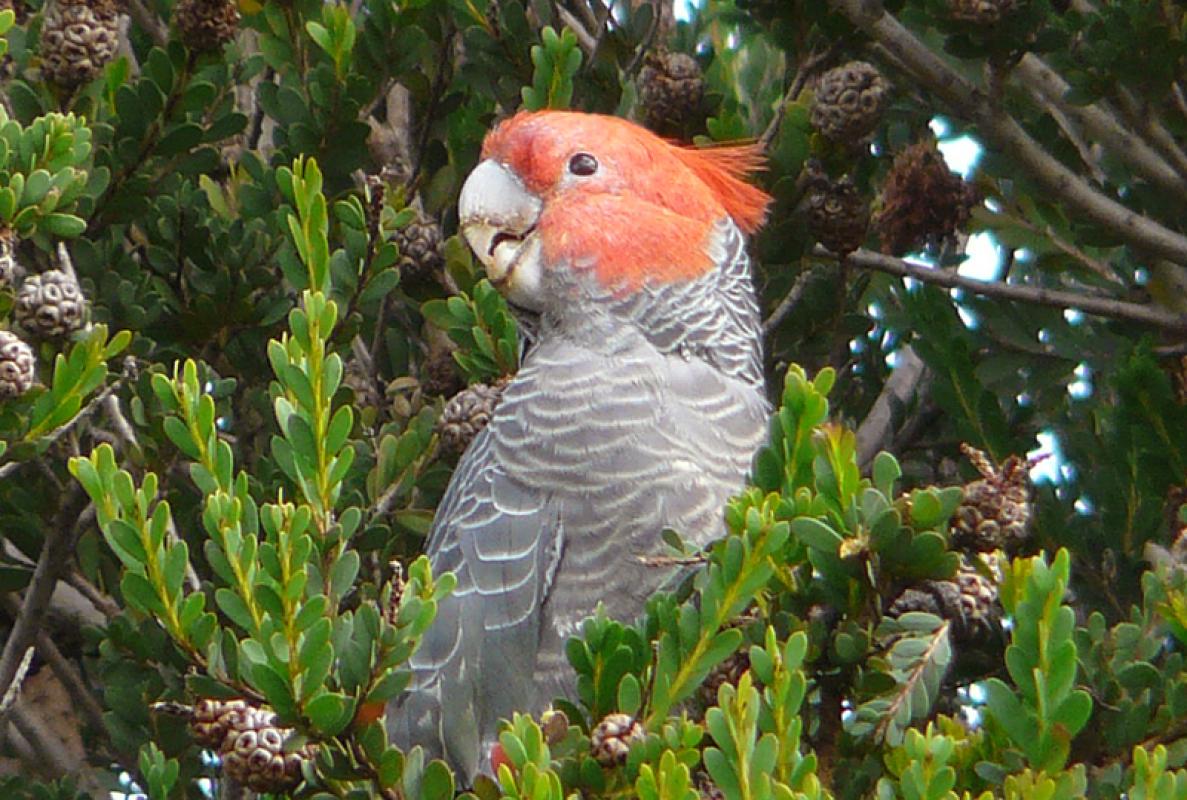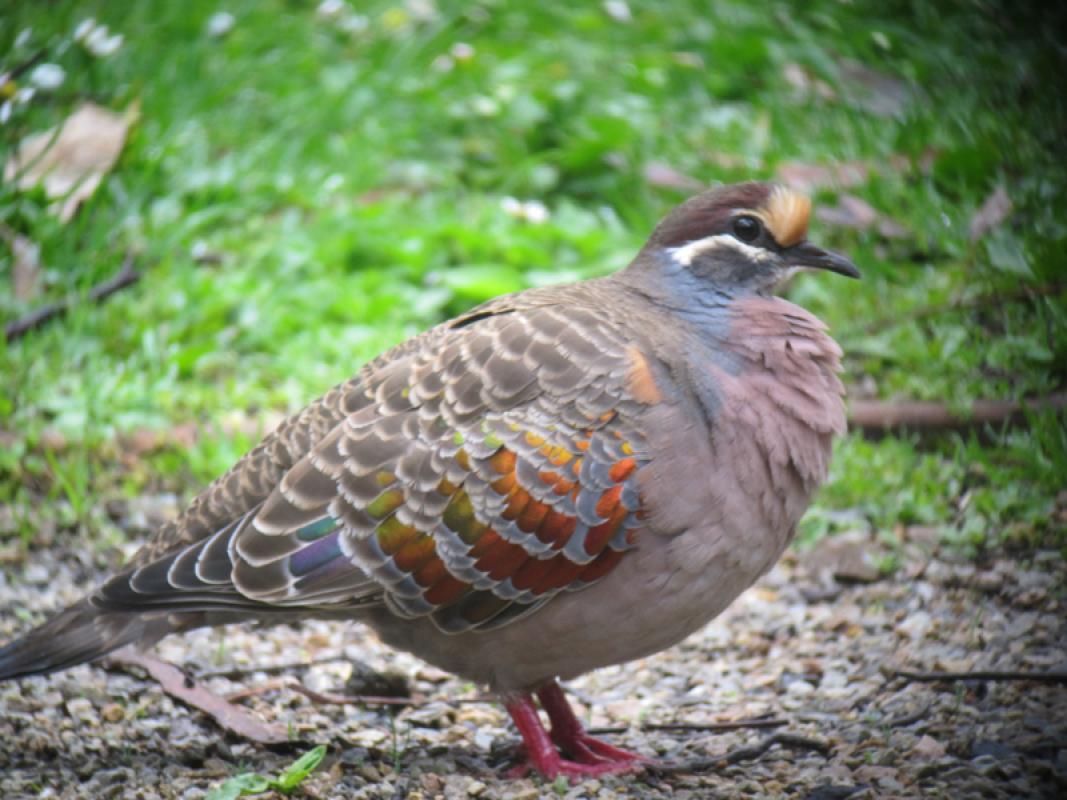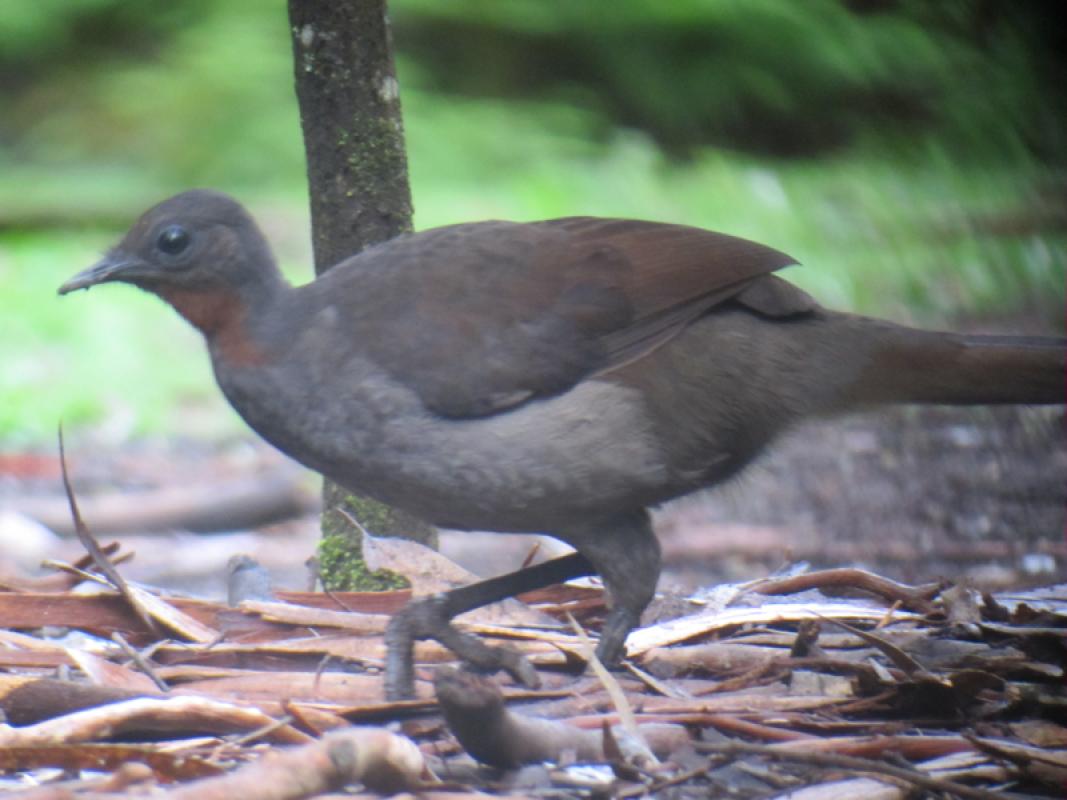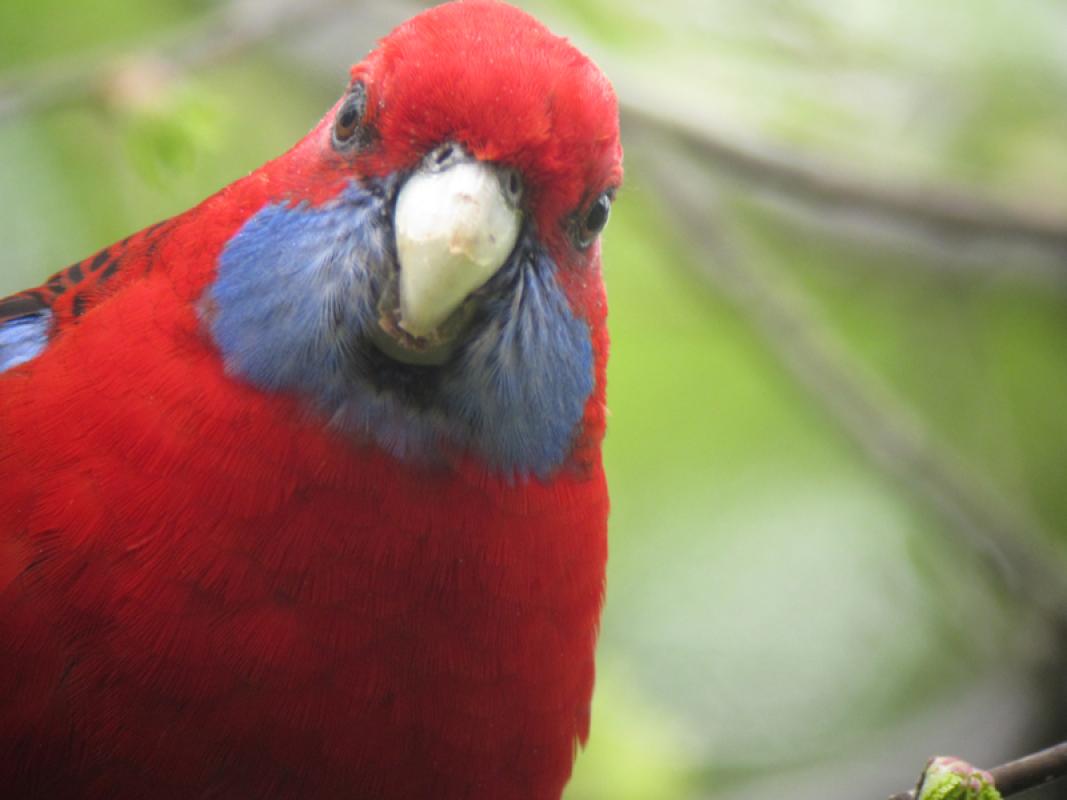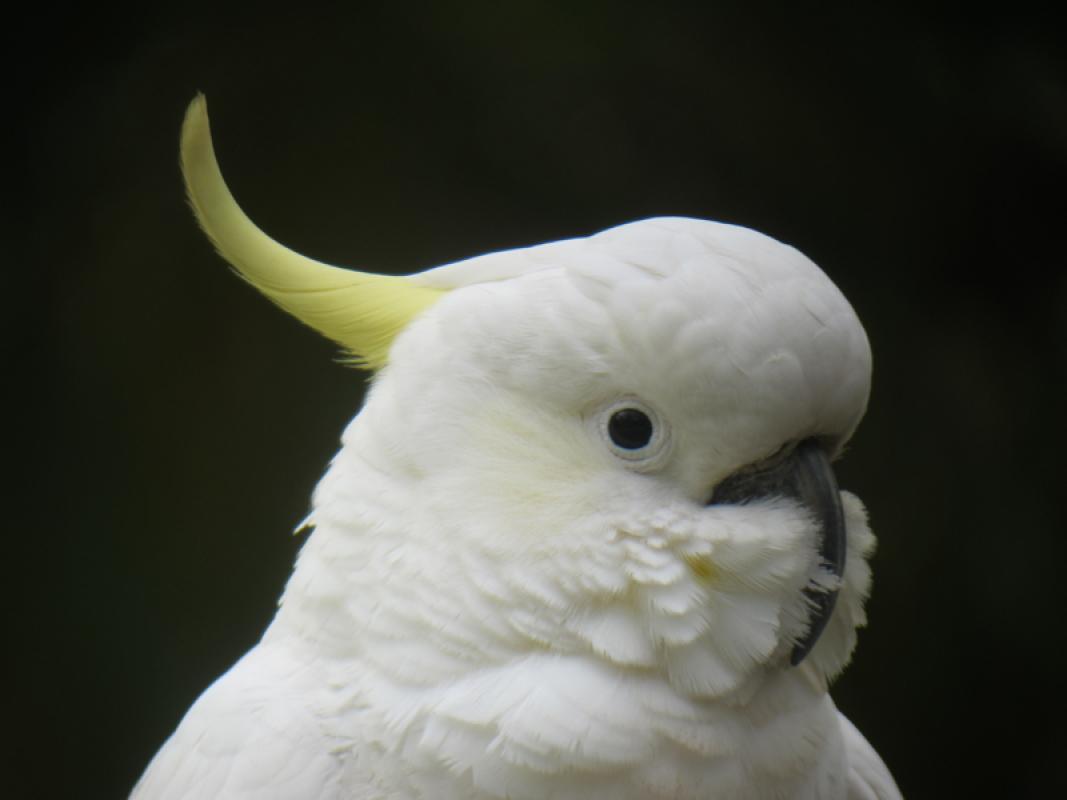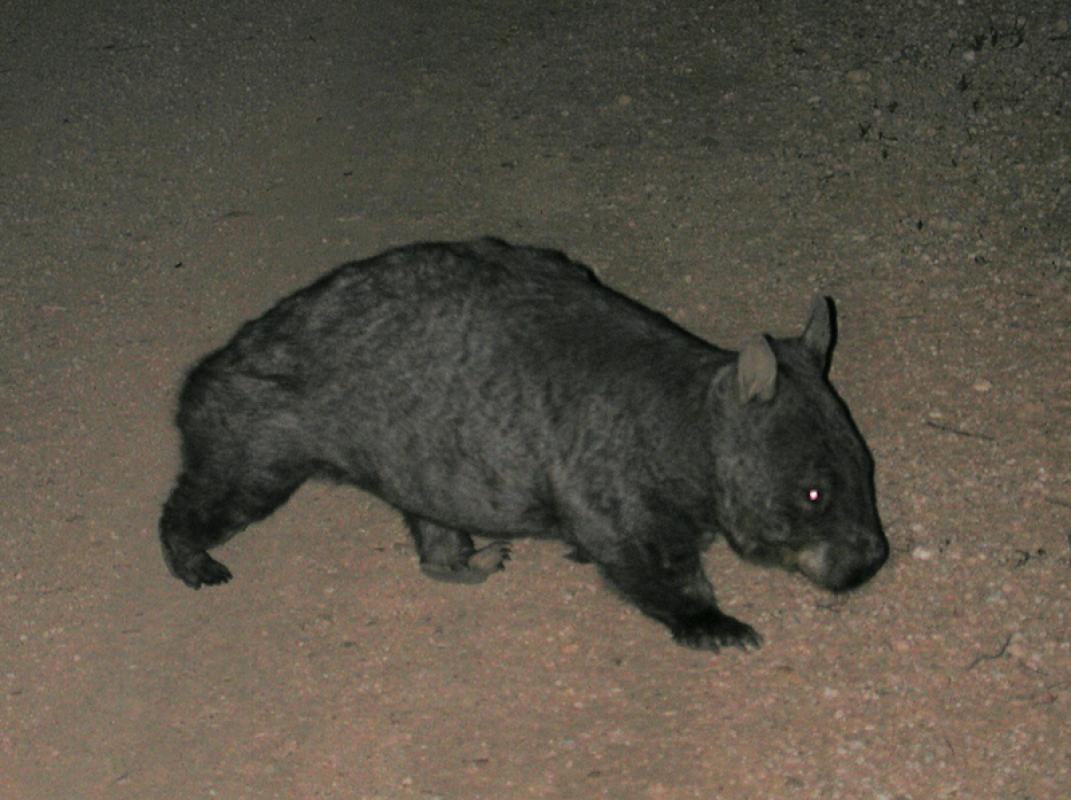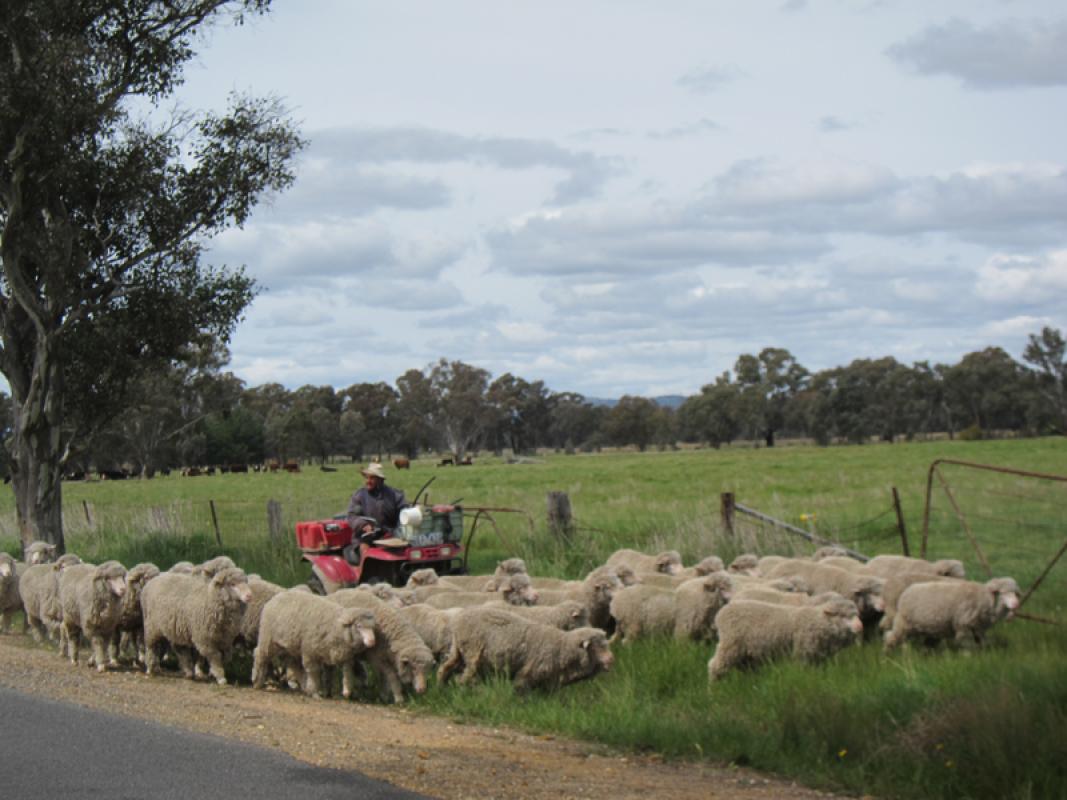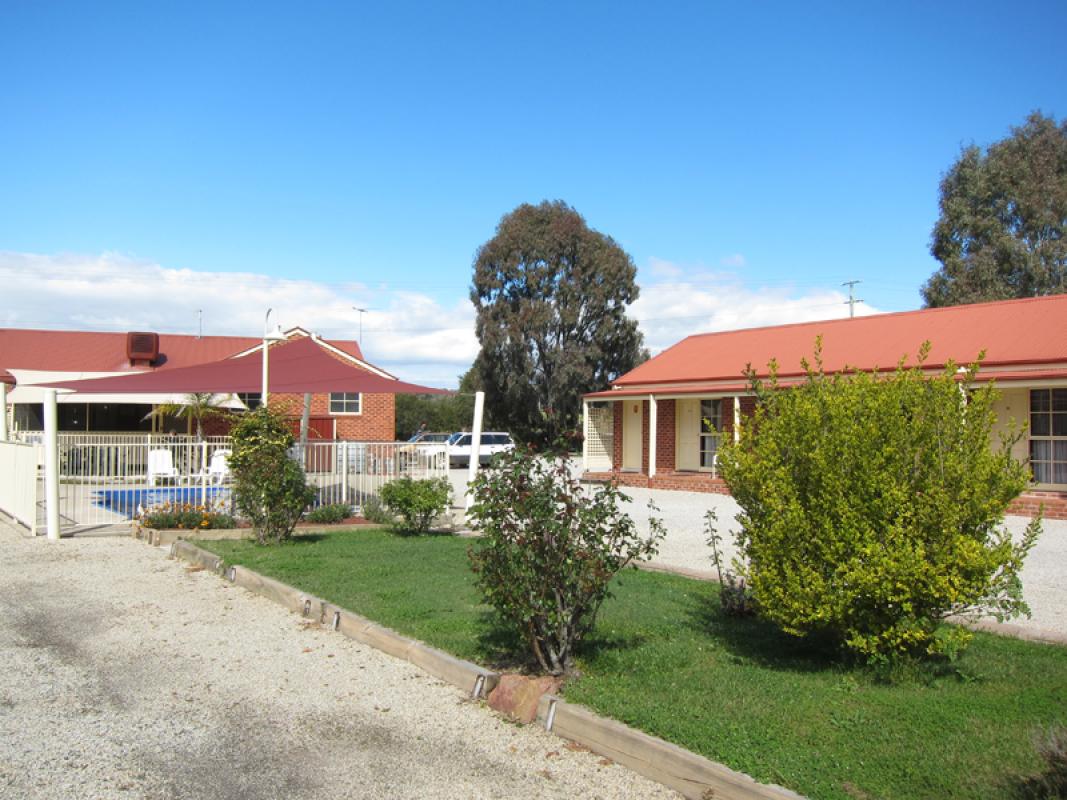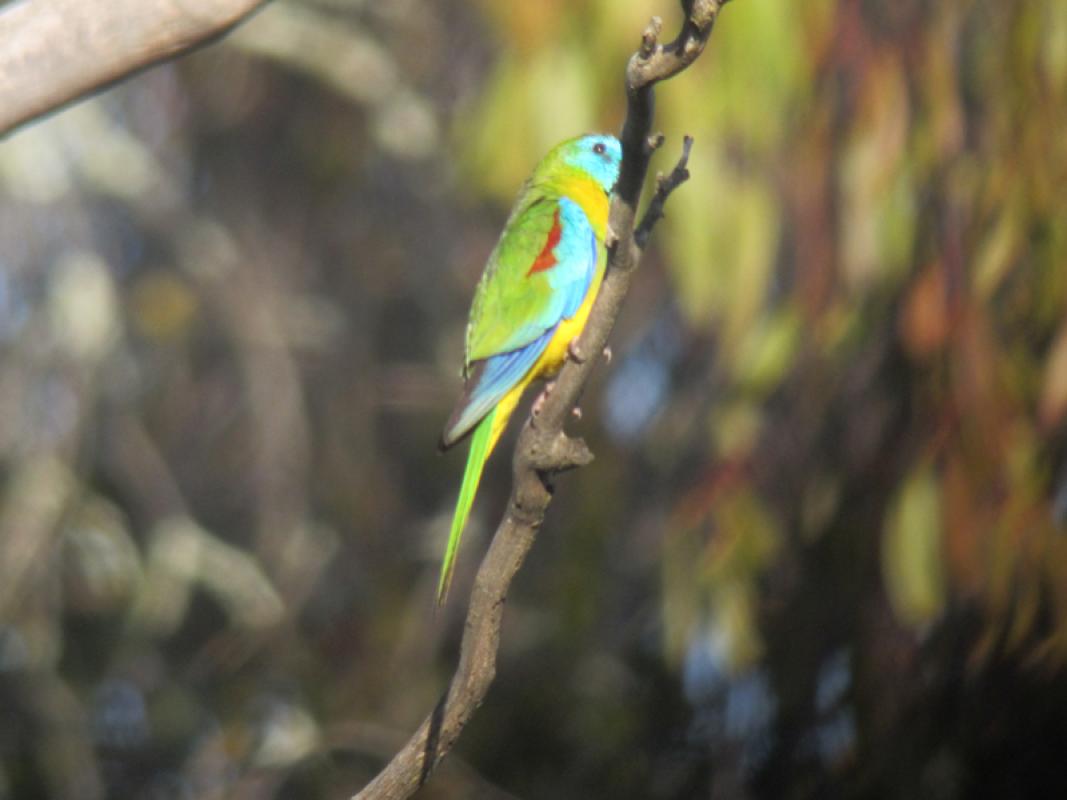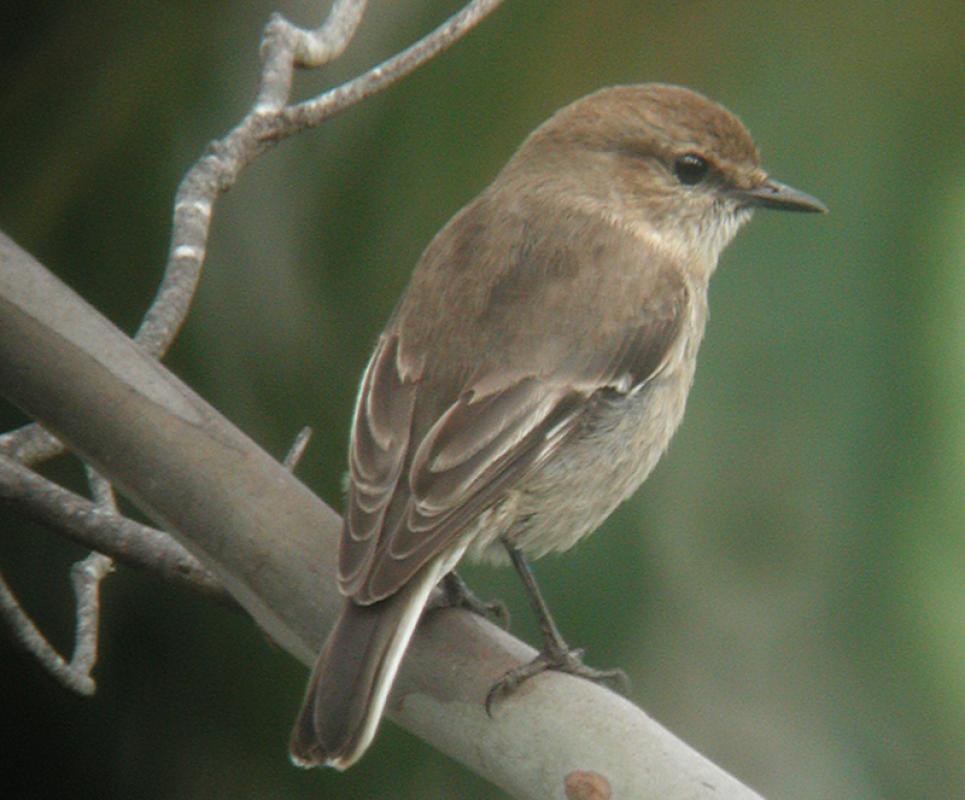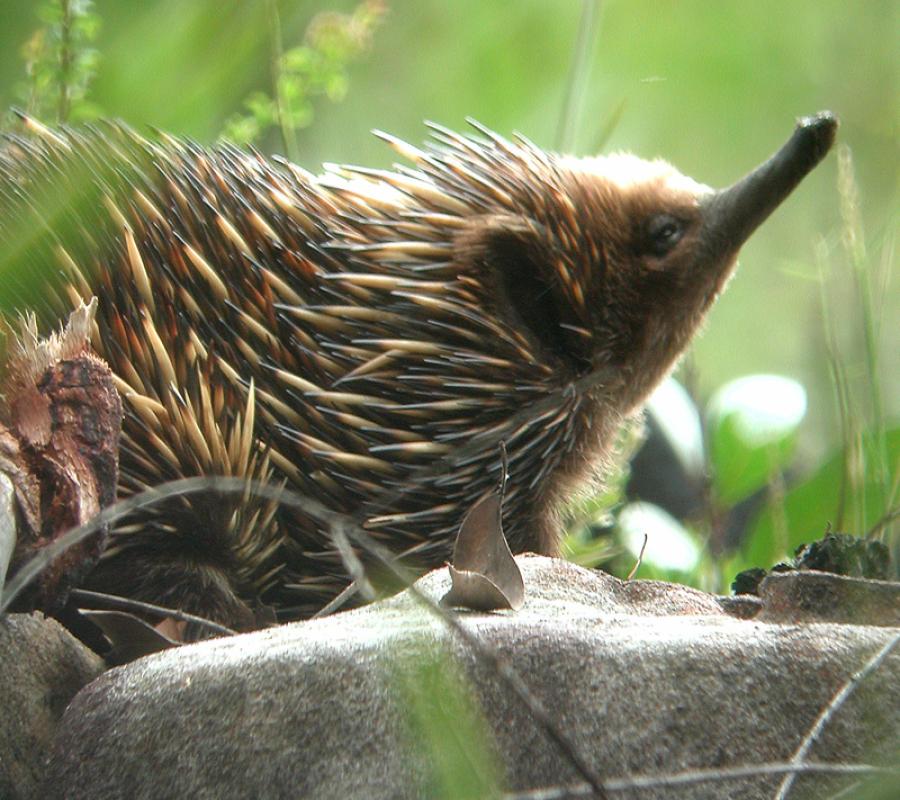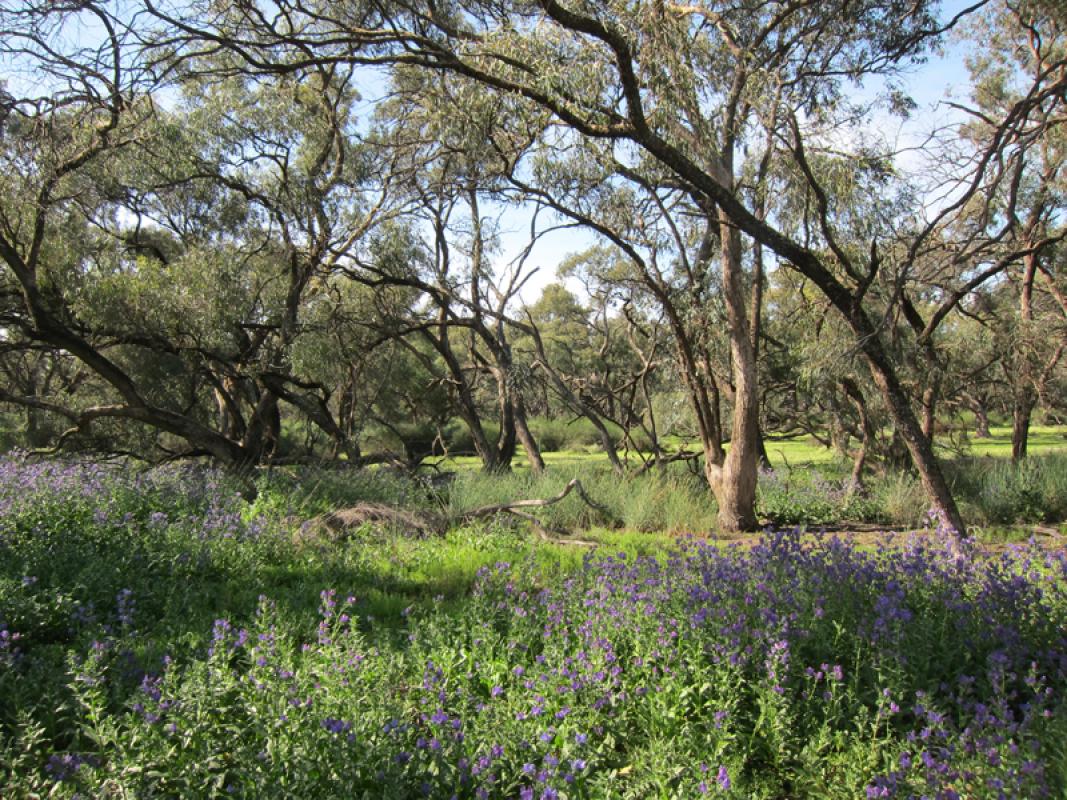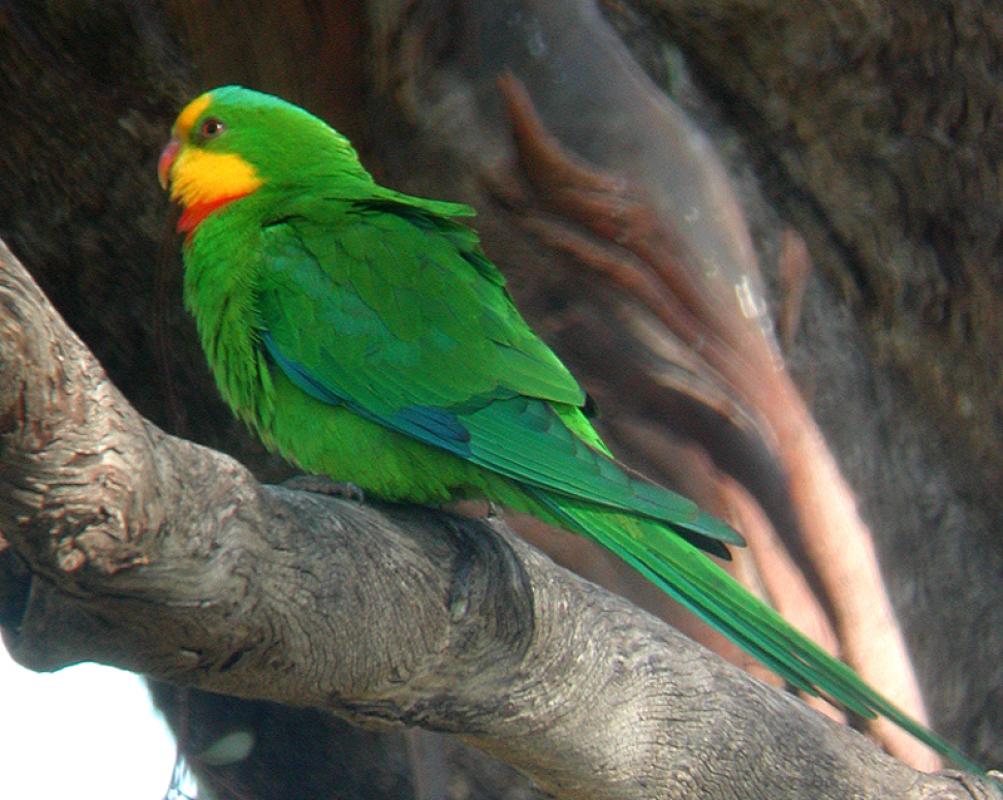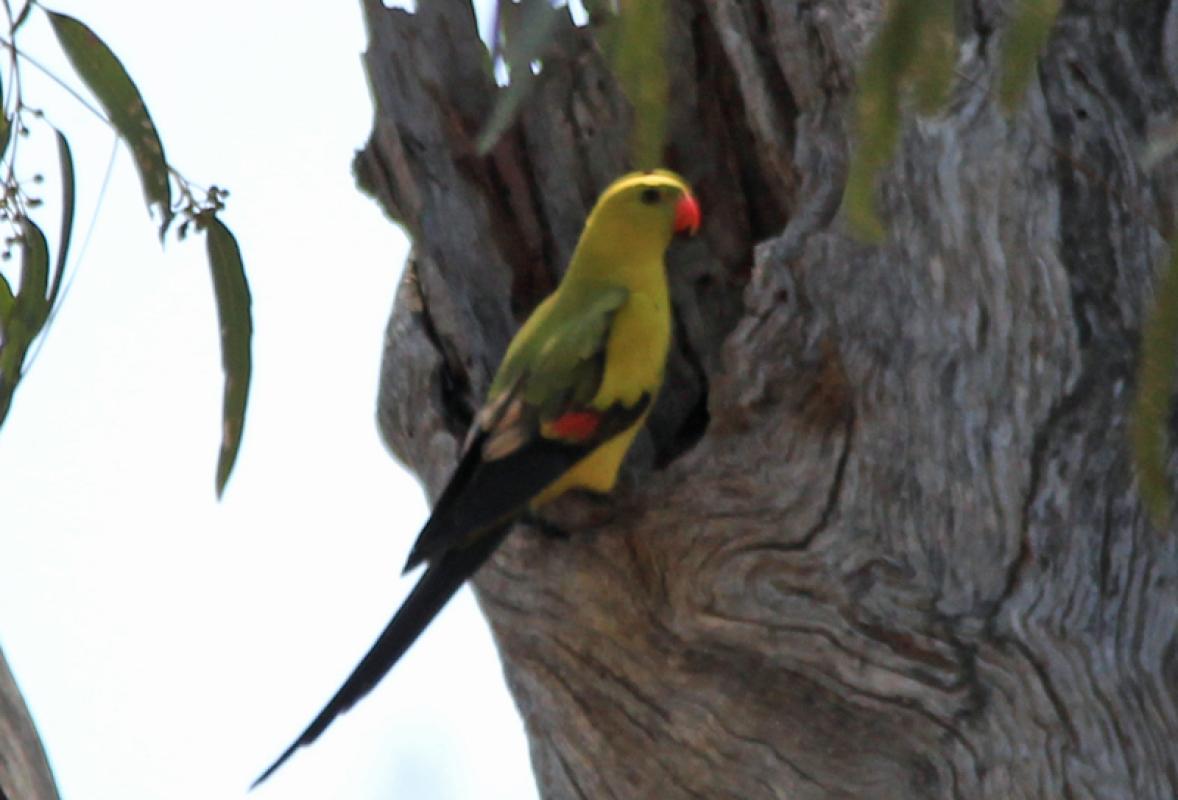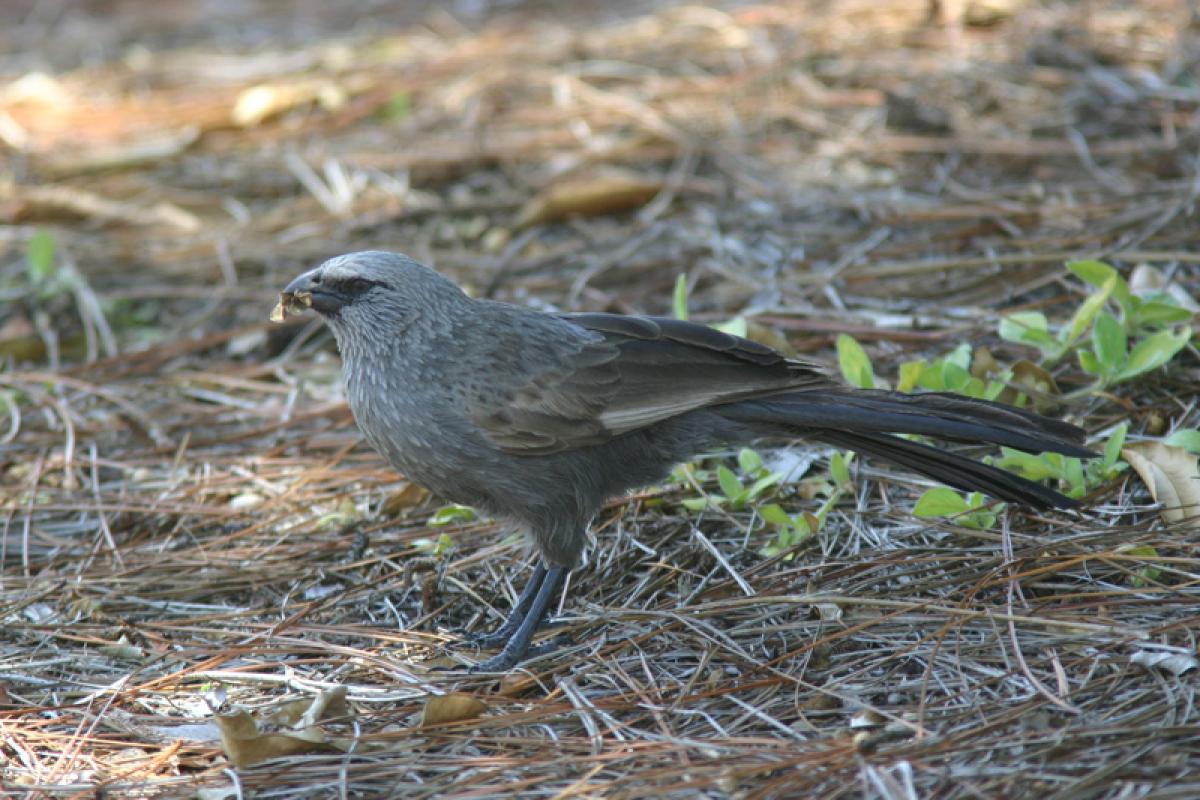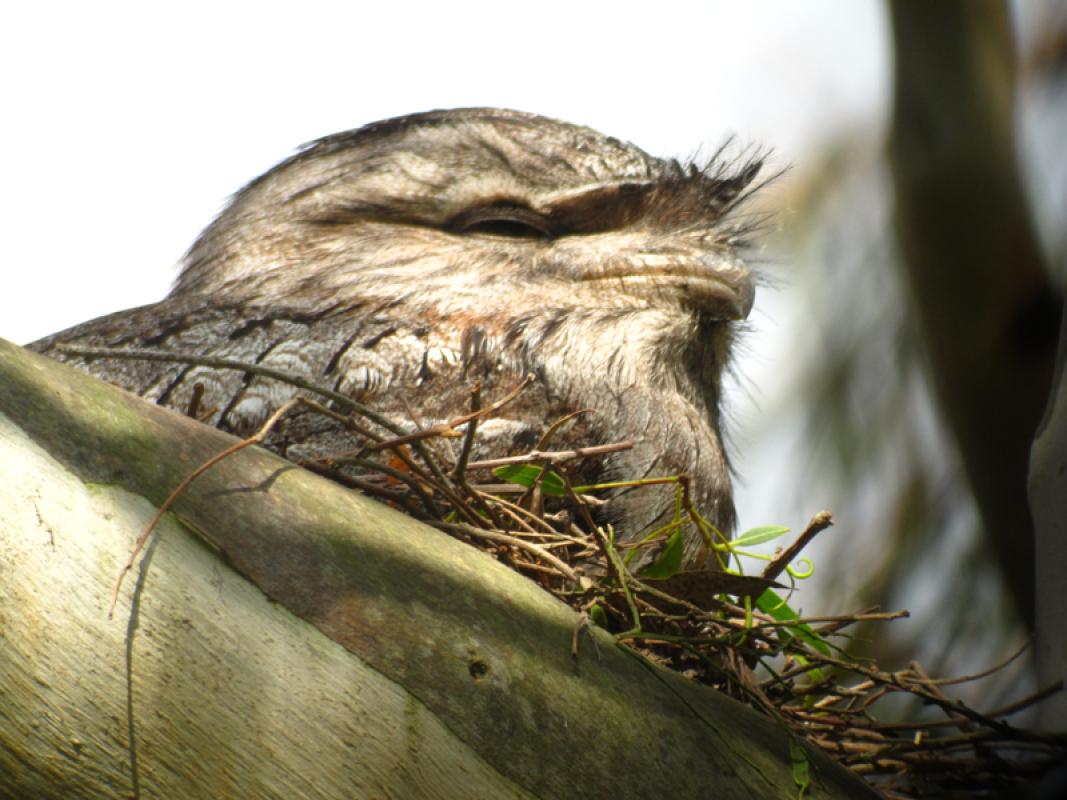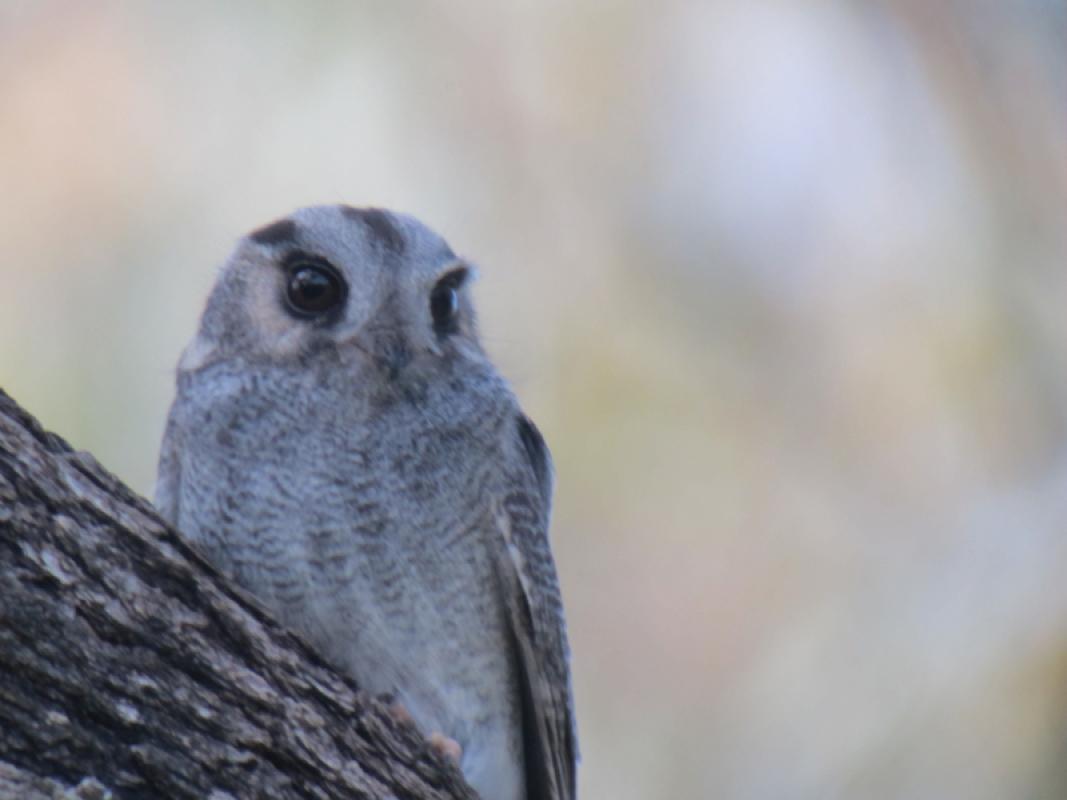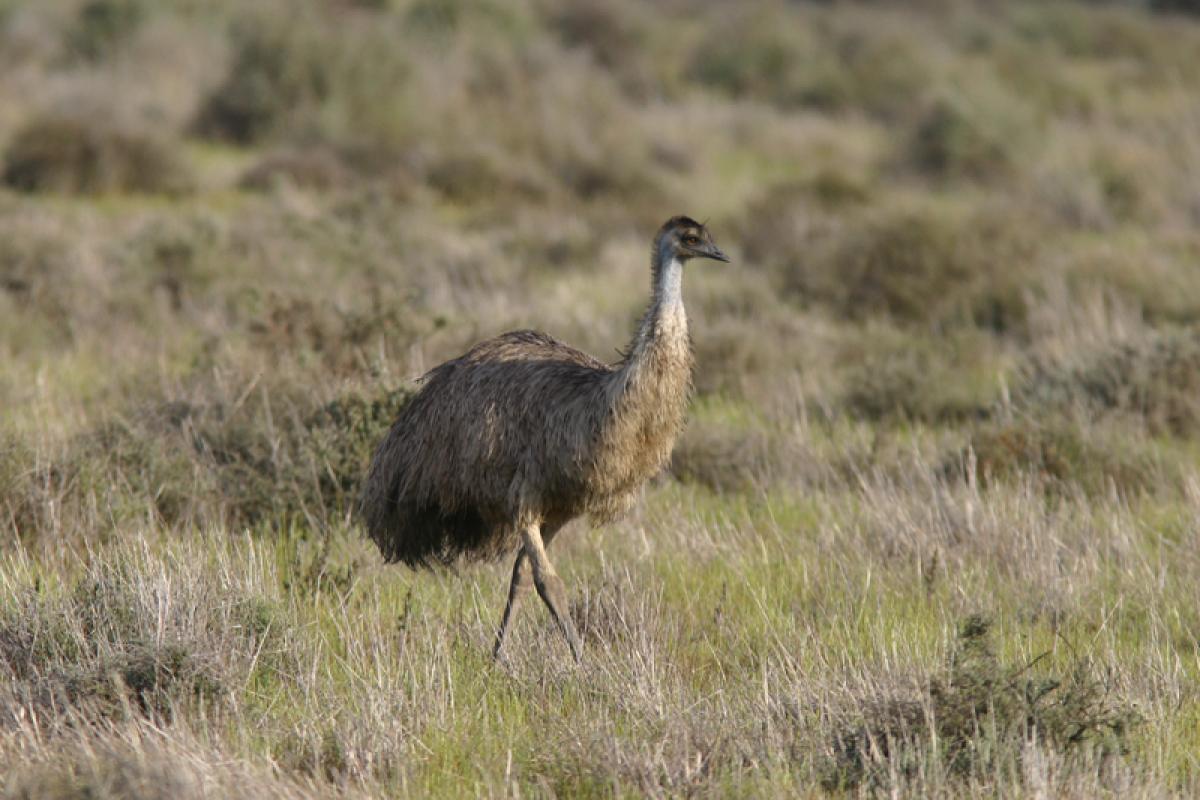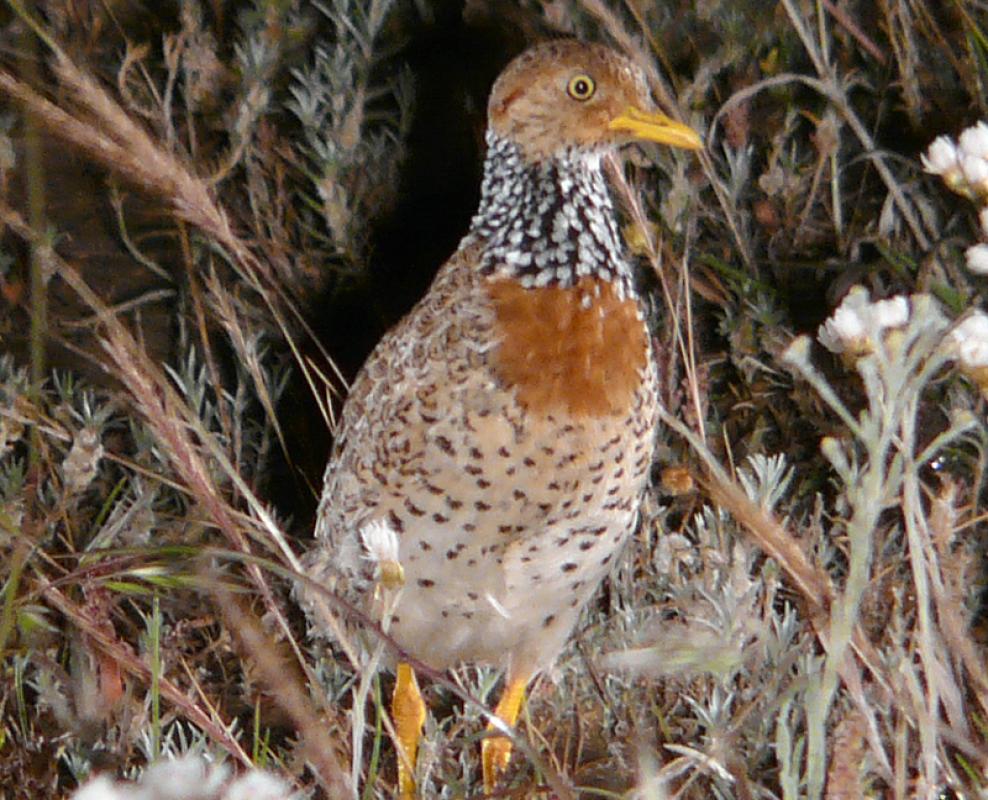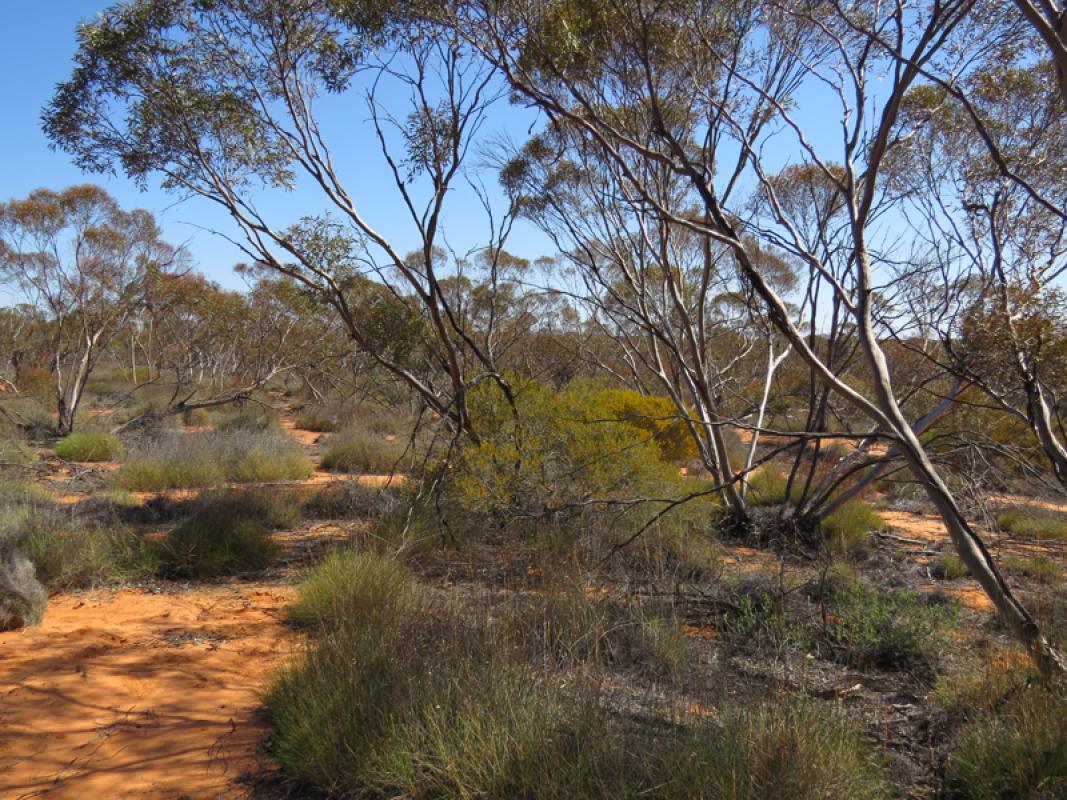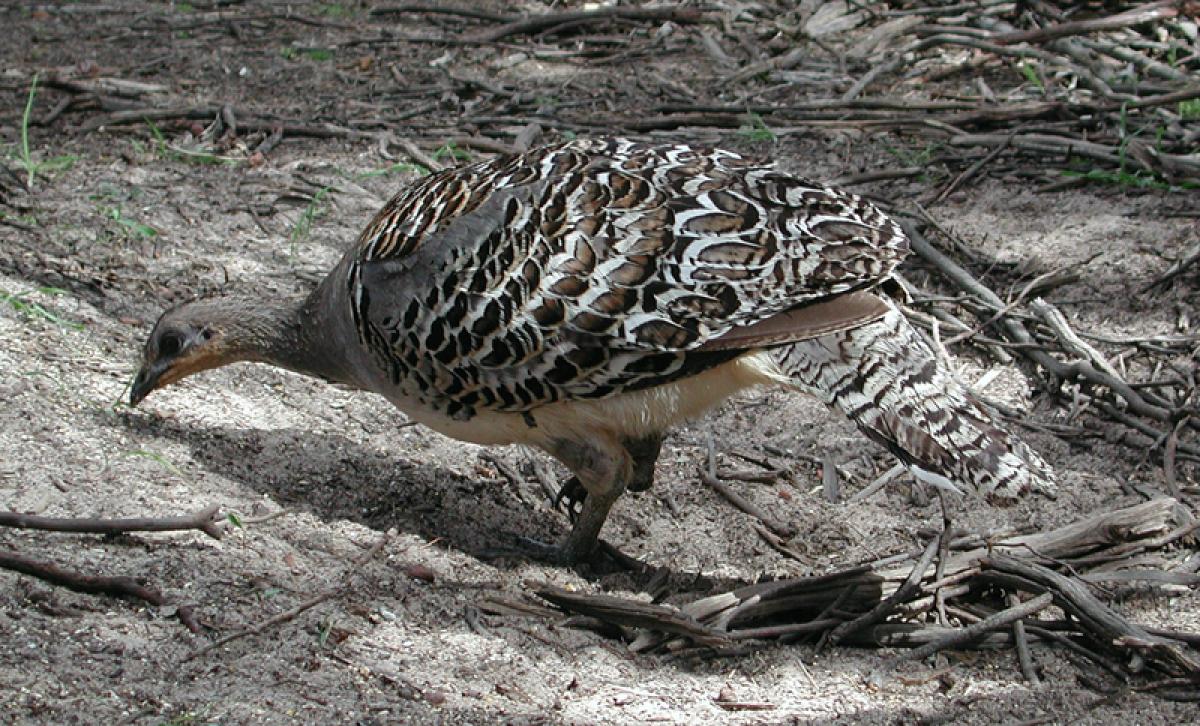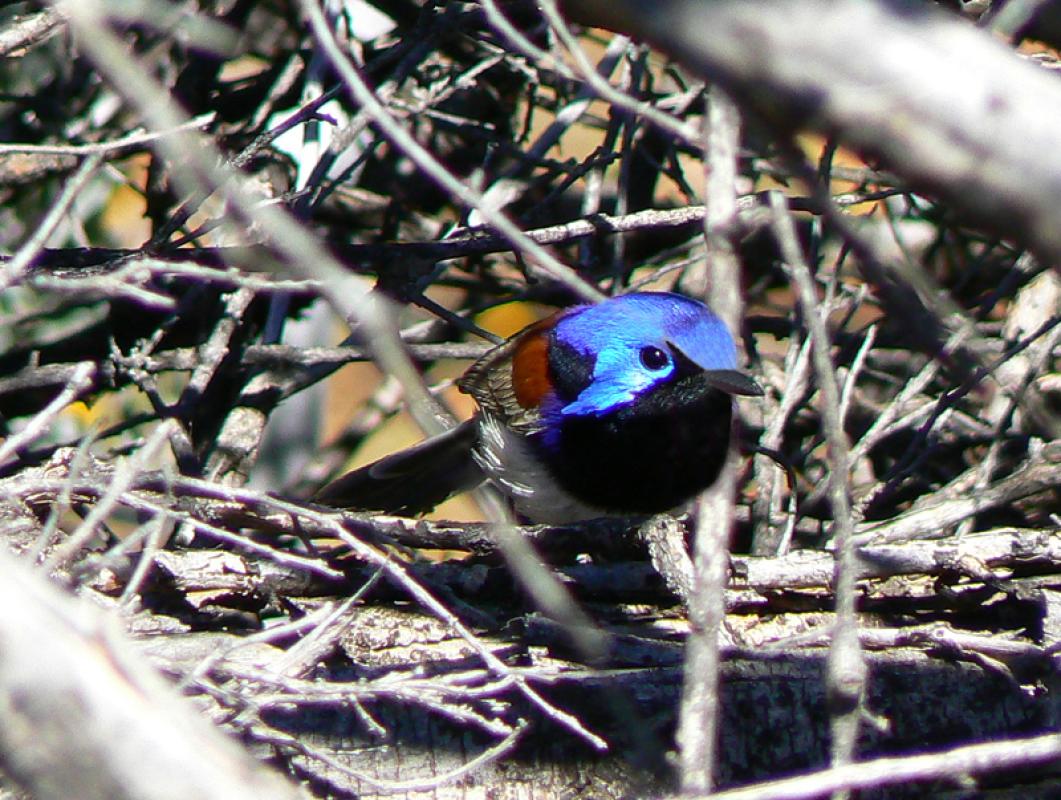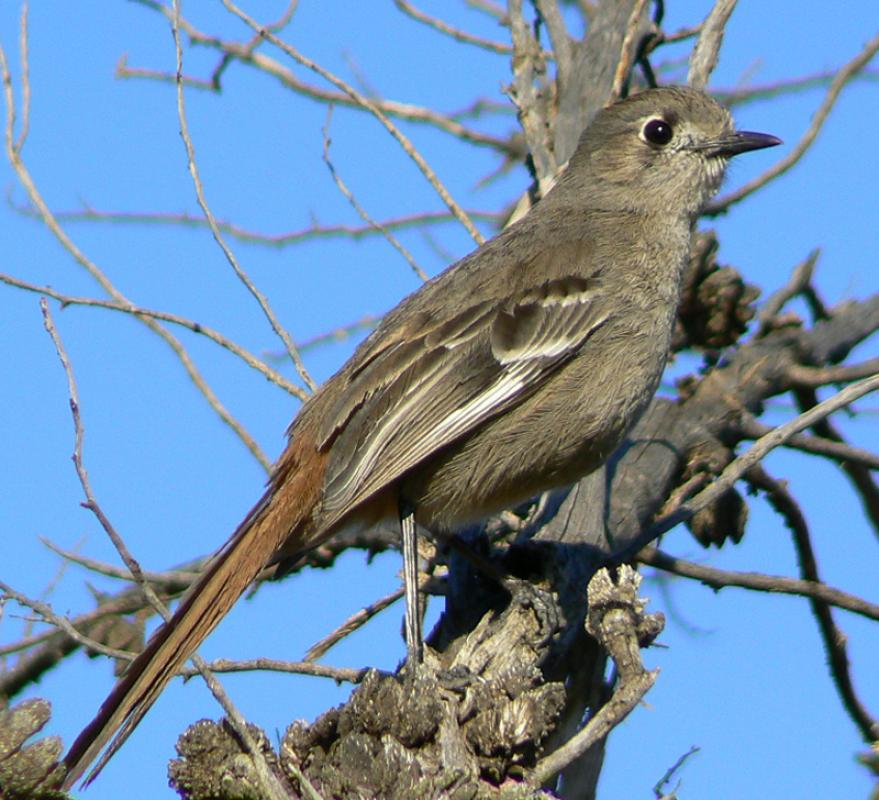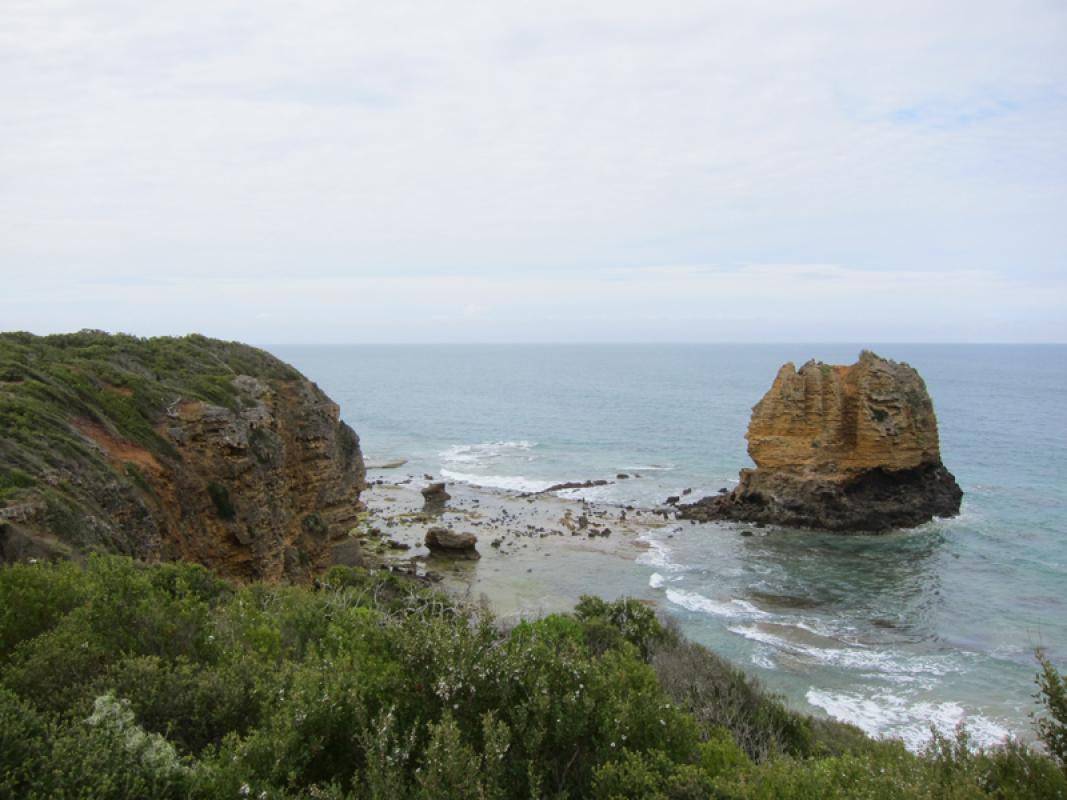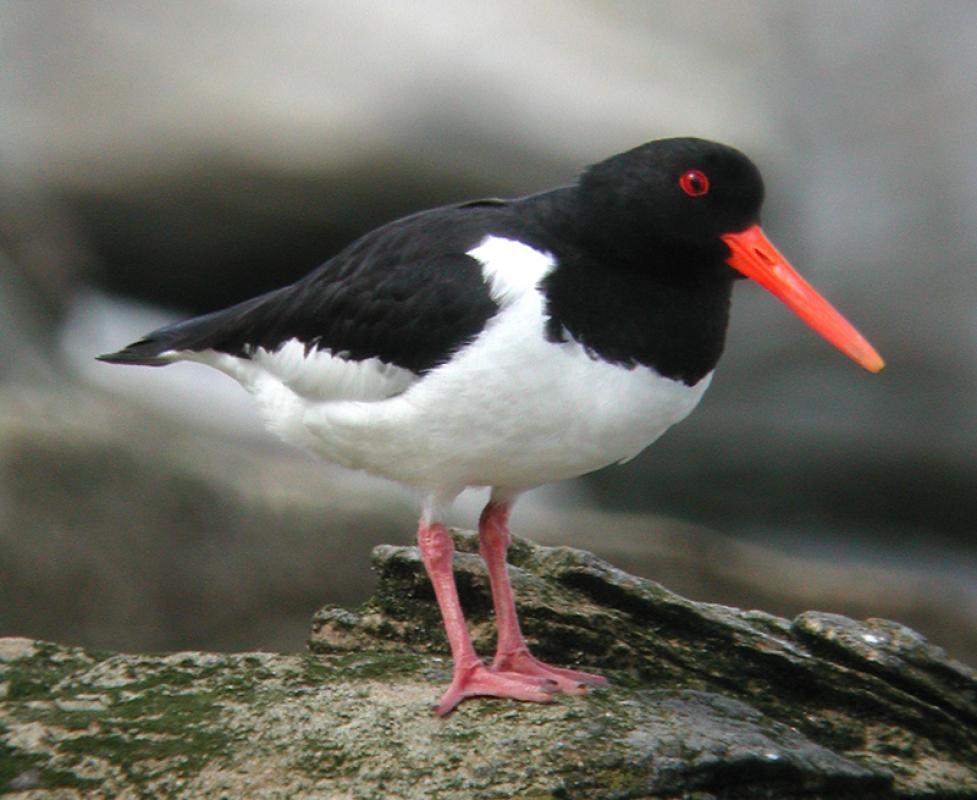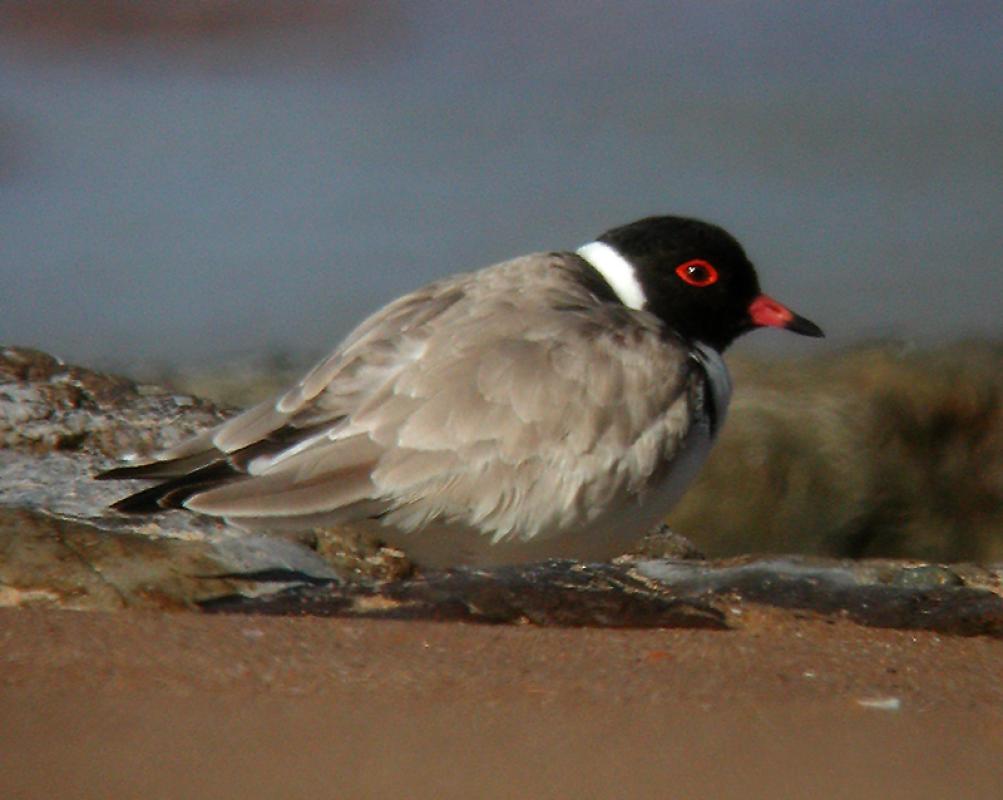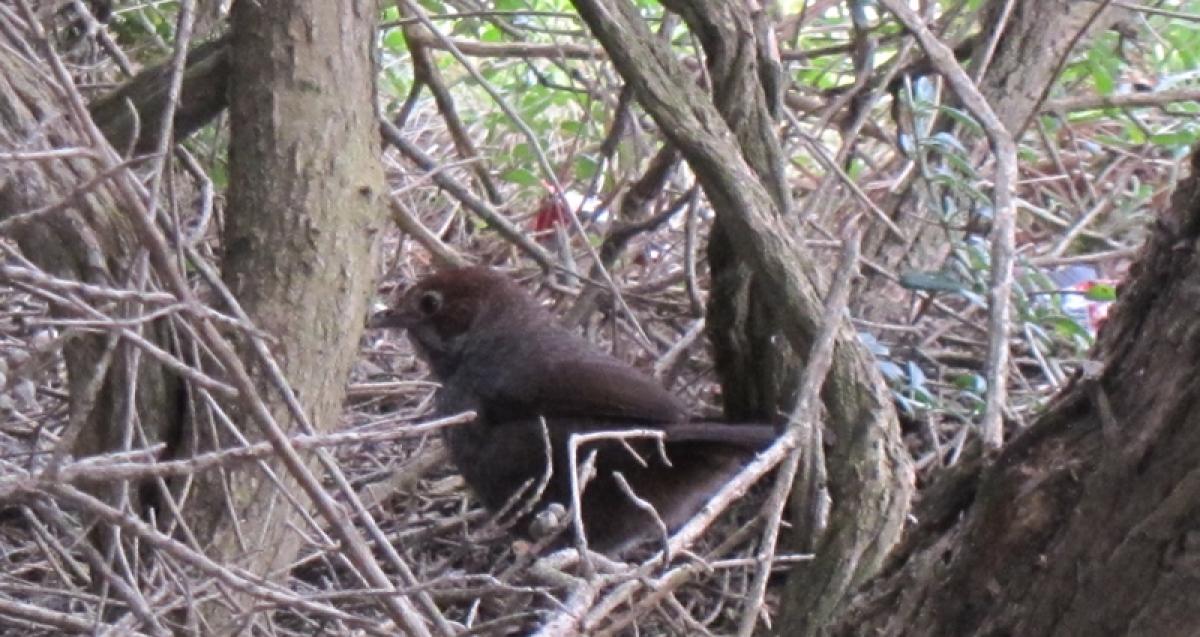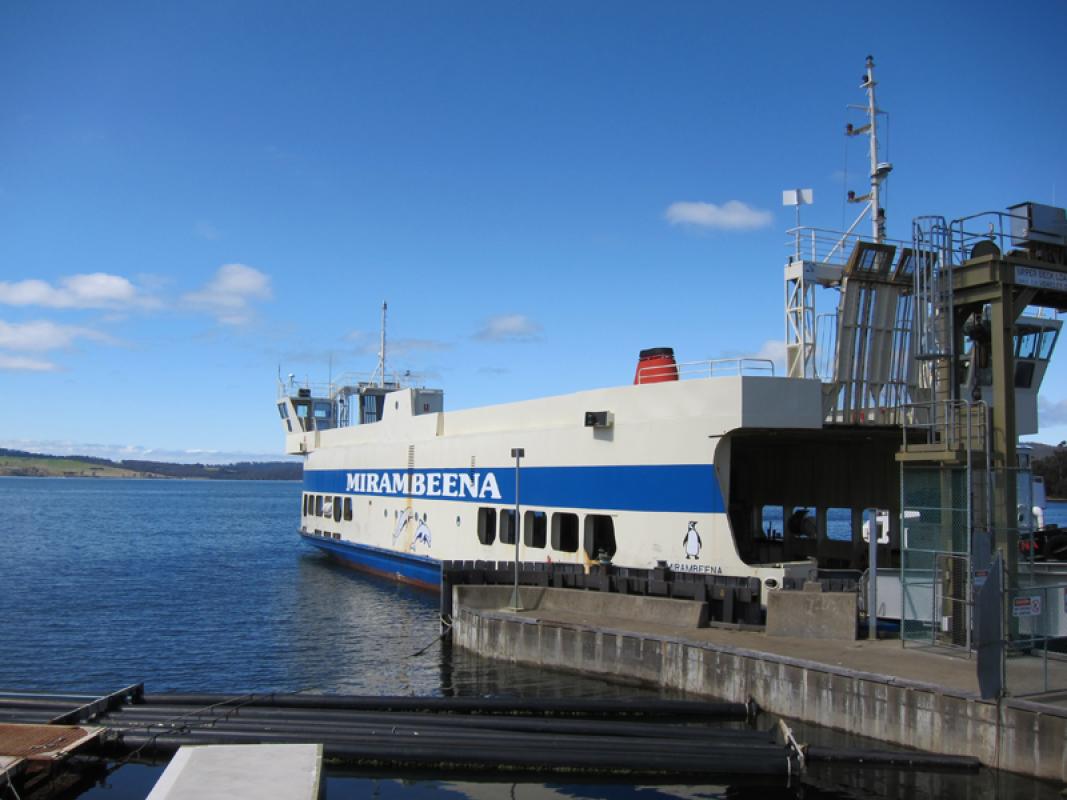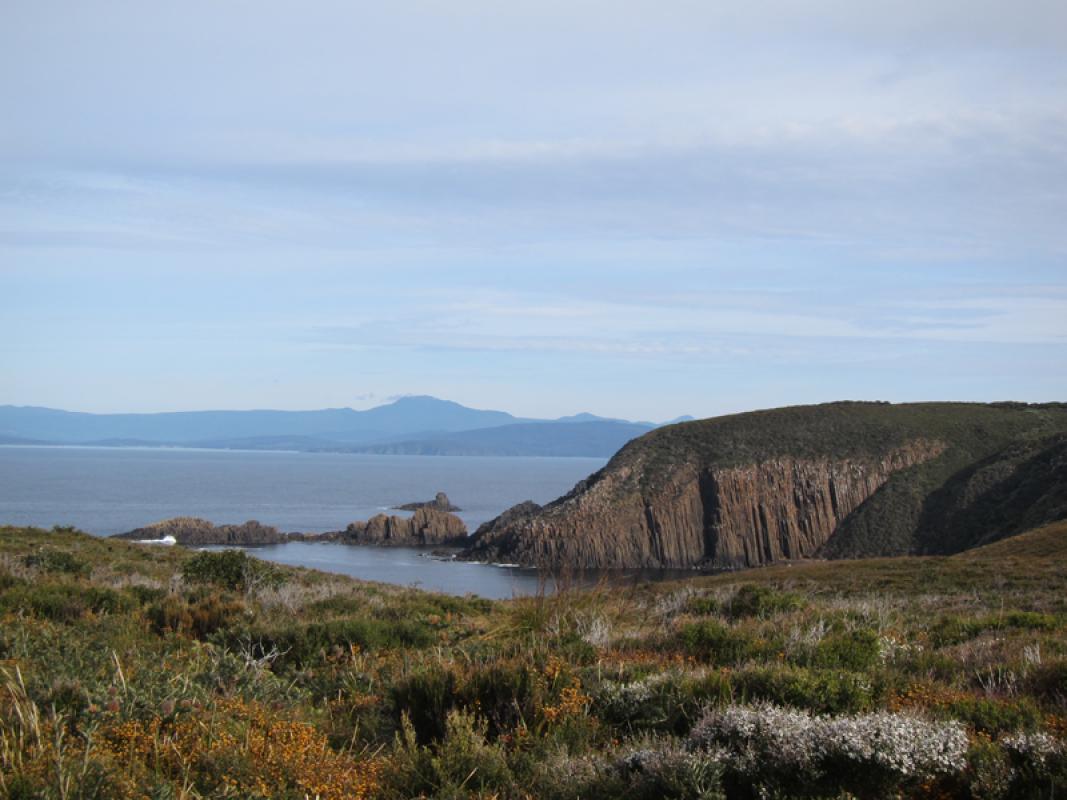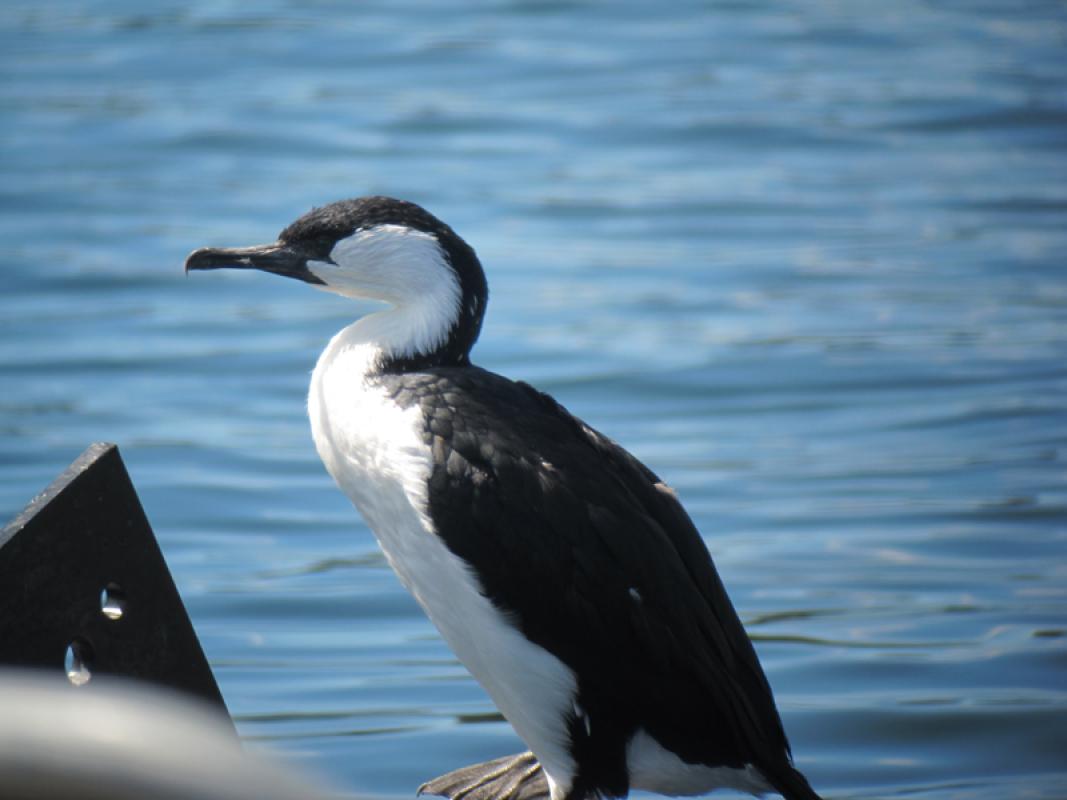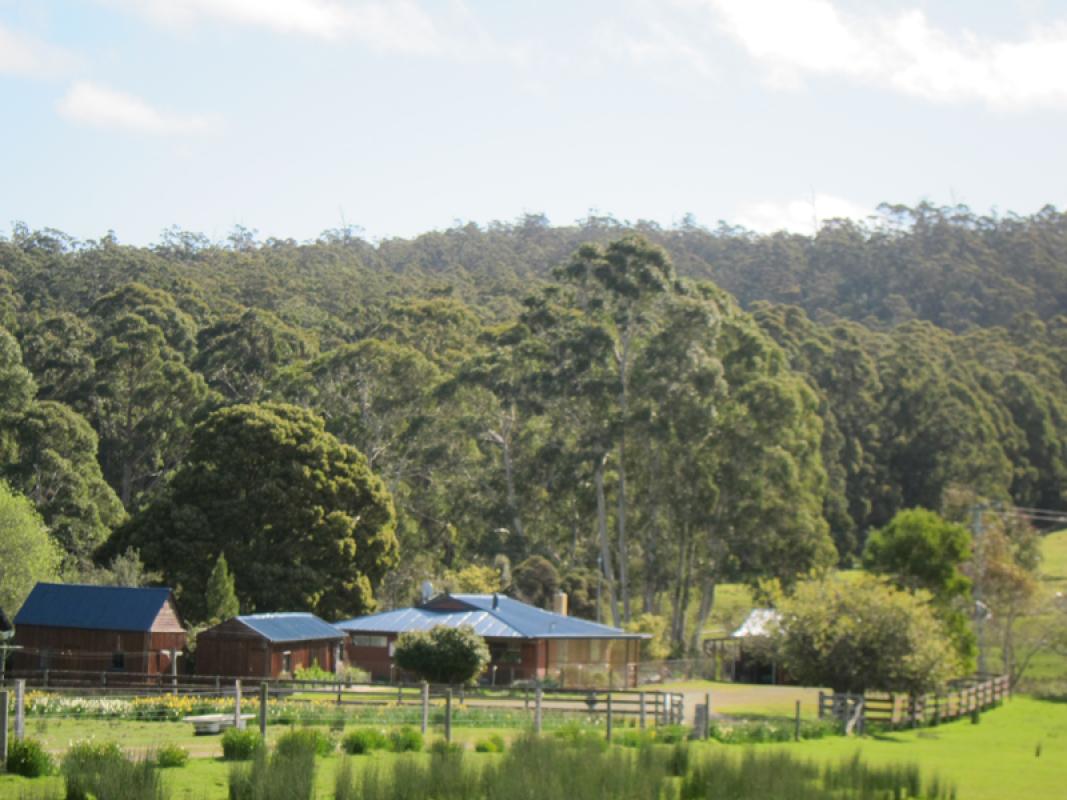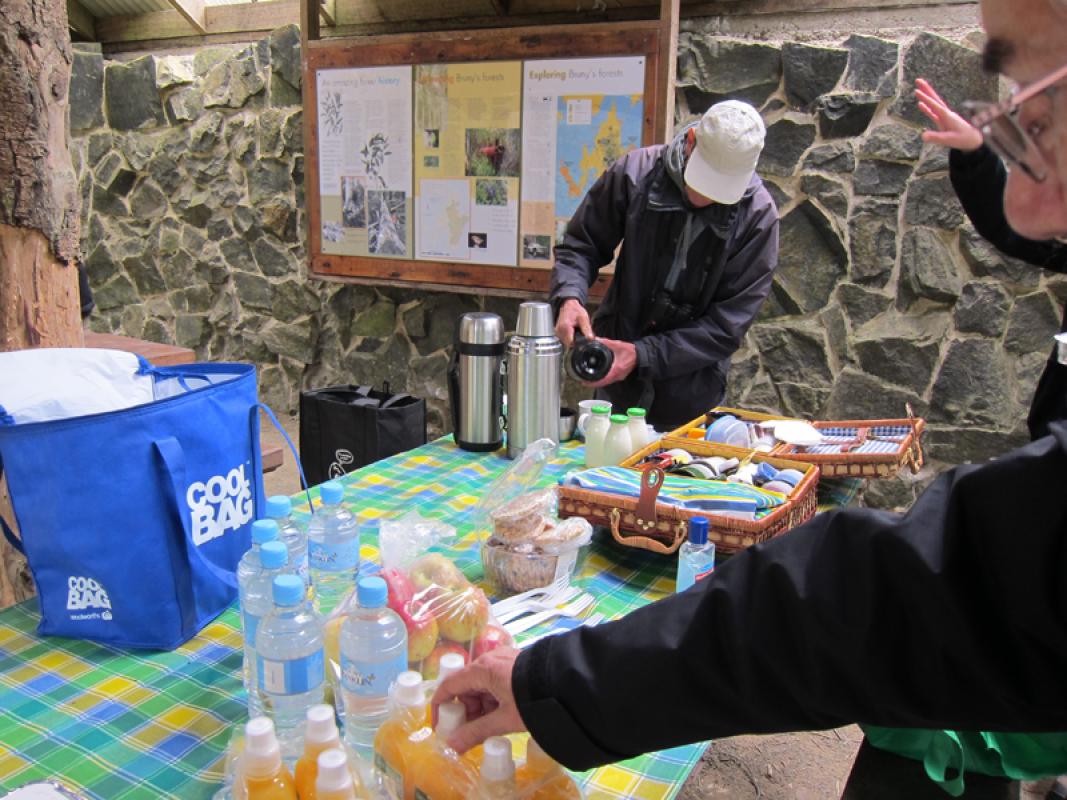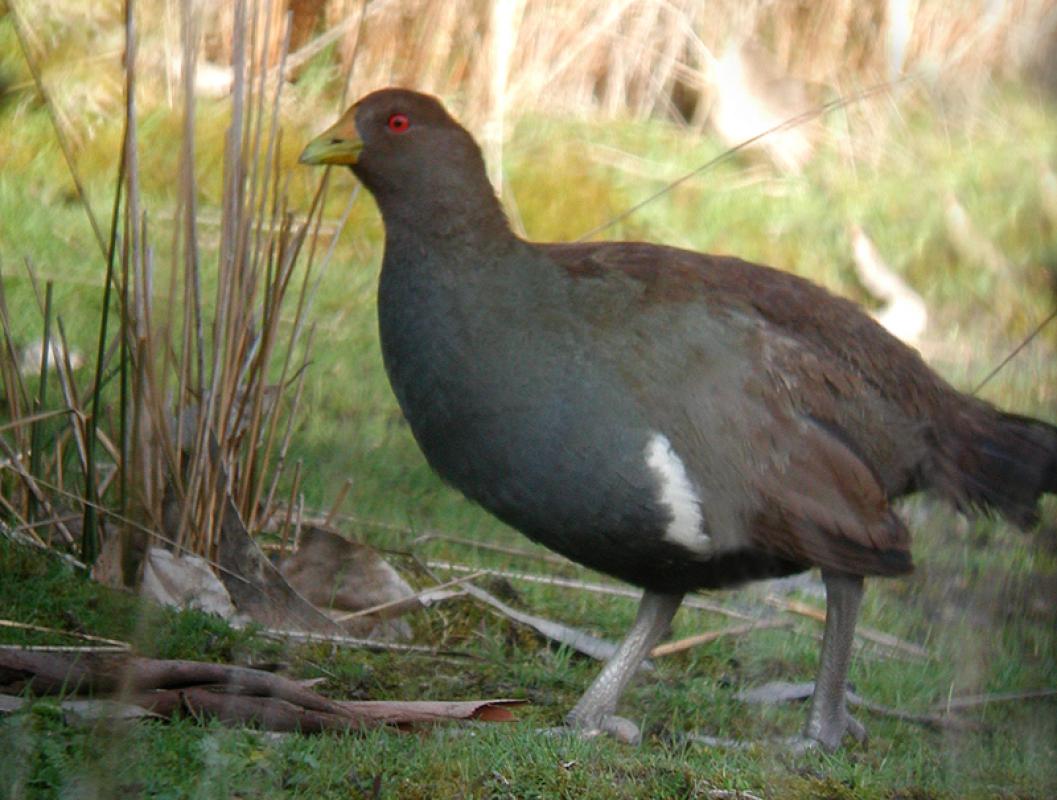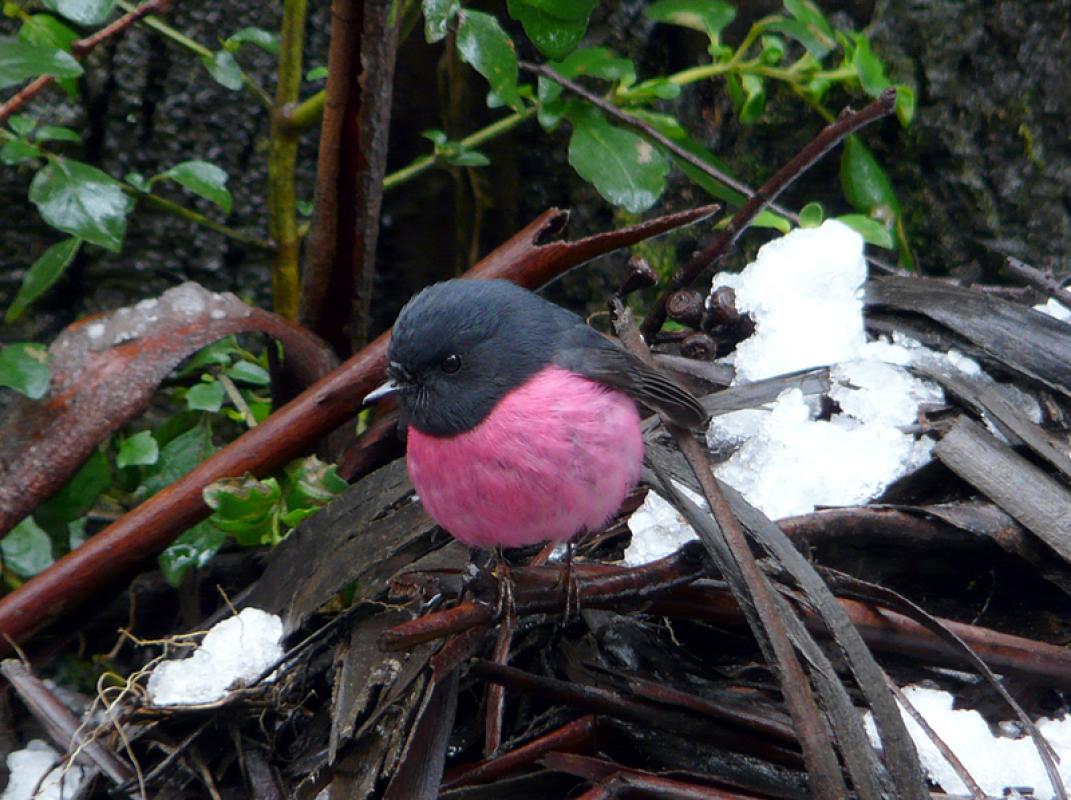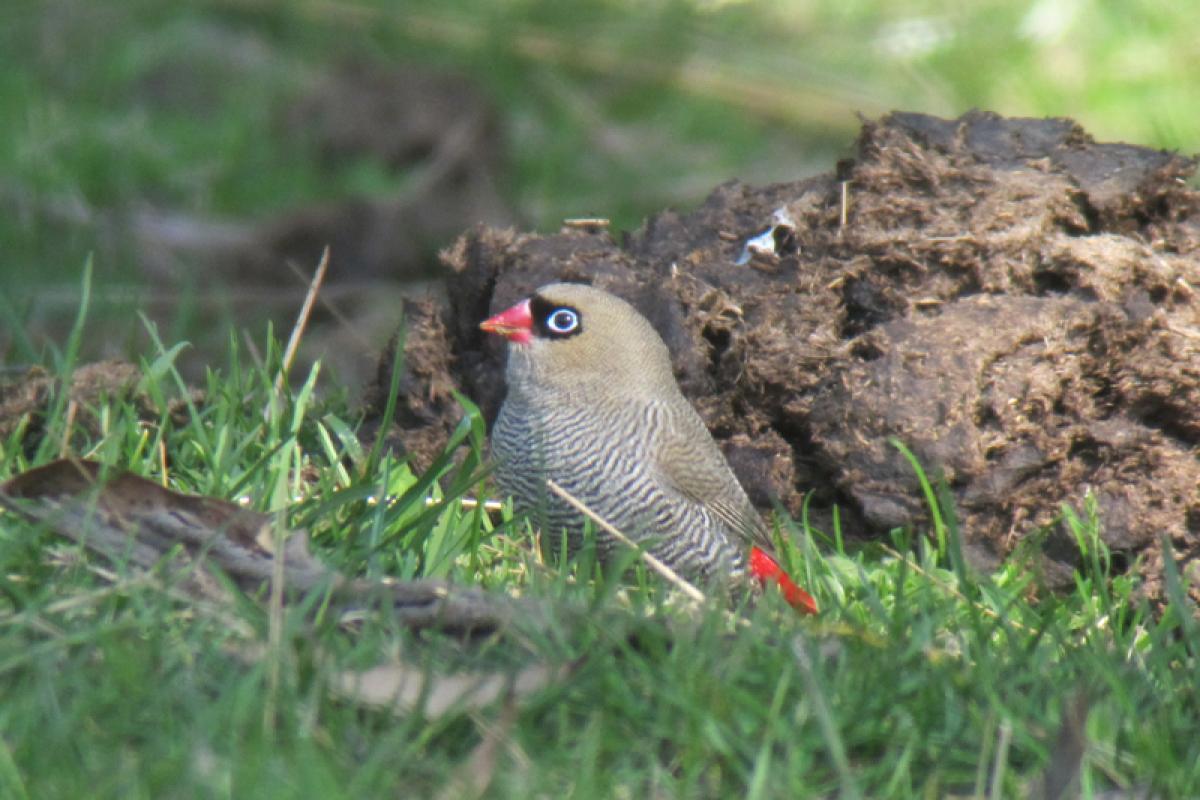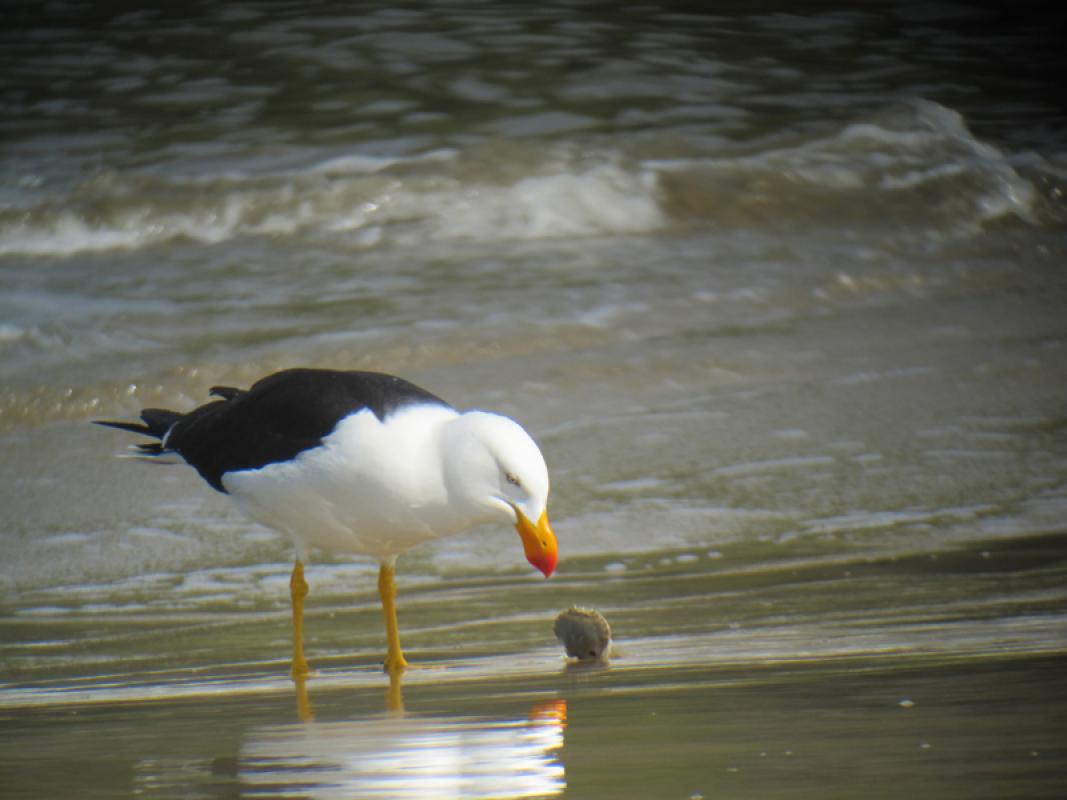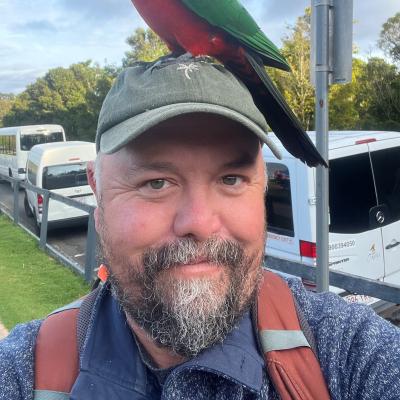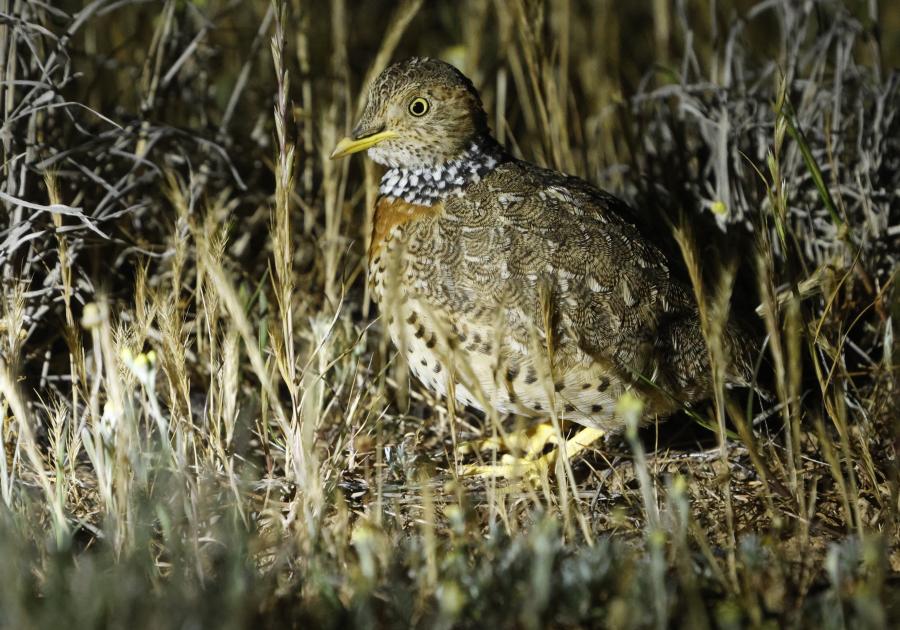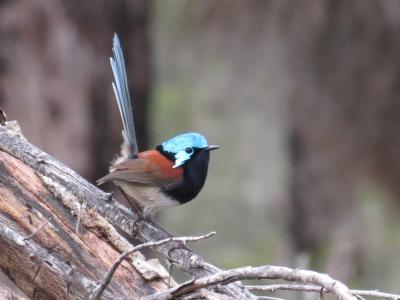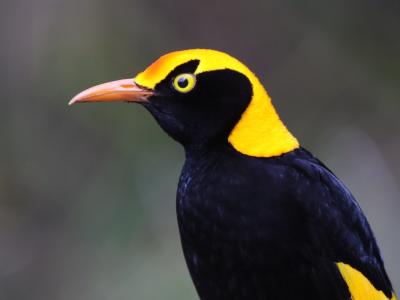Australia: Victoria and Tasmania
Plains-wanderer, Pardalotes, and Penguins
-
Sep 16 to Oct 3 2026
Gavin Bieber
-
Sep - Oct, 2028
Gavin Bieber
Tour Price to be Determined
2028
Tour Price to be Determined
Tour Price to be Determined
2028
Tour Price to be Determined
Our southeastern Australia tour passes through a wide variety of habitats and climates. The Victoria countryside may seem reassuringly familiar after two centuries of European settlement, but the birds that inhabit it are anything but. Large flocks of parrots feed along the highways and multicolored fairy-wrens and honeyeaters fill the woods, while kangaroos graze in the paddocks and Echidnas shuffle in the understory of giant eucalyptus trees. The area around Deniliquin in southern New South Wales seems much wilder, on the edge of the outback, and is home to major ornithological attractions, including the almost mythical Plains-wanderer. The Mallee around Little Desert National Park hosts the stately and shy Malleefowl, the world’s southernmost megapode, and often an array of spring-blooming terrestrial orchids. Tasmania holds many more avian treasures from the flightless and endemic Tasmanian Native-hen to the dazzling Pink Robin.
This tour if offered every other year and can be taken in conjunction with our Australia: Queensland and New South Wales tour.
Day 1: The tour starts in Melbourne at 2 p.m., when there will be an excursion to a local park to see our first colorful Australian birds, including Galahs, Sulphur-crested Cockatoos, Red-rumped Parrots, and Laughing Kookaburras. As well as these widespread species, this park has in the past produced less common birds such as Tawny Frogmouth, Purple-crowned Lorikeet, Eastern Shriketit, and Varied Sittella. It will be a relaxed affair, designed to introduce us to the colours and sounds of Australian birds. Night near the Melbourne Airport.
Day 2: We’ll visit the area southwest of Melbourne, where we will start by birding along a stretch of the Great Ocean Road, widely regarded as one of the most scenic drives in the world. At the Point Addis and Airey’s lookouts we’ll spend some time seeking out Rufous Bristlebirds as they lurk underneath the dense coastal heath. If conditions are good we have an excellent chance of tracking down Southern Emu-Wren and Striated Fieldwren around Airey’s Inlet. Then we will head back north to visit the amazing Werribee Sewage Works. The expansive ponds and shoreline at this surprisingly natural facility hold a wealth of birds. We’ll have our fill of waterfowl and waders perhaps including some of the rarer species such as Freckled and Musk Ducks, Fairy Tern, or Banded Stilt. Raptors are in evidence as well, with Swamp Harrier, Whistling Kite, Brown Falcon, and Nankeen Kestrel all regular. In the saltbushes and reedbeds we should find Striated Fieldwren and Australian Reed Warbler, and along the muddy verges we might spot an Australian Spotted Crake or flock of Black-tailed Native-hens. Brolga are possible too, out in the open fields, and with luck we might spot a Banded Lapwing.
In the late afternoon we’ll head a bit west to the rolling hills and dry Eucalypt forest of You Yangs National Park. We’ll pass by agricultural fields that may well hold our first flocks of Galah or mixed flocks of Little and Long-billed Corellas foraging in the shorter grass. We’ll look out too for hulking Wedge-tailed Eagles and perhaps foraging flocks of Musk, Purple-crowned, and Rainbow Lorikeets. The park itself is excellent for many dry-country birds, and we should encounter Red-rumped Parrot, White-naped, Black-chinned, and Brown-headed Honeyeaters, several species of Thornbill, Rufous and Golden Whistlers, Willie-Wagtail, Magpie-lark, and the perky Scarlet Robin. It will be a whirlwind of a day, with loads of new birds to digest! Night near the Melbourne Airport.
Day 3: Today we’ll spend the morning around Melbourne, looking for a selection of “staked-out” species including, with luck, Powerful Owl, and then head east of the city into the Yarra Ranges and on to Healesville, our base for the next two nights. Our actual itinerary varies from year to year as we take advantage of the local birding conditions. Once near Healesville, we’ll find ourselves surrounded by wet forests, laden with large ferns in the understory and towering canopy trees; a very different environment from the coastal plain of the day before. After dinner there will be a spotlighting trip in search of Greater Sooty Owl and Southern Boobook, and we should see Greater Gliders and, if we’re lucky, a Yellow-bellied or Kreft's Glider as well. Night in Healesville.
Day 4: Today we’ll make an early start to visit Badger Weir, where the great attraction is Superb Lyrebird, indisputably the world’s most remarkable mimic. It’s a bird that is easy to hear but hard to see. While walking the forest tracks and around the campgrounds in search of the great imitator, we should see delicate Rose Robins and the spectacular Eastern Spinebill, among others. After breakfast we’ll visit a local park where Australian King Parrots, various Cockatoos, and Common Bronzewings are abundant and provide excellent photographic opportunities. We’ll also seek out an active Satin Bowerbird bower and watch how the male decorates it with various blue items to entice females to visit and mate. In the afternoon we’ll visit Toolangi State Forest to search for Gang-gang Cockatoo, Pink Robin, Pilotbird, and Olive Whistler and to marvel at the ancient Mountain Ash trees, some of which are over 200 feet tall! Night in Healesville.
Day 5: If anything eluded us the previous day we’ll have an opportunity for a morning return to Toolangi or another nearby park, and then we’ll head north to the small country town of Chiltern. Our route will take us out of the coastal mountains into a swath of agricultural lands dotted with copses of trees, villages, and open fields. As we head northeastwards, we should be able to spend a bit of time with the colonial Bell Miner, a species of honeyeater with a particularly complex social behaviour. We’ll likely arrive in the Chiltern area in the mid-afternoon, with some time to bird around the town of Chiltern, finding birds like Black-chinned, Brown-headed, White-naped, Fuscous, and Yellow-tufted Honeyeaters. Thornbills can be common here, and we’ll spend some time teasing apart Yellow, Striated, Yellow-rumped, and Buff-rumped. Night in Chiltern.
Day 6: Chiltern-Mount Pilot National Park was set up in 1997 to protect the box-ironbark forest that once covered much of northeast Victoria. It is now home to one of the few scattered populations of the endangered Regent Honeyeater, and during our morning in the park we’ll search for this scarce species. Other birds that we hope to see include Turquoise Parrot, Speckled Warbler, and Fuscous and Painted Honeyeaters, the last a truly beautiful bird in its own genus. After a full morning in the park, we’ll head north to Deniliquin, crossing the Murray River and into New South Wales in the process. We’ll arrive in the Deniliquin area in the afternoon. While this area has many interesting species, the main reason for visiting Deniliquin is to search for Plains-wanderer, a unique species in its own family and our primary focus. It is a cryptic, buttonquail-like bird that can be very hard to find, but by driving at night across the area’s short-grass native pasturelands, accompanied by local expert Phil Maher, we have a very good chance of spotting this fascinating and rarely seen bird. Other possibilities on our night drive (the actual species present fluctuate from year to year with the climactic conditions) include Banded Lapwing, Inland Dotterel, Stubble Quail and chances for Little and Red-chested Button-quails. Night in Deniliquin.
Day 7: The time of our start will depend on how late we stay out the previous night, but we’ll spend the day in the Deniliquin area searching for local specialties that we are unlikely to see elsewhere during our tour, such as Black Falcon, Superb Parrot, Apostlebird, Diamond Firetail, and the iconic Emu. We’ll spend the day birding with local expert Phil Maher, whose intimate knowledge of the region is unsurpassed. We’ll likely find roosting Australian Owlet-Nightjars peeking out from tree cavities, and a bit further out west onto the plains we hope to find Striped Honeyeater and the dazzling White-winged Fairy-Wren. In the evening we’ll have a second chance for Plains-wanderer should we have missed it the previous evening. Night in Deniliquin.
Day 8: We’ll spend another morning birding around Deniliquin with Phil, and then in the afternoon we’ll drive west, back into Victoria. As we travel along the Murray Valley highway through Kerang, we’ll enter a large area of wetlands, collectively called the Kerang Lakes, and we’ll make frequent stops to take in the masses of birds here. A large ibis rookery, with both Australian and Straw-necked Ibis (often 20,000 birds), will be a particularly impressive sight. We’ll also spend a bit of time tracking down birds like Orange Chat and Rufous Fieldwren in the adjacent brushlands. Waders can be quite common here, including (often) Banded Stilts, wintering Common Greenshank and Marsh, Curlew, and Sharp-tailed Sandpipers. As the afternoon wanes, we might spot a Buff-banded Rail or Baillon’s Crake in the reeds, or with some extreme luck an Australasian Bittern or Australian Little Bittern. We’ll then drive on a bit further to our base for the night in the tiny town of Swan Hill.
Day 9: We’ll begin by visiting two small mallee reserves just a bit south of town. Although small, the Goschen Bushland Reserve has a history of attracting some of the rarer inland species. Stands of Long-leafed Emu-Bush should be in flower during our visit, and we’ll look for nomadic honeyeaters like Black, White-fronted, or (rarely) Pied foraging in the flowers. The park can be good for the dazzling Crimson Chat, handsome Hooded Robin, retiring Little Buttonquail, and nomadic Budgerigars, Cockatiels, and Zebra Finches. The nearby Tresco West Bushland Reserve holds similar species, as well as birds like Red-backed Kingfisher, Purple-backed Fairy-Wren, and Rainbow Bee-eater. Which of these species is present each year is dependent on weather, as many of them might move hundreds of kilometers seeking out the wetter regions of the interior. After lunch back in Swan Hill, we’ll drive a bit further west to Ouyen, passing by the largest salt lake in Victoria, where we might see White-backed Swallow, Blue-winged Parrot, Australasian Pipit, and Brown Songlark. Night in Ouyen.
Day 10: We’ll spend the whole day birding in the large Hattah-Kulkyne National Park, an almost 128,000-acre mallee reserve just a little north of Ouyen. The park encompasses semi-arid shrublands, stands of mallee, Black Box forest, River Red Gum riparian forest, and ephemeral wetlands. Due to its large size and varied habitats this park supports a wealth of birdlife, and we’ll look especially for such signature species as Pink (Major Mitchell’s) Cockatoo, Regent Parrot, Crested Bellbird, and the very scarce and often elusive duo of tiny spinifex-loving birds: Mallee Emu-wren and Striated Grasswren. Some more common species that will likely be new for us include Black-eared Cuckoo, Chestnut-crowned Babbler, Chestnut Quail-Thrush, Shy Heathwren, Gilbert’s Whistler, Inland and Chestnut-rumped Thornbills, and White-fronted and Yellow-plumed Honeyeaters. In the late afternoon we’ll head back to Ouyen for the night.
Day 11: We’ll traverse another of the large mallee reserves in northeast Victoria as we drive through Wyperfeld National Park. This huge reserve (larger and overall a bit drier than Hattah-Kulkyne) supports a few species of birds that are largely absent from Hattah. We’ll look for White-browed Treecreepers among the more common Brown Treecreepers, and depending on the weather and current road conditions, we might take one of several available walks looking for birds such as Redthroat, Rufous and Brown Songlarks, Mulga Parrot, Blue Bonnet, Striped Honeyeater, and White-browed and Masked Woodswallows. We’ll try to arrive at our base for the next two nights near Nhill by the mid-afternoon so we can have a brief siesta and then some time to explore the grounds of our excellent lodge. Here we should find the exquisite Diamond Firetail, skulky Southern Scrub-Robin, Tawny-crowned and Purple-gaped Honeyeaters, and striking Red-capped and Scarlet Robins. Night at Little Desert Nature Lodge.
Day 12: We’ll explore the Little Desert National Park, where, with some local help, we should be able to locate Malleefowl as they tend their large earthen mound nests. These impressive megapodes are always hard to find, but areas near our lodge are consistently reliable unless the weather has been markedly dry. Other special species that we’ll track down include the small Slender-billed Thornbill which inhabits the short heathland a little south of the lodge. Emu are somewhat common here, and with luck we’ll spot a hunting Spotted Harrier or perhaps flush some foraging Blue-winged Parrots. Patches of Stringybark Eucalyptus should hold Purple-crowned and Musk Lorikeets, along with the handsome White-fronted Honeyeater. After dark we’ll offer an outing to look for Southern Boobook, Eastern Barn Owl, and whatever frogs might be hopping about. Night at Little Desert Nature Lodge.
Day 13: We’ll depart Little Desert in the mid-morning after some additional birding. Heading south, we’ll arrive at the coast near Portland. We’ll spend the afternoon traveling east along the coast road, reaching Warrnambool in the early evening. Just south of Portland we’ll stop in at Point Danger, where Australia’s only mainland colony of Gannets breeds. At the lighthouse on Cape Nelson a bit further west, some scanning of the Southern Ocean might reveal soaring White-capped Albatross or Fluttering or Short-tailed Shearwaters. A walk around Fawthrop Lagoon could produce a furtive Lewin’s Rail or Spotless Crake, as well as a nice selection of waterbirds including flocks of Chestnut Teal. We’ll spend the late afternoon exploring the coastline of Killarney and Logan’s Beaches, where we might find the stunning Hooded Plover, along with Sooty and Pied Oystercatchers, Red-necked Stint, and Kelp, Silver, and Pacific Gulls. Sheltered lagoons along this stretch of coastline sometimes harbor Southern Right Whales in spring, and the scenery is hard to beat. Night in Warrnambool.
Day 14: Driving east from Warrnambool we will bird along the western end of the famous Great Ocean Road today, passing by a stunningly scenic coastline with towering rock stacks, arches and blowholes. Much of the morning will involve looking at a few of the famous locations like the 12 Apostles, but we will also find Australian Shelducks and Kelp Gulls out in the fields, Long-billed Corellas nesting in the seaside cliffs, colonies of Silver Gulls, and perhaps our first Latham’s Snipe lurking in some coastal wetlands. Our route back to Melbourne will vary from year to year depending on the ornithological possibilities. Night in Melbourne.
Day 15: We’ll take an early morning flight to Hobart in Tasmania and then drive south to catch the ferry to Bruny Island. En route we’ll stop to look for our first Tasmanian endemics, perhaps including enormous and flightless Tasmanian Native-hens, noisy Yellow Wattlebirds, and striking Yellow-throated Honeyeaters. After crossing to the island, we’ll stop first at the ferry terminal to look at the Black-faced Cormorants on the harbor pylons. All of Tasmania’s endemics occur on Bruny Island, most of them on the property owned by our local guide, Tonia Cochran. We’ll spend the afternoon walking around her private estate, looking in particular for Green Rosella, Dusky Robin, and Forty-spotted Pardalote. Night on Bruny Island.
Day 16: We’ll spend a delightful day exploring the forests and farmland of Bruny Island, searching for the remaining endemics: Tasmanian Scrubwren, Scrub-Tit, Tasmanian Thornbill, and Strong-billed and Black-headed Honeyeaters. We’ll also search for a number of species that are easier to find on Tasmania than on the Australian mainland, including Brush Bronzewing, Swift Parrot, Flame Robin, Crescent Honeyeater, and Forest Raven. Because it has fewer introduced predators than Australia, Tasmania is famous for having a more intact marsupial fauna, so after dinner there will be an optional night drive mostly in search of mammals, including Bennett’s Wallaby, Rufous-bellied Pademelon, Long-nosed Potoroo, and Eastern Quoll. We’ll also visit a bustling Little Penguin colony and see our first Short-tailed Shearwaters. Night on Bruny Island.
Day 17: The final Tasmanian endemic, Black Currawong, winters on Bruny Island, and at the time of our visit they may have all left for the Tasmanian mainland. We’ll leave the itinerary for this day flexible to accommodate this possibility; if there are none left on Bruny, we’ll return to Hobart in the morning and drive up into into the foothills, where the currawongs breed. In the late afternoon we’ll catch a flight back to Melbourne, where we’ll spend the night.
Day 18: Our tour concludes with flights home or, for those opting to connect with our tour of Queensland and New South Wales, a morning flight departs to the tropical city of Cairns, nearly 2,000 miles to the north (not included in this tour’s cost*).
Note: The information presented here is an abbreviated version of our formal General Information for Tours to Australia: Victoria and Tasmania. Its purpose is solely to give readers a sense of what might be involved if they took this tour. Although we do our best to make sure what follows here is completely accurate, it should not be used as a replacement for the formal document which will be sent to all tour registrants, and whose contents supersedes any information contained here.
ENTERING AUSTRALIA: UK, US and Canadian citizens may travel to Australia on a passport valid at the time of entry with an Australian visa or, if eligible, on a valid passport and an Electronic Travel Authority (ETA), which replaces a visa and allows a stay of up to three months. The ETA costs $20 USD and can only be obtained online. NOTE as of 2022 you must download the app for the ETA from the app store. The ETA must be obtained BEFORE departure and should be done as soon as you purchase your flights, just to give yourself extra time. Instructions as well as a link to download the app are available here: https://immi.homeaffairs.gov.au/visas/getting-a-visa/visa-listing/electronic-travel-authority-601#HowTo
It is also a good idea to take a photocopy of your passport and air ticket with you when travelling abroad. Copies can prove invaluable in helping you get replacements if your originals are lost or stolen. Obviously you should pack the photocopies separately from the originals.
COUNTRY INFORMATION: You can review the U.S. Department of State Country Specific Travel Information here: https://travel.state.gov/content/travel.html. Review foreign travel advice from the UK government here: https://www.gov.uk/foreign-travel-advice and travel advice and advisories from the Government of Canada here: https://travel.gc.ca/travelling/advisories.
PACE OF TOUR: Over the course of the tour, we’ll have start times varying from 6:15 to 8am. Our walks will be generally of less than a mile in distance and on level ground over even terrain. Some days will be broken up into optional sections, with a few pre-breakfast excursions, morning/afternoon trips, and, on some nights, after dinner spotlighting for nocturnal mammals and birds. You will be able to choose between all-day birding or some afternoon downtime on about a third of the days. On other days, especially when we are traveling from one area to another, opportunities to take time off will be limited.
We’ll usually return to the hotel in the early evening and we’ll almost always have a break of an hour to shower and relax before dinner.
Please bear in mind that if you are doing more than one section of this tour it will be a long trip, so it is important to pace yourself appropriately.
HEALTH: The Centers for Disease Control and Prevention (CDC) recommends that all travelers be up to date on routine vaccinations. These include measles-mumps-rubella (MMR) vaccine, diphtheria-tetanus-pertussis vaccine, varicella (chickenpox) vaccine, polio vaccine, and your yearly flu shot.
They further recommend that most travelers have protection against Hepatitis A.
No immunizations are required for visitors to Australia (unless you are visiting other countries en route).
Please contact your doctor well in advance of your tour’s departure as some medications must be initiated weeks before the period of possible exposure.
The most current information about travelers’ health recommendations can be found on the CDC’s Travel Health website at http://wwwnc.cdc.gov/travel/destinations/traveler/none/australia .
Elevation: We reach a maximum elevation of only 1500 feet during the course of the tour, around the mountains near Healesville and on Bruny Island in Tasmania.
Water: Public drinking water is safe throughout Australia.
Insects: Bring a strong insect repellent for protection against mosquitoes, sand-flies and leeches. In general we do not encounter high concentrations of biting insects during the tour but in the interior of the continent flies can be a real nuisance at times some years. Generally mosquitoes are scarce to non-existent but in wet years we may encounter a few.
Smoking: Smoking is prohibited in the vehicles or when the group is gathered for meals, checklists, etc. If you are sharing a room with a non-smoker, please do not smoke in the room. If you smoke in the field, do so well away and downwind from the group. If any location where the group is gathered has a stricter policy than the WINGS policy, that stricter policy will prevail.
CLIMATE: In general, spring weather in Victoria and central New South Wales is glorious, with daytime highs at most 24-25C (77F), and lows down to 8C (46F). Our time in Tasmania is generally colder, with daytime highs of only 16C (60F), and lows around 4C (40F). Occasionally late winter type storms can occur, resulting in colder than average temperatures. Wind and rain are always possible in the south (Melbourne, the coast and Tasmania), but the interior of the country is typically dry and sunny.
ACCOMMODATION: We’ll be staying in good quality hotels and lodges, most of which have private bathroom facilities in every room. Our hotels will vary from small but comfortable family-run in out of the way small country towns, to modern international airport hotels in Melbourne. Almost all Australian hotels provide fridges in the room, tea and coffee making facilities and hair dryers. They also have self-service laundry rooms. Some of the larger hotels have a laundry service as well. Note: Single rooms or rooms with en suite facilities are not always available during our two-night stay in Tasmania, as some cabins contain multiple bedrooms with a shared living area and bathroom.
Wi-Fi is surprisingly tricky in Australia but is getting better with every passing tour. As of 2024 all of our hotels offer some form of Wi-Fi access, and at most the service is reliable and fast. In addition, Airports and many restaurants have free Wi-Fi as well.
FOOD: We’ll be taking breakfasts at our hotels, lunches in local café’s or bakeries, and dinners (generally) in our hotel restaurants. Meals are expansive, hearty, and varied.
Drinks: A soft drink, a beer or a glass of wine is provided at lunch and dinner, as is coffee or tea. All other drinks or ‘personal’ drinking water for use in your room and during the day is the responsibility of the individual. Tap water is safe to drink and can be used to fill water bottles for daytime use. We will have a supply of water available in the van at all times.
Food Allergies/Requirements: We cannot guarantee that all food allergies can be accommodated at every destination. Participants with significant food allergies or special dietary requirements should bring appropriate foods with them for those times when their needs cannot be met. Announced meal times are always approximate depending on how the day unfolds. Participants who need to eat according to a fixed schedule should bring supplemental food. Please contact the WINGS office if you have any questions.
TRANSPORT: Transportation throughout most of the tour will be in a minibus driven by the leader. Participants must be willing and able to sit in any seat in our tour vehicles. During some portions of the tour a local Australian co-leader will accompany the group and will take the front passenger seat. Note that carry-on baggage allowances vary on the internal carriers, we can generally shift items from person to person to stay under the prescribed limits, check with the office if you have any concerns about your carry on allowances.
For our internal flights (Melbourne-Hobart-Melbourne) we use Australian-based airlines.
2024 Narrative
The intervening two years between our Southern Australia tours were wet, with widespread rains creating good breeding conditions inland for a host of birds. Over the six months prior to our 2024 tour a general drying trend was taking hold, which was especially prevalent in the mallee regions of Victoria. This meant that waterbird numbers were in general high, with many species beginning to concentrate back along the coasts. This made for excellent birding conditions in general, although the mallee specialists were thin on the ground. We had a thoroughly enjoyable trip, with 280 species of birds and 18 species of mammals recorded over the two-and-a-half-week trip. The tour passes through a remarkably varied terrain, from the stunning coastal headlands and white sand beaches along the southern coast, often with dense heath covering the coastal slopes to dry deciduous woodland, riverine forest and grass savannahs and the dense arid mallee scrub forests, endless agricultural fields and inland lakes, and the temperate rainforests and rocky intertidal zones of Tasmania. During our final meal we reminisced about our favourite birds and places, and virtually every place was picked by at least one participant as a standout. The beauty of many of Australia’s birds cannot be overstated, with an embarrassment of rich and boldly coloured birds to choose from. Sprightly and jewel-like Fairy-Wrens, whose tiny bodies seem to define the colour blue were mentioned as favourites by many. But with birds like Plains-Wanderer, Pink Cockatoo, Chestnut Quailthrush, Mallee Emu-Wren, elegant Hooded Plovers and Banded Stilts, striking Sooty Oystercatcher and a bewildering array of Honeyeaters to choose from the task of picking a favorite proved difficult for most. A most unexpected Orange-bellied Parrot on the first day won the overall vote for top bird, little wonder as the species numbers at most 75 wild individuals and during our tour most of these birds are already back in the southwestern corner of Tasmania where they breed. The mammals were superlative as well, with several sightings of Echidna, five Eastern Quolls, and a couple of seemingly frozen Fat-tailed Dunnarts among the best finds. As always, the many welcoming and friendly Australians, comfortable lodges and excellent (if often excessively large) meals were honorable mentions as well. I very much look forward to returning to this corner of Australia in 2026!
IN FULL
We met in the mid-afternoon of the first day for an introductory meeting and then some relaxed birding at the nearby Woodlands Historic Park. This afforded us an opportunity to get to know a few of the more common birds around Melbourne, as a bit of a primer for the first full day of birding on day 2. Woodlands Historic Park is a state park preserving an old homestead site and tract of the most southerly Victorian grassy woodland open forest. Several of the participants had arrived a day or two early and had spent some time exploring an even closer patch of habitat just a half-kilometer north of the hotel. On their travels there some locals had pointed out a Tawny Frogmouth on a nest, so we decided to stop in for a look on our way up to Woodlands Park. As we had hoped the bird was still present, sitting on a large horizontal limb that stretched out over a small creek. Since the trail was quite a bit elevated on a bank above the creek, we were able to study the bird at length and from a vantage point above its position. These hulking and shaggy plumaged birds with their oversized heads and thick bills resemble some kind of odd and armless muppet with a bristly moustache and oversized eyes; they exude a sense of Zen that would make even Eeyore jealous. The short walk also afforded us time to study our first Magpie-Larks, Red Wattlebirds and Noisy Miners, as well as passing White-necked Heron and Little Corella. As we started to walk back to the bus, we spotted a second Frogmouth (doubtless the mate of the one on the nest) which was nearly perfectly blending into a multi-hued Eucalyptus trunk.
Once at Woodlands Park we found the conditions to be quite windy, making the birding conditions less than optimal, but still, as soon as we were out of the van new bird species began to appear. The greeting party included our first Sulphur-crested Cockatoo and Galah and an inquisitive Little Ravens making their presence knows with their raucous calls. Right at the edge of the carpark we stopped to watch a family group of White-winged Choughs as they slowly foraged on the open forest floor. These very communal and odd birds superficially resemble crows, but their odd gait, red eyes, weak looking downward curved bills and small heads belie that comparison. Extended family groups of Choughs assist in building their large and perfectly formed adobe nests (in a more skilled fashion than I could manage with opposable thumbs), and the flocks forage together with near constant chatter between individuals. Along a tiny flowing creek, we picked out a few Striated Pardalotes that were chasing each other around in the canopy as well as our first Superb Fairywrens, with the brilliantly blue and black male a definite hit.
As is generally the case over much of the country, we found parrots to be a prevalent part of the avifauna. Although most people might most associate parrots with the thick jungles of the Americas it is here in the more open forests of Australia that the family really shine. Pairs of Eastern Rosellas were perching up above the trail, showing off their red, blue, green, white, and yellow feathers and looking somewhat like they were designed by a group of schoolchildren with an imagination and full selection of Crayola crayons. Several pairs of Rainbow Lorikeets, clad in a virtual color-wheel of reflective hues perched atop dead snags trying to outdo the Rosellas in the flare department. Sulphur-crested Cockatoos and Galahs appeared at regular intervals and we also enjoyed a few encounters with pairs of Red-rumped Parrots that were investigating potential nest sites along the trail. Not all the birds were brightly coloured, with several perched-up Black-faced Cuckooshrikes, foraging Tree Martins, a few more Noisy Miners and a couple of Common Myna, a not particularly welcome introduction from Asia all providing a bit of grounding to the otherwise gaudy colourscape. A few mammals appeared as well, with mobs of Eastern Grey Kangaroos loped along in the understory, watching our progress with interest, and occasionally bounding away as we approached, and the local European Rabbit population seemed to be on the increase, with several dozen hopping around the forest floor. The afternoon waned on us fairly quickly, with the winds bringing the day to a close a tad earlier than we had expected. We headed back to the hotel, happy with our smattering of sightings – we had arrived in Australia indeed!
Our first full day dawned overcast and quite windy, with intermittent rain squalls, again not the ideal conditions for birding. We decided that rather than seeking out generally skulky heathland birds in the winds it would be more productive to dedicate the entire day to exploring the sprawling open fields, marshes and shorelines that are contained in the magnificent Western Treatment Plant. This site is generally known to the birding world as the Werribee ponds, and is arguably the single best location in all of Victoria for overall bird diversity and abundance. At times, especially when much of the continent is in drought, the wetlands can support mind-numbing numbers of waterbirds, all waiting for the rains to return which will prompt them to flood away from the coast and into the seasonally wet interior. As the winter of 2024 was (and was continuing) to be a cool and quite wet winter we found the area to be devoid of throngs of near countless waterfowl and waders, but there was still an amazing array of birdlife to be seen.
Our first stop after meeting Simon Starr, our local guide for the day, who has the all-important key to the facility and extensive experience in the area was along one of the more westerly roads, where we were thrilled to enjoy a group of eight Brolgas that were foraging right along the road, occasionally even doing small bouts of displaying. We watched them for some time before turning our attention to the swarms of Welcome Swallows and Fairy Martins that were foraging over the grasslands. We picked out some perched and displaying Eurasian Skylarks, and even a single Striated Fieldwren that was sitting up for a surprisingly long time in the buffeting winds. Some shallow ponds held our first few dozen Australasian Swamphen, heaps of stately Black Swans; a species which serves as a great example of how things in the land down under feel at once instantly familiar but at the same time simply bizarre. All black swans with candy apple red bills and bright white wings? The fields held good numbers of Straw-necked Ibis, and here too was our first group of silvery-grey Cape Barren Geese that were feeding out in the grassy meadow near the back of the pond. These odd geese are of an uncertain taxonomic placement, but are likely most closely related to the extinct geese of New Zealand or perhaps the shelducks. The have the somewhat unique capacity to drink salt or brackish water, which permits them to survive on small islands around the Bass Straight that have no freshwater sources where most of the species breeds. In recent years pairs have begun to use more inland locations with suitable short grasses, and their population is on the increase. We spent the morning slowly birding along the northern loop drive which winds through a seemingly endless series of impoundments, many ringed with patches of reedbeds, and then reaches a stretch of the shoreline of Port Phillip Bay. Here we found excellent views of nearly the complete suite of southern Australian waterfowl. Grey and Chestnut Teal were the dominant species, but through the morning we picked up a smattering of handsome Blue-billed Ducks, our first Australasian Shovelers, Hardhead and snazzy Pink-eared Ducks. Here too were several bulky Musk Ducks, a loggerheaded duck with a stiff tail, heavy black body and dangling black wattle that is surely one of the oddest species of waterfowl on the planet. The ponds held foraging Whiskered Terns hunting low over the water; their dark bellies contrasting greatly with their pale white wings.
Just as we reached the shoreline our attentions were pulled completely away from waterbirds when a participant casually mentioned that there was a small parrot sitting in the road ahead of where we were parked. Quickly changing our vantage point, we popped the bird in scopes and were astonished to see a small and plump emerald parrot with bright yellow underparts. This is perhaps the rarest species of bird in the country, with a global wild population of fewer than 70 individuals. The Werribee area serves as a wintering zone for a few birds each year (the winter of 2024 high count by the parrot conservation counters topped out at 5) with the total population crossing the Bass Strait to breed in the remote Southwest corner of coastal Tasmania. It is, to put simply the rarest and most imperiled species of bird in the country, and this sighting represented a WINGS first outside of Tasmania! We took a ream of photos, but were not able to see the colored leg bands that would identify the bird individually, and within a minute or two the bird fluttered off the road and promptly vanished in the dense coastal scrub. After celebrating our luck with a selection of chocolate and cookies we turned back to the shoreline, finding our main target here, the Australian Fairy Tern quite easily. This is a small tern, which outside of breeding plumage closely resembles the more widespread Little, or more familiar to North American birders Least Terns. Happily, two of them were already sporting full caps with blocky white foreheads and white lores which quickly cemented their identity. The coast was heaving with birds, and here we tallied repeated views of Pied, Little Pied, Little Black and Great Cormorants, passing groups of Silver Gulls and the occasional Great Crested Tern, loafing Pelicans, our first hulking Pied Oystercatchers and bizarrely attired and shaped Pink-eared Ducks (which look like a duck designed by some up and coming fashion mogul determined to make a name for themselves). Here too were recently arrived flocks of migrant Red-necked Stint, with numbers of Curlew and Sharp-tailed Sandpipers mixed in and providing lengthy studies. We then moved a bit further north to a series of conservation cells, where along a quietly flowing canal we were thrilled to spot an Australian Crake foraging on the edge of the vegetation. Here too we spotted a pair of Black-tailed Nativehens, a locally scarce and nomadic species that is closely related to Moorhens but which prefers a more terrestrial lifestyle. The little canal also hosted a very bold Rakali (or Water Rat), a large native rodent that has evolved into Australia’s answer to the muskrat, with small webs between its fingers and a broad powerful tail. We watched it for a bit as it swam around in the shallow water and occasionally dove down to forage, looking for all the world like a miniature otter. The more open ponds held large flocks of Coots and Hoary-headed Grebes as well as excellent studies of more hunting swallows, martins and Whiskered Terns. Eventually we pulled ourselves away, pausing to admire Black, Whistling, and Black-shouldered Kites over the road as we headed out of the complex for a well-deserved lunch at a small café in the nearby town of Lara.
After lunch and a short stop in at a newly developed wetland at the edge of town where we were happy to enjoy the antics of another herd of Cape Barren Geese and enjoyed excellent studies of the widespread but stunning Crested Pigeons that were littering the lawn we headed back to a different section of the treatment plant for the remainder of the afternoon. On the way back to the site we scanned some paddocks near the Avalon airport and were rewarded with distant views of a pair of Banded Lapwing. This attractive white, black, red and yellow plover is a nomadic species that is scarce throughout its range and one that occurs only sporadically around Melbourne.
The morning winds had increased to an impressive amount, so we found ourselves birding using the bus as a blind wherever possible. This proved an unbelievably good decision, as no sooner had we drawn even with the first of the small muddy pools we were looking at a couple of Australian Spotted Crakes as they foraged unconcernedly just feet from our vehicle. These medium-sized dark crakes with their lightly spotted flanks, dull yellow legs and bill and brownish backs resemble the familiar Sora of the Americas and are often quite comfortable feeding in fairly open conditions near cover. While watching these birds we also picked out a Baillon’s Crake that was creeping about in just behind one of the Australian Crakes. A small species that is brightly clad in tones of rust and pale silvery-grey Baillon’s are a hard-to-find species through Australia, and more regular only far to the north. The rail show wasn’t over though as we were also treated to a simply mind-blowing session with a Lewin’s Rail that came right out into the open twice. The latter species is widely regarded as the hardest to see species of crake in the country, as it generally sticks deep into the marshes and is reluctant to come out to the edges. Perhaps the overcast skies and inclement weather helped us out on this one! Little Grassbirds and a couple of Australian Reed Warblers showed well here too, and in an adjacent pond we were able to get quite close to several flocks of waders which included a few Pied Stilts Red-necked Avocets and several more pairs of Oystercatchers. By the late afternoon conditions had worsened, with bands of showers hitting us at regular intervals. Most of the local birds were huddling down for shelter in the lee of vegetation, so after spending a bit more time driving around a series of shallow saltwater basins and enjoying side by side views of Royal and Yellow-billed Spoonbill and a nice selection of herons and egrets we decided to head back towards Melbourne, heads swimming with the host of new species that we had encountered over the course of the day.
The next day we again headed south of Melbourne, this time reaching the coast of the Southern Ocean. Our first stop was at the headlands at Point Addis; a coastal bluff near the beginning of the world-famous Great Ocean Rd. We arrived to overcast and blustery conditions, but there were still few intrepid surfers coasting the swells below the point! We scanned out to sea, spotting good numbers of Australasian Gannets and a couple of White-capped Albatrosses that were close enough to make out the pertinent fieldmarks with just binoculars. A few Great Crested Terns and Great Cormorants passed by as well, and well offshore we spotted a feeding flock of Gannets that were hunting over a small pod of (likely) Bottlenose Dolphins. After a ten-minute vigil we turned our attentions towards the dense coastal heathland that covers most of the point. Sprightly little Superb Fairywrens a few Welcome Swallows and our first cooperative White-browed Scrubwrens were around the carpark as we set off back down the road. Our main target for the area was Rufous Bristlebird. The Bristlebirds resemble an odd cross of a Laughingthrush and a Thrasher, and are one of the several ancient endemic passerine families that form the basal clade of the passerines. The three extant species are all range-restricted in scattered coastal heathlands around South and East Australia and are generally hard to see well. We heard several birds sounding off from the depths of the nearly impenetrable heath, but as we neared the bathroom block we were stunned to see a Bristlebird charging full speed down the edge of the road coming right for us! A second bird popped out soon after and the two proceeded to sit in the middle of the road, occasionally singing and raising both wings in an apparent display! After describing to the group this species generally retiring habits just moments before I was only too happy to be proved wrong (if only I hadn’t left my camera in the car)! Elated with our luck we headed back towards the main road, stopping at a small carpark where we soon tracked down a singing Fan-tailed Cuckoo, teased up our first pair of chubby little Brown Thornbills and found our first Laughing Kookaburra, surely one of Australia’s most talismanic species. A quick stop in a large patch of coastal heath near the little town of Anglesea failed to produce and Emuwrens; though this was hardly a surprise given the windy conditions. We did locate a very vocal and cooperative Grey Shrikethrush that perched up and looked us over with an appraising gaze, perhaps hoping we would toss some crackers or raisins at him and our handsome male Australian Kestrel. Since Emuwrens are virtually impossible to find in high winds we decided to head up into the foothills of the Otway Range, where we hoped we might find some more sheltered conditions. If anything though it was even windier there, and significantly rainier. We walked down a small sandy track through the dense understory, picking up several magnificent Wedge-tailed Eagles soaring along the ridges, a passing pair of diminutive Blue-winged Parrots, two very cooperative and flashy White-eared Honeyeaters and, for some, a male Southern Emuwren which came up in a tall shrub and actually showed off its namesake filamentous tail and bright blue throat for several participants. Down another side road we stopped to watch a couple of small puddles that were attracting a host of small birds down for their daily bath. Among the by now somewhat familiar Superb Fairywrens and Brown Thornbills we also noted our first perky Gray Fantails and a small group of frenetically moving Striated Thornbills. Dropping back to the coast we stopped in along the sandy river mouth at Anglesea, where we spent a bit of time studying a Red-capped Plover that was foraging on a small sand spit, and a mixed herd of foraging Maned Ducks, Galah and Sulphur-crested Cockatoos that were out on the park lawns. We took lunch at a local bakery along the coastal road, which provided a good introduction to the world of Australian meat pies and the intricacies of ordering Australian coffee. As we loaded back up into the car the rains started in earnest, and rather than deal with locally poor weather conditions head north to check out a small wetland in the city of Geelong. It took a bit of time to find some patches of marsh that were open enough, but once we did we soon flushed a couple of Latham’s Snipes that rocketed out before settling in taller grassier marshes off the road. Also known as Japanese Snipe these often-flighty shorebirds largely winter in the Southeastern parts of Australia. Wanting to skirt around Melbourne before traffic became too much of an issue we ventured north, angled across the northern edge of the city and then continued a further East through the vineyard filled Yarra valley and on up towards the well-forested Yarra Ranges and our base for the next two nights in Healesville. In the small town of Diamond Creek we noted a lot of lorikeets feeding in some flowering trees while we were sitting at a red light. After some jockeying around we returned and parked, where we quickly pinned down a single Musk Lorikeet that was clambering around over our parked bus. Smaller and shorter tailed than accompanying Rainbow Lorikeets, Musks also sport a brighter green back, a fabulous crimson eye stripe and a golden patch on their flanks. As we settled into our comfortable rooms near the Healesville Sanctuary the surrounding wet forest was hosting an array of new birds, though given the hour we didn’t spend any time as a group taking them in. A few pairs of Crimson Rosellas, clad in their trademarked crimson and royal purple came in to feed just off the main building though, and a few participants took advantage of our hour off before dinner by birding the edge of the clearing and ogling their first Silvereyes and Eastern Spinebills. With significant rain and persistent winds forecast for the night we elected to move our scheduled nocturnal birding to the following day, so after dinner we popped off to bed, eager to arise the next morning to see what the wet forest had to offer us.
The unsettled weather continued the next day, with every hour seeming to bring new conditions, rain, drizzle, sunshine, wind, and even briefly light hail, which made for quite a dynamic day. We began with a pre-breakfast visit to the nearby Badger Weir Picnic Area, surrounded by light fog that was swirling around the towering Mountain Ash trees, a rushing creek, tree ferns, Nothofagus Beech Trees and a multitude of other Eucalypt species. We parked near the entrance gate and slowly walked the half-mile paved road up to the picnic area. New birds came slowly but steadily, with a cooperative White-throated Treecreeper, stunning male Golden Whistler and sprightly but eventually showy male Rose Robin that was bouncing around in the canopy above the road. Initially it remained stubbornly backlit against the overcast skies, but with a bit of patience we were able to discern its lovely neon pink breast to good effect. A bit further on we located our second species of Australian robin, with a pair of Eastern Yellow Robins in the midstory. Although they were a bit damp and bedraggled looking, we could still make out their bright yellow underparts and generally perky demeanor. We found the understory to be rather quiet, but with some patience we teased out good views of Gray Fantail, Striated and Brown Thornbill, White-browed Scrubwren and a surprise pair of Olive Whistlers; a rather husky whistler with a subdued color palette and tendency to stay low in dense wet vegetation. Here too we spotted a Brown Goshawk soaring over the trees. Once up at the picnic ground our run of luck continued, with a male Superb Lyrebird, sporting a complete and quite spectacular tail was scratching around in the leaf litter near one of the picnic shelters. He allowed us excellent views for several minutes before tiring of the attention and strutting off into the denser forest along the creek. Superb (and the closely related Albert’s) Lyrebirds are the largest species (and among the oldest) species of passerines. Accomplished mimics, they are perhaps best known to the general public for their starring roles in many a nature documentary concerning Australian wildlife. After the bird had stalked off our thoughts turned to breakfast, so we headed back to the hotel for a proper meal.
We then met up and spent a bit of time birding the forested edges of the lodge grounds, where we successfully tracked down a calling Shining Bronze-Cuckoo, chattering flocks of White-naped Honeyeaters and Silvereye, a seemingly irate Lewin’s Honeyeater and several hyperactive Eastern Spinebills. The latter species is a particularly flashy honeyeater, small and hyperactive, and coloured in a complicated array of black, bronze, buff and white feathers.
By mid-morning the conditions had markedly improved so we decided to spend the rest of our time slowly birding the myriad dirt roads that snake uphill through Mount Leonard and the Toolangi State Forest. Here we were seemingly in a different world as we drove up in the shade of towering Mountain Ash trees, surrounded by fast moving creeks, stands of impressively tall tree ferns, Nothofagus Beech Trees and a multitude of Eucalypt species. We drove slowly up the winding forest road, listening for signs of bird activity along the edge of the road. It didn’t take long before we encountered a flock of birds moving high up in the canopy. Since these Mountain Ash Trees are over a hundred feet tall the canopy is rather far away, but with some patience we spotted a foraging Eastern Shriketit among the Brown and Striated Thornbills, Gray Fantails and Golden Whistlers. This rather uncommon bird can easily be missed on tours, as the birds tend not to vocalize much and are somewhat lethargic as they feed by stripping bark strips from the canopy looking for insects underneath. Neither a shrike nor a tit, their bushy crests and bold black and white face pattern vaguely resemble an oversized chickadee, and their huge bill (more akin to a Cardinal’s than a Shrike’s) is hooked on the end like a shrike. We managed to get the bird to come quite a bit lower, but unfortunately just as it started to settle on the road edge another car zipped by and flushed it well back off the road. We drove up higher, surprised to see a couple of Superb Lyrebirds crossing the road; a good sign that their local population is doing well. As we neared Tangelfoot campground we managed to finally pin down a Gray Currawong that perched in a useful spot for us (a bit of a relief after seeing a half-dozen or so rather poorly over the prior two days). Here too we spent a bit of a rainy time attempting to track down a pair of calling Pilotbird. This species is a generally reclusive and largely terrestrial bird that frequents the dense understory of these wet forests. Although we did find see both birds close to a road the impenetrable tree ferns and shrubs largely blocked our view (though a few participants did see motion, and two or three saw the whole bird briefly behind the greenery). We had much better luck though with several handsome Flame Robins that were sitting up in the understory, glowing like small orange-red beacons against the deep green background. The rains settled in again so we headed back down to Healesville for lunch at a local bakery and then enjoyed a brief break at the hotel.
For the afternoon we headed over to the small park that lies below the huge Maroondah Reservoir. A stop along a nearby side road netted close but brief views of a Buff-banded Rail scampering around a small grassy marsh, our first Common Bronzewings and a small pond with a few assorted cormorants and waterbirds. Once we reached the public park below the reservoir, we spent a bit of time ogling the local largely habituated birdlife. It was pleasant having Sulphur-crested Cocaktoos, Little and Long-billed Corellas, Galah, Noisy Miners, Eastern and Crimson Rosellas and Crested Pigeon parading around on the lawns and sitting within arm’s reach, and at one point a Rainbow Lorikeet even perched on a few participants for some selfies. A saunter around the perimeter of the park revealed our main quarry for the afternoon as we found an active Satin Bowerbird bower tucked up in one of the small patches of brush. Generally, when birders think of bowerbirds or birds of paradise they think of New Guinea, but both bird families are represented in Australia as well. Rather than advertising their fitness through intricate song or flashy plumage (though the purplish-black males with their impossibly violet eyes have flashy plumage in spades) male Bowerbirds are the architects of the avian world. Carefully constructing a short runway bordered by walls of small sticks and ending in a wide flat mat lined with dried grass and straw these portly birds then decorate the mat with all manner of blue objects. Naturally a rare colour, blue used to be restricted to certain fruits or ephemeral flowers, and amassing and curating those hard-to-find objects would have made a Satin Bowerbirds job as an interior decorator difficult. These days however people have introduced all sorts of perennially blue objects that the male birds can collect to set their potential mates hearts aflutter. Bottle tops, drinking straws, bits of plastic bags and the odd bright blue zip were carefully festooned around this bower. When we found the bower, the there was no sign of the attending male but a second visit before we departed revealed both the male (sitting up in a nearby tree) and the more staid but still quite distinctive female. In some ways this is the more attractive plumage, as the lilac-coloured iris stands in good contrast to the neutral green and brown tones of the body. The adult male is truly snazzy in good light, but often looks just black from many angles. The park held several haughty Laughing Kookaburras and a good number of Eastern Grey Kangaroos, including a couple of truly impressively large males.
We had hoped to get some owling in after dinner, but the rains returned and were strong and steady enough to preclude any real hope at seeing any active or vocal owls. We tried a few spots though, and even with the poor weather did find an impressive number of undeniably cute black and white Southern Greater Gliders sitting up in the canopy.
The next morning, we met again for a short pre-breakfast jaunt. Starting out in the carpark we immediately noticed an uptick in the bird activity with the arrival of some actual sunshine. The large Eucalyptus trees were beginning to flower, and there were at least two dozen Yellow-faced Honeyeaters bouncing around the tree. A pair of Australian Shelduck and two Swamp Harriers passed overhead, and we again enjoyed close views of Gray Shrikethrush and Eastern Spinebill. We then spent about an hour slowly birding around the margins of Healesville, where among many by now somewhat familiar species we found a cooperative (finally) Spotted Pardalote that came down to eye level and actually sat still for over a minute. After several poor sightings of this living jewel (surely one of the most beautiful birds in the world) being able to study its intricate and bold colours at close range in the morning sun was a special treat. Nearby we found a female Satin Bowerbird at a much better angle and distance than the one the prior day. We didn’t run into any black cockatoos, but definitely improved on our views of things like Little Black Cormorant (with excellent views of its baby-blue eyes), Australian King-Parrots, and Hardhead. After breakfast we packed up and started the drive through the quite scenic Yarra Ranges National Park. Near the top of the pass over the Great Dividing Range we made a brief stop to walk around a small picnic area, where we found a couple of quite approachable female Flame Robins that were foraging on the ground. We then descended the ranges to the north, where we soon made an impromptu stop in the small village of Buxton to better study a flock of Long-billed Corellas that were foraging along the edge of the highway. Once we left the Great Dividing Range behind we began to cross an extensive swath of rolling cleared hills, with sheep and cattle farms, and small towns with names like Yea, Strathboogie, and Yarck that several participants remarked looked very much like parts of the eastern US or southern England; if not for the occasional road kill Kangaroo or field full of Cockatoos.
Our first planned stop was near the small town of Alexandra, where a good-sized colony of Bell Miners has historically occurred along a small forested creek. We parked and could immediately hear their piercing cries emanating from the Creekside woods, but despite trying several vantage points couldn’t quite get close enough to them for a view as the birds were all rather annoyingly on the other side of the creek and on private property. A beautiful male Rufous Whistler showed very well for us here though. We moved back to another spot higher above the creek, and here, with a bit of patience were finally able to spot a couple of Bell Miners as they perched up in the canopy below us. Bell Miners are a colonial, cooperatively breeding species that specializes on feeding on small scale insects called Lerps and the sugary liquid that they produce. Bell Miners are aggressive towards competitive species, chasing other species out of their large colony sites, and thus reducing predation pressure on their chosen chefs. This makes them effectively farmers of the lerps, a unique arrangement in the bird world. Our vantage point afforded good views of the surrounding fields as well, and we were happy to spot our first Dusky Woodswallows and a nice selection of waterbirds (including two stunning Pacific Herons and a wonderfully picturesque pair of courting Black Swans) while we waited for the miners to behave themselves.
We had lunch at a very enterprising and quite famous bakery in the town of Yarck. The small bakery has expanded into a large branded grocery store, with a host of locally sourced treats, cups and clothing on offer as well as their large selection of pies and pastries. Moving further north we acted on a tip from a friend and called in to a small side road near the town of Glenrowan. This small community is famous in Australia as the site where the final showdown between the outlaw and folk-hero Ned Kelly was finally captured by the Victoria constabulary. The town is taking full advantage of this, with a new Ned Kelly museum, gun reenactments, touristy shops and all the accompanying tat. Happily for us though our destination, after a quick stop at the decidedly overbuilt new public bathroom block was much quieter. As soon as we stopped we could tell that the roadside trees were quite active. In quick succession we picked out our first hulking and vaguely menacing Noisy Friarbirds, a small group of White-browed Babblers bouncing around in the open and a half-dozen Rainbow Bee-eaters, likely just arrived back from their wintering grounds up north. Shortly thereafter we spotted a couple of Brown Treecreepers foraging along the fenceline, but our attentions were quickly pulled away when two bright green parrots whizzed past. It took a bit of scanning but we eventually found one of the birds quietly foraging in a tree on the other side of the road. The birds red face, throat and shoulder and tricolored forehead cinched its identification as a Swift Parrot! This very colorful species is another of Australia’s imperiled species; they breed in Tasmania, and, like the Orange-bellied Parrot undertake an oceanic migration across the Bass Straight to winter around the eastern mainland of Australia. A combination of factors are working against them both on the mainland in winter and on their breeding grounds, and the population estimates have shrunk by 75% in just the last decade. Conservation groups are concerned that the global extant population is only between 400-700 individuals. We often see Swift Parrots on their breeding grounds in Tasmania, but as the birds tend to move breeding sites from year to year there is no guarantee of success there for us, so we were thrilled, if a bit sobered to be able to track down a few birds on their wintering grounds.
Our last stop for the day was in the sprawling Chiltern-Mt. Pilot National Park, where we spent a very productive hour and a bit exploring a patch of the park centered around a small dam and picnic area. The park protects a critically important amount of the countries once extensive box forests; a habitat that has been extensively cleared for agriculture, with less than 5% of the original cover remaining in widely scattered and separate blocks. Around the dam we were happy to spot a (likely) recently returned Sacred Kingfisher sitting motionless on an overhanging branch and a breeding plumaged Australasian Grebe swimming out in the middle of the shallow water. The trees around the carpark held a trio of new honeyeaters for us, with dozens of Fuscous, a few handsome Yellow-tufted and a small group of Black-chinned. White-winged Choughs were stalking around in the understory, and a bit further around the loop drive we tracked down a perched White-bellied Cuckooshrike, male Mistletoebird and a small flock of pretty little Red-browed Firetails. As we headed on to the hotel in nearby Chiltern, we paused to admire a few Swamp Wallabies along the road as they bounded off at our approach.
The next day dawned warmer and sunny, and we set off after breakfast for the nearby Bartley’s Paddock, a small clearing that is a locally famous birding patch filled with short golden wattle trees and ringed with tall Eucalypts laden with mistletoe. Along the southern edge of the clearing, we encountered a heady mix of small birds that were busily foraging. Thornbills were particularly well represented, with Striated, Yellow-rumped and Buff-rumped present and in close proximity which allowed us to tease apart these similar birds. Gray Fantails were common here too, and we certainly enjoyed excellent views of several stunning male Mistletoebird that were sitting up in a bare tree overhead. Also eliciting enthusiastic approval was the large group of Silvereye that flew in to us at eye level, fairly shining in their buffy, yellow and moss green hues. Here too we tracked down some singing Western Gerygones, a species whose bouncy flute-like calls definitely outshine their very somber gray and brown plumage. The walk around the back of the paddock produced close views of a very cooperative Horsfield’s Bronze-Cuckoo, a seemingly inexhaustible number of Fuscous and Yellow-tufted Honeyeaters, our first Brown-headed Honeyeaters and a couple of little groups of Weebill, Australia’s smallest bird species. Probably the most memorable sightings here though were of robins. Round, small, often bold and utterly charming the Australian robins are some of the cutest birds in the country. Roughly in the center of the clearing we found a male Jacky-Winter; a gray-coloured species with white in the tail and a love of drier forests. As is typical the bird was unconcerned by our presence, hunting from its chosen perches and then perching with a twitching tail as it devoured some tasty morsel. On the way back towards the bus we were thrilled to locate a male Red-capped Robin perched in the understory. This is a particularly beautiful robin, certainly much more fashion conscious than the Jacky-Winter with its stunning scarlet chest and cap offsetting a smart looking black and white body.
After this whirlwind of new species, we stopped in back at the hotel to check out and then went a bit south of the motorway to bird a different section of the park. Here we found a section of forest where the understory was a bit greener and more springlike and spent about an hour walking around and just generally enjoying the sunny weather and host of birdsong. Our time was productive, with excellent views of a wealth of species that were, just a day before, new to the group. The “only” new species for the walk was Olive-backed Oriole, a large green and white oriole with a markedly red bill and lovely three-parted song. We crossed paths with a few groups of White-winged Choughs that were stalking around in the recently greened-up undergrowth, and at one particularly productive spot spent about twenty minutes watching a foraging mixed group of honeycreepers, Dusky Woodswallows, Brown Treecreepers and Black-faced Cuckooshrikes that were moving along a small forested valley. The floral show here was also interesting, with several species of small native orchids including many showy Waxlip Orchids along the trail.
After lunch at the Chiltern Bakery, we started the drive north and west, crossing over the Murray River and into New South Wales and arriving in the small city of Deniliquin in the late afternoon. Over the two-hour drive we were sidetracked a few times, with an impromptu stop at a small lake near Rutherglen that stretched to almost an hour. Here we found single Black-fronted and Red-Kneed Dotterels (the latter a new one for our tour, and a handsome and portly species that sports a black dinner jacket and white tie), a wonderfully close and confiding Pink-eared Duck, two more Black-tailed Native-hens, our first Peaceful Dove and a Restless Flycatcher that (unfortunately) more than lived up to its name. At a fuel stop in Finley, we found some flowering trees that were being attended by a nice mix of birds including Musk Lorikeets and White-plumed Honeyeaters. We pressed on though, bound for our mid-afternoon meeting with Phil Maher in Deniliquin and subsequent trip out to the plains north of town to look for Plains Wanderer. We made good time, and were all checked in and ready to head out for the evening with Phil at the appointed time. Phil is undoubtedly the world authority on this enigmatic species through his work monitoring a small population of this cryptic and nocturnal bird out on the plains west of Deniliquin and showing them to grateful birders for decades.
We drove out to the northwest of Deniliquin, quickly losing the riverine forests of the Edwards River and soon after entering the open saltbush plains of the Hay Plain. Flocks of bright pink Galahs jumped off the road edge at our approach, and raptors including Australian Kestrel, Brown Falcon and Black and Black-shouldered Kites patrolled the road. A few Laughing Kookaburras and Pied Butcherbirds were perched on roadside wires, and little groups of Straw-necked Ibis dotted the occasional field. As we drove onto the private sheep station roads off the Cobb Highway we were thrilled to spot our first Emus dashing across the fields with their odd feathered skirts flouncing as they ran. The first group stopped when we did, and then proceeded to walk back towards us, apparently not knowing what to make of the vehicles. When we started the engines up again discretion got the better of them and they turned and ran. Over the course of the afternoon, we were amazed to find over 50 of these iconic birds along the roads, a testament to recent breeding successes from the rainy season of 2022. The entrance road proved good for bird activity, with quite a few Australian Pipits, several Brown Songlarks, our first Singing Bushlarks, and a couple of groups of White-winged Fairywrens showing well. The dazzlingly beautiful male with its snow-white wings and electric blue body is truly a breathtaking species. Mammals put on a great showing as well, with small mobs of Eastern Grey Kangaroos, a few darker Western Grey Kangaroos and a surprisingly large (compared to our prior visits) number of Red Kangaroos. As it started to get dark we parked near one of the land owners field houses and enjoyed a picnic dinner as the stars began to appear out of the fading sunlight. Just after we wrapped up our meals we heard a pair of Southern Boobook calling from the nearby trees. Our run of excellent luck continued, with one bird popping up on a tall dead snag just a few meters away from the parked bus. Here too was a calling Eastern Barn Owl which drifted over us and circled before vanishing back into the night. Recent taxonomic shifts with the globally distributed “Barn” Owl mean that the birds in Australia are now Eastern Barn Owls, distinct from birds in Europe/Africa and the Americas. By this point the time was ripe for our main target, so we hopped back in the bus and headed overland to one of the station paddocks.
Once at the appropriate field we wondered what about this patch of plains made the area special. Phil informed us that the birds prefer a certain mixed structure of grass, with the appropriate amount of open ground and native forb growth. The birds are picky, and if the grasses are too thick or tall, or the ground too open they move to find better conditions. We parked and then set off further into the paddock on foot armed with cameras, flashlights and (in Phil’s case) a shiny new night vision monocular. The ground was level and firm, with a good amount of new plant growth. We would walk a hundred or so meters and then stop, allowing Phil to scan with his handy device that makes the body heat of hidden mammals and birds easy to spot against the cooler background. The land owner Robert joined us and he too had one of these magical devices (as did one of our participants), vastly enlarging our effective sweeping distance. A few minutes into the walk we spotted a resting Australian Pipit tucked into some grasses; proof that these new devices really do work. A bit later we stopped to look at a Fat-tailed Dunnart, a small carnivorous marsupial that looks much like a mouse. It’s a particularly cute creature, and it happily remained frozen on the ground allowing us excellent views. Dunnarts are likely quite common during boom conditions out on the plains, but without the aid of a night vision scope are very difficult to spot. As we neared the end of our loop walk back to the parked cars we struck gold, when Phil spotted a pair of Plains Wanderers that were hunkered down in a slightly taller patch of grasses. This is an oddly shaped bird, vaguely resembling a long-legged and necked buttonquail with a bill that resembles that of a young upland sandpiper and virtually no tail. On the female, a bright rufous/chestnut breast band and black and white speckled ascot add to its panache. We were able to approach to within just a few meters of the birds, who soon crouched down watching us without any obvious discomfort. Plains-wanderers have a “reversed” sex role, where the females call and display and the males incubate the eggs and look after the precocial young. This may be an adaptation that benefits the species as the females can produce a large number of eggs in a short time frame, thus rapidly increasing the overall population in times of plenty. The global population is hard to elucidate, given the difficulty of adequately surveying all the available habitat and of just detecting the birds. Without a doubt though their range has shrunk to a tiny fraction of its historical size, with overgrazing, invasive grasses, drought and habitat fragmentation all playing a role in their decline. We watched the birds for a half-hour or so, and were thrilled to see the female actually walk around and even feed while we kept her in the torchlight! Leaving the birds behind we walked around for a little while longer, tracking down a couple of snoozing Stubble Quail, one of which remained tightly tucked down and afforded excellent views. As the hour was by now decidedly late, we set off back to Deniliquin where we sank into a fully justified slumber after a full but terrific day.
We spent the full morning on the next day birding around the Red Gum and Black Box forests that are adjacent to the Edwards River. In contrast to much of the surrounding landscape the riverine forests are tall, with a largely closed canopy and open understory. These huge trees are impressive and very slow growing, with the largest individuals perhaps topping 1000 years old. With a general drought and lingering winter holding firm across the region many birds had retreated to the relative shade and humidity of these streamside woods. Our chief (and very successful) goal of the morning was to obtain good views of some of the Superb Parrots that frequent the area. These endangered birds are sleek and electric green, with a brilliant yellow and red face and throat and very long graduated tail. Superb Parrots are largely confined to the Eastern and Central reaches of the Murray River and its tributaries as they nest in the large Red River Gums that line the riparian corridors. Also here we admired the Yellow form of the Crimson Rosella, once (and perhaps again) considered a separate species from the deep red Rosellas that prefer wetter forests. Parrots actually proved to be quite common in the woods, with Red-rumped Parrot pairs winging by, and Long-billed Corellas, Galah and Sulphur-crested Cockatoos milling around and prospecting for nest sites. Lorikeets were plentiful as well, with little groups of Musks around the edges of the woods, a few Rainbows, a large group of Purple-crowned and a pair of Littles. Musks and Littles occur only irregularly in the area, while Rainbows are a recent arrival. The Purple-crowned, a particularly attractive small species with splashes of bold colour around its head and a subtle blue-hued chest is quite rare this far inland. With this set of lorikeets and a couple of passing Little Corellas we tallied an incredible 12 species of parrots during the morning! The area was also productive for non-parrots, with both White-breasted and Dusky Woodswallows, our first Little Friarbirds, little chattering pairs of White-browed Scrubwrens and Superb Fairywrens and a much more cooperative pair of Eastern Shriketits that came right down to eye level for an extended view. As we walked back to the car, we even located the local pair of Tawny Frogmouths, with one bird sitting on its messy nest and the partner perched a few meters away. After a quick bathroom stop and a bit of time admiring a newly installed sculptural work of a pickup truck built from found metal objects in the surrounding farmland we walked down to the riverbank and were able to tease up a responsive Azure Kingfisher. This small riverine species is a study in neon-royal blue and buff, with a remarkably long black bill. The bird perched several times just below our vantage point, giving us excellent views of its intensely blue upperparts before zipping off into the shelter of some riverside willows.
We then left Deniliquin behind, heading to the northwest and out into the drier country away from the Edwards River. A short walk around a grove of largely drought-stricken trees revealed several Rufous Songlarks perched up and occasionally heading skyward for their impressive aerial displays. This species and the related Brown Songlark are supposed to fit into the old-world Locustella warbler clade, which includes a lot of very secretive species, which seems to be an odd fit when one sees such large birds preforming song flights and perching out on prominent perches. Here too we tracked down another calling Sacred Kingfisher, found a few large Billabong Mussels in the drying mud of a nearby irrigation canal and were surprised to spot a wheeling flock of White-browed Woodswallows milling overhead. This elegant species of woodswallow is a nomadic species, occurring and disappearing locally as conditions warrant. There had been no recent sightings along the Murray River for months, so perhaps this group was following the warm northern winds that had begun to pick up as the day progressed. Just before reaching the car we were thrilled to encounter a very vocal and responsive pair of Striped Honeyeater which showed extremely well for us for several minutes. Our last stop for the morning was along a nearly deserted road near the tiny town of Morago and close to the riparian forest along the Edwards River. Phil had recently located a couple of Diamond Firetails in this area, so we slowly walked along the edge of the road looking closely for any sign of this jewel-like finch. With some patience and effort, we did find one individual perched up on a high bare limb and were able to watch it in the scope. Although distant we could clearly make out the scarlet bill and bold black breast band, but sadly the bird refused to drop down so that we could fully enjoy the patterned flanks and stunningly ruby-red rump.
We headed back to Deniliquin for lunch and a midday break, reconvening in the midafternoon for another trip out to the northwest of town where shrubs and saltbushes begin to replace the larger trees that are closer to watercourses. Our first stop was along a quiet side road and irrigation canal not too far from the town (really just a road junction) of Pretty Pine. We found this area to be quite active, with a lot of birds singing and perching up in the afternoon sun. At one spot we stopped when we picked out couple of smart looking Spiny-cheeked Honeyeaters sitting quietly in a small bush. This is a large and attractive species, with an apricot-coloured chest, baby-blue eyes, a pink bill and a nice array of black streaks across its chest and face. At the same spot we also tallied a family group of Gray-crowned Babbler, our first Chestnut-rumped and Yellow Thornbills and a chattering group of Purple-backed Fairywrens that included two fully coloured males. Greater Bluebonnets were flashing across the road at regular intervals but rather annoyingly refused to sit still in any useful location. Some Emus were flouncing along in one of the paddocks though, and the skies were periodically full of soaring raptors, with Black-shouldered, Black and Whistling Kites, a few Brown Falcons and a Wedge-tailed Eagle being admired in turn. Another stop a bit to the north produced a trio of Painted Honeyeaters that perched up obligingly for an extended view. This very attractive species of honeyeater is flashy, with a jet-black back, yellow-gold wings, and a red bill and is one that we rarely encounter on the tour. Here too was a male White-winged Triller and our first Singing Honeyeaters.
We finished the afternoon birding a small patch of native scrub that Phil and others have painstakingly been revegetating for the past 20 years. In stark contrast to the conditions in 2018, where many of the plants looked half-dead and the ground mostly bare, we found the area incredibly lush, with a rich ground cover of mosses, mushrooms, grasses and flowers and lots of happy looking leafed out shrubs and small trees. Our first goal in the park was to see if any of the constructed nest boxes tucked into the shrubs held an Owlet-Nightjar. It took a few tries but we soon enough an Owlet-Nightjar popped out of a box and flew right over our heads, quickly vanishing back into the brush. These oddly alien looking birds with their huge forward-facing eyes belong to a small family endemic to the Australia/New Guinea region, and although quite common throughout the country can be hard to find without checking an exhaustive number of tree cavities. Our final new bird for the day was furnished quite easily when a pair of White-backed Swallows arrived on cue at a nest site. This feat came at quite a cost in past labour though, as it was proof positive of the old saying “if you build it they will come”. Several years ago Phil had dug out a series of embankment in the back of the reserve and drilled some makeshift holes in the bank. Less than two months later a pair of White-backed Swallows moved in, and birds have been breeding in the reserve ever since. Black, with a white head, back and throat and oddly short wings these elegant swallows are scarce throughout the interior of the country, needing vertical relief and old kingfisher or bee-eater holes to nest in. Prior to Phil creating this embankment there had not been any birds locally nesting!
With our resounding success on the prior day and some incoming inclement weather in the forecast we started the next day a bit later than usual. Once underway we revisited the southern part of the Hay Plains, this time in a cooler climate with heavy cloud cover and intermittent rain. Birds were perched up trying to dry off between showers, and since we weren’t on any particular schedule we could just meander around and check out whatever presented itself along the road. Happily, we managed to obtain much better views of perched Greater Bluebonnets, with a couple of pairs sitting up on roadside wires or trees. Although this species is not as gaudy as many Australian parrots its olive brown, blue, yellow and red tones are still beautiful. We also stopped for several sitting raptors, with a rather bedraggled Little Eagle the undoubted highlight. Once back out in the saltbush flats, we again had close views of Singing Bushlark, Australian Pipit and White-fronted Chat, as well as a couple of groups of somewhat elusive White-winged Fairywrens. Since the forecast was calling for better conditions to the South, we headed down a series of remote back roads bound for Kerang, back in Victoria on the other bank of the Murray River. Our route took us along a wonderfully diverse section of the Edwards River plain, with flocks of Long-billed Corellas, Sulphur-crested Cockatoos and Galahs flying off at our approach in a quintessentially Australian scene.
After lunch in Kerang, we spent the bulk of the afternoon exploring some of the many wetlands that make up the region known as the Kerang Lakes. When conditions are good the area can support well over a million breeding waterbirds, with ibis rookeries numbering in the tens of thousands. At Reedy Lake we found the actual lake relatively devoid of birds, save a few distant Australian Pelicans. The reedbeds though held bubbling Australian Reed Warblers and in the surrounding trees we were thrilled to find a nesting pair of Australian Hobbys. At one point one of the falcons started chasing some passing Ravens around, performing looping dives with incredible speed and grace as the comparatively ungainly Raven beat a rather haggard retreat. At nearby Middle Lake, where there is a traditional ibis rookery that numbers in the tens or sometimes hundreds of thousands of birds we found virtually no Ibis (perhaps because the rains inland had coaxed the local birds further to the north to breed this year), but a passing White-bellied Sea-Eagle and up close views of Pelicans and Darters made the stop more than worthwhile.
Our main stop for the afternoon around Kerang was to Lake Kelly, a bit further to the north. This large, sand-ringed lake is often a magnet for waders and has attracted its fair share of interesting birds over the years. Even with the recent rain we were able to drive around to the lakes eastern shore, parking about midway down the shoreline on a slightly raised hill. From this vantage point we could effectively scan the entire lake. Initially we picked out hundreds of Hoary-headed Grebes and Grey Teal, but once our attention turned to the northern end of the lake we noticed a large flock of Banded Stilt and Red-necked Avocets tucked along a long sandspit. The Banded Stilts in particular were well appreciated. In a monotypic genus, and falling somewhere between the “normal” Stilts and the Avocets these white-headed birds with their odd vest-like burgundy breast band are highly nomadic, often breeding in the heart of the desert in ephemeral saline lakes and then returning to coastal “wintering” sites to wait for another inland rain event. By this point in the day the sun was out, affording excellent lighting on the stilts chestnut waistbands and snow-white heads. The bush around the lake held a few more Greater Bluebonnets, White-winged Fairywrens and White-fronted Chats too, all of which were new for our ever-growing Victoria state list.
Our final birding stop of the day was just a few kilometers east of our base for the night in Swan Hill. Phil Maher had given us some advice to stop in at the Swan Hill Sewage Treatment Ponds (a site previously unfamiliar to me), and we were definitely glad that we did. Although the ponds were a bit distant the sheer number of birds visible from outside the perimeter fence was staggering. Literally thousands of waterfowl (principally Grey Teal, Pink-eared Duck and Hardhead) were lining the dikes in between ponds or foraging out in the open water. We scanned through the waterfowl in the vain hope for an errant Freckled Duck, and picked out a few Australian Shoveler, Blue-billed Duck, Chestnut Teal and Australian Shelduck. Whiskered Terns, many in full breeding plumage, hunted over the marshes, and in the shallower areas we spotted dozens of Pied Stilts. The bush along the fence hosted another very cooperative Horsfield’s Bronze Cuckoo, as well as a pair of perky Yellow-rumped Thornbill, a perched up Singing Honeyeater and yet more Eastern Rosellas and Greater Bluebonnets. We checked into the hotel, and after a bit of time off met up for dinner at a surprisingly good South Asian restaurant, where we sat out in a Balinese-styled cabin set in a picturesque garden.
After a cooked breakfast the following morning we left Swan Hill behind and travelled a bit to the south to look over the assembled waterbirds on the small but often very productive Round Lake. The back roads to the lake revealed sitting Greater Bluebonnet, Eastern Rosella and Red-rumped Parrots, a little group of White-browed Babblers and a few Singing and Spiny-cheeked Honeyeaters. Once at the lake we found the waters to be strangely empty, and quite choppy in the annoyingly steady and cold south winds. There were a smattering of Black Swans and Coots about, as well as a few Hoary-headed Grebes, a single Musk Duck and a little group of Red-necked Avocets and Red-capped Plovers. It would seem that with the massive amount of water that is covering much of eastern Australia the waterbirds have really thinned out across the landscape.
We continued on to bird in a small bushland reserve near the now defunct town of Goschen. Despite the reserves small size, it has hosted an array of interesting species that are attracted to the many flowering plants and dense stands of mallee on the property. We spent about two hours wandering around the park, taking in a nice selection of bush birds even with the buffeting winds. Just outside the park we found a perched Australian Hobby that uncharacteristically lingered when we stopped for a brief photo shoot. Once in the reserve we soon located a busy flock of White-browed Babblers chuckling through the understory, and were amazed by the sheer number of vocal and active Singing Honeyeaters. It took a bit of walking around, but we eventually tracked down an incredibly cooperative family group of dapper Hooded Robins, a large Australian robin that prefers mature mallee forests. Nearly everywhere we went in the park we encountered Brown Treecreepers, Black-faced Cuckooshrikes, and Singing and White-plumed Honeyeaters. Here too we found our first Yellow-rumped Miners, a species that replaces their more aggressive Noisy cousins through much of the mallee country. Although quite similar to Noisy Mineer these Yellow-throateds can be identified by their distinctly pale rump and the scattered yellow feathers in their chests and throats. Near the back of the property we were thrilled to spot a Red-backed Kingfisher perched on a dead tree with a recently caught lizard in its bill. This handsome outback species was a write-in for the tour list. At virtually the same time we spotted a single Brown Quail scuttling along in the undergrowth, and a pair of impressive Wedge-tailed Eagles soaring right over our heads. The reserve held a few other treats for us too, with a soaring Brown Goshawk, a very close Striated Pardalote, and a couple of migrant White-winged Trillers.
Eventually we pulled ourselves away from Goschen, to head further out to the west and the small community of Ultima, where after a comfort stop we spent about 5 minutes racking up enough of a species list to top the all-time list for the eBird hotspot! Some White-breasted Woodswallows sitting on roadside wires showed particularly well here. A bit further to the west we stopped to admire our first perched Australian Ringnecks, and a large Central Bearded Dragon along the road.
In the afternoon we spent much of our time around the south coast of Tyrrell; a huge evaporative basin in the state of Victoria that serves as a source for granular salt. Fully three quarters of the over 20000-hectare lakebed is reserved as a wildlife refuge. The lake margins are lined with a low ground cover of Bluebush and Glassworts, a dense habitat that is preferred by our two main targets of the area; Rufous Fieldwren and the bright Orange Chat. The area was much changed from its pre-covid era times, with a new visitors center, public toilets, some raised berms along the lake for better viewing, a new access road and a huge sign of towering letters spelling out Lake Tyrrell along the shore. The “improvements” were having the desired effect, with dozens of cars lining the new car parks and lots of folk strolling along the waters edge and taking selfies. Happily for us though most were completely ignoring the somewhat uninspiring looking habitat ringing the sandy shoreline. Here we had excellent success with both targets, with two separate Rufous Fieldwrens sitting along the fenceline and giving brief bouts of song. A trio of Orange Chats appeared as well, with the day-glow yellow/orange male being particularly well appreciated as he bounced along one of the sandy tracks. Some handsome White-fronted Chats were around as well, and we were thrilled to spot a hunting Spotted Harrier up in the adjacent agricultural area, family groups of Purple-backed and White-winged Fairywrens (including several full coloured males) and six Black-faced Woodswallows hunting along the edge of the field.
We reached our hotel in the small town of Ouyen by the mid-afternoon which allowed us to head out to the Hattah Lakes section of nearby Hattah-Kulkyne National Park for an hour or so in the dwindling hours of the day. This large park protects a vast swath of mallee habitat as well as a series of lakes, stands of Red Gums and some rolling sandy soiled hills covered in low cypress pines. We spent our time near the Red Gums around the lakes, where we hoped to locate an array of parrots perched up in the late day sun. We were partially successful, with a few views of Regent Parrots but no sign of our hoped-for Pink Cockatoos. Not all was lost though, as during our time in the park we found two groups of Apostlebirds, a pair of fairly approachable Yellow Thornbills and our first dazzling Splendid Fairywrens. The Apostlebirds are portly relatives of the White-winged Chough with overstuffed bodies and sweeping wide tail movements have always reminded me of portly old gentlemen lounging on a chaise; they are just missing their petite waistcoats and perhaps a monocle. We closed the day with the fairywren family that was bouncing around in the open and climbing up into bare branches just in front of us. It’s hard to pick a favorite species from this stunning group of birds, but for me, the male Splendid takes the cake. Fully covered in at least 5 different shades of incandescent feathers these little sprites seem to burn with an inner blue flame. We headed back to Ouyen at dusk, enjoying dinner in the local Victoria Hotel, one of the original buildings in the town that was constructed soon after the rail line was installed in 1909.
Our full day in Hattah-Kulkyne National Park started in a rather alarming way, with dawn temperatures only just above freezing. Thankfully though it was not windy, and when the sun came up the rest of the day was pleasant and sunny. Even better virtually all of our hoped-for target birds in the Mallee cooperating amazingly well it was a particularly fun day in the field. We started early, arriving in the park just a little after six thirty in the morning, as the sun was starting to hit the tops of the trees. We were particularly interested in the mallee section of the park, a habitat filled with short multi-trunked Eucalypt trees and an understory of procupine grasses. Porcupine Grass (Triodia sp.) looks somewhat innocuous, but its razor-sharp stalks pierce through jeans with ease, and are the bane of traveling naturalists intent upon finding some of the more elusive species in the park. Unlike our visit in 2020 when a significant portion of the tracks were closed due to high water this year we found them all open generally dry. We started birding on the western side of the park where the bulk of the older-growth (ie not recently burned) stands of mallee lie.
We drove up one of the small roads until and then started walking along the road and occasionally off track through the spinifex, listening carefully for the two elusive denizens of this spiky habitat. As had been the case in a couple of other locations over the past few days we encountered migrant flocks of White-browed and Masked Woodswallows foraging overhead and occasionally entering the forest to perch or feed. We walked into the woods and were soon surrounded by woodswallows and by Yellow-plumed Honeyeaters, a common species in the mallee here. A bit off the track we successfully pinned down a singing Chestnut Quailthrush that amazingly sat up on the top of a bare mallee. This is a truly a colourful bird, with a very complex pattern of bright blocks of rust, grey, white and black, as well as bold spots on the flanks and bright eye and malar stripes. It stayed for quite some time, seemingly ignoring us and our many clicking cameras. Quail-Thrush are generally quiet and wary, quietly walking away from observers when detected and not particularly responsive to playback. Although not rare in the park they are infrequently encountered, so this sighting was a fantastic way to start off our remarkable day in the field. Nearby we also found a pair of quietly feeding Mulga Parrots, with the electric green male showing incredibly well as it grabbed seeds from some low bushes just a bit upslope from our position. Just a bit further along the ridge we located a trio of Mallee Emu-Wrens, an endangered species that is perhaps best seen in this national park, and one that, happily, has undergone a recent resurgence in numbers. Very similar to the Southern Emu-Wrens that we saw on the first day these birds have paler blue throats and more richly coloured crowns. This particular group showed incredibly well, perhaps due to the calm and warm conditions. The male perched up fully out of the porcupine grass on multiple occasions, flashing his brilliant throat around in the early morning sun.
Up a small rise and in an area with more extensive porcupine grasses we heard the telltale scratchy calls of a Striated Grasswren emanating in the thicker mallee. The bird came in towards us but as it broke cover a passing Yellow-plumed Honeyeater decided to take chase. Unfortunately for us the bird then went to ground, showing only briefly twice as it dashed between clumps in the undergrowth and then vanishing. Thankfully though we located another individual a bit later in the walk, at a spot that we had decided to walk in to study a throng of feeding Masked and White-browed Woodswallows. Uncharacteristically for a Grasswren this male actually perched up on a well-lit branch about five feet off the ground, and then remained there for a couple of minutes! Grasswrens are not be as brightly coloured as some of the more obvious members of Australia’s avifauna but their hyper alert and very interactive manner makes them very charismatic. Many an Australian birder holds their Grasswren tally in high esteem, as most species live in very remote and often difficult to access areas.
This incredibly productive early morning walk held one more surprise for us, as when we returned to the car, we found a Crested Bellbird perched up in a roadside tree. This is an odd species, recently elevated (along with two equally dissimilar birds from Papua New Guinea) to a newly created family. Although widespread in the mallee forests across southern and central Australia they can be devilishly hard to track down in the dense habitats that they prefer. Sporting a short black crest, bright orange eyes, white throat and lores and a black bib they are distinctive birds, and for a bird tour leader always a bit of a coup to see well.
Leaving the Nowingi Track behind we explored some of the back country in the park, driving slowly on the sandy roads and looking for any signs of pockets of bird activity. Probably the most “exciting” find was a pair of Inland Thornbills that were bouncing around along the road edge in the company of a small group of Weebill. On the way out we stopped near the park headquarters and spent a bit of time watching the antics of a little group of Apostlebirds around the carpark. A quick spin around the shoreline of nearby Lake Hattah revealed a smattering of waterbirds including a trio of giant Pelicans that were swimming at a fast enough clip to leave three discernible wakes behind. We ate lunch at the nearby Hattah roadhouse and then headed back to Ouyen for a midday break.
In the afternoon we concentrated on looking for a few outstanding target species for the Hattah area. We also wanted to get better views of Regent Parrots and Chestnut-rumped Thornbill. One of our main targets, the Pink Cockatoo, can often occur right around Ouyen, so we spent a bit of time slowly birding around the margins of the town and the adjacent Ouyen Lake. We didn’t find any sign of Pink Cockatoos but did get several views of New Holland Honeyeaters (new for several in the group) and close-up views of foraging Darter, Little Pied and Great Cormorants as they worked the shoreline of the lake.
We then went to the far east edge of the park, exploring a little visited section that lies along the Murray River. Here we found parrot numbers to be excellent, with Australian Ringnecks, Yellow Rosellas, Red-rumped Parrots, Little Corellas, Sulphur-crested Cockatoos and a few more Regent Parrots showing well along the margins of the Murray riparian zone. The neon-chartreuse (if that can be a colour) Regents are a particularly attractive species, and though the birds were flighty we managed excellent views of several bright males passing overhead in a flash of intense colour. A female perched for us for scope views as well, close enough that we could make out her coral-red bill. Here too we coaxed in a pair of cooperative Chestnut-rumped Thornbills that bounced around in some large saltbushes for us, showing off their namesake rumps to great effect. Along the banks of the meandering Murray River we watched a dozen or so Tree Martins picking up nesting material from the banks, found a pair of Little Friarbirds quietly sitting in the canopy and enjoyed the idyllic campground, that was remarkably empty (on this holiday long weekend) given its tranquil and attractive nature. Returning to the main park road in the late afternoon, we drove along and watched out for our last two targets for the area, the beautiful Pink (Major Mitchell’s) Cockatoo and Chestnut-capped Babbler. Despite lots of diligent searching no cockatoos were around, but we did locate a group of four Babblers foraging in some short pines on one of the sandy ridges near the lake. This somewhat retiring babbler is the only one of the five species of Australasian Babblers that sports a wingbar. It’s a scarce species in Victoria, occurring only in the far Northwest of the state, and was a great way to cap of a wonderful day of birding in the mallee.
The next morning, we left Ouyen, after checking around the town again for any signs of Pink Cockatoos. We headed south towards our base for the next two nights at the Little Desert Nature Lodge which is adjacent to the Little Desert National Park. Our first birding destination for the day was the vast Wyperfeld National Park, the oldest of Victorias four large mallee reserves, and at 350,000 hectares a very important refuge for a lot of wildlife and flora surrounded by large scale agriculture. Most of the park is very remote, with access restricted to off-road vehicles well equipped for getting out of any trouble. Happily for us though the far east end of the park is accessible (though still quite remote) to regular vehicles. We skirted the edge of the Patchewollock Reserve and after a quick stop in “town” where we admired the huge metal statues of malleefowl in the main square headed into the park and down towards the Casuarina Campground. Just after entering the park (and leaving a seemingly endless landscape of wheat fields) we screeched to a halt to admire a small group of Southern Whitefaces that were foraging just off the road. Southern Whiteface is an undeniably cute, though not colourful, member of the thornbill clade which can typically be found in small vocal groups foraging on the ground in dry open forests. While watching the Whiteface we noticed a perched Spotted Harrier out in an isolated tree, and could (just) make out the patterned underparts in our scopes. A pair of Regent Parrots showed well here too, providing our best views yet of this quite attractive parrot.
We then moved a bit to the south to the Casaurina campground area, where we found a very open forest with scattered pine-like trees and low bushes over very sandy soil is a bit reminiscent of the pine barrens in New Jersey. We found conditions to be very dry here this year, with little signs of new growth or recent rains. Apparently, the prior summer had been long and unusually hot, and the winter rains quite sporadic. The area still held birds though, with small numbers of Galah, Australian Ringnecks, Red-rumped Parrots and Greater Bluebonnets perching up as we passed. We spent a couple of hours slowly walking around in a couple of wide swales between the rolling dunes that were supporting a bit more grass growth under an open forest of Bulloak (Allocasaurina sp.). We usually have little trouble pinning down White-browed Treecreepers in this area, but on this occasion failed to connect with any. The walk was still very productive though, with a perched up Pallid Cuckoo, some Splendid Fairywrens dancing around in a wattle thicket, little flocks of Weebill, Yellow-rumped, Chestnut-rumped and Inland Thornbills and, most excitingly of all, a trio of starch-white and rosy-red Pink Cockatoos which flew past us along the base of the ridge, showing their brilliantly coloured underwings off to excellent effect. After missing this species in several spots where we normally encounter them it was perhaps a doubly appreciated sighting. Generally uncommon across its range Pink Cockatoos often undergo local movements to follow seeding trees or desert gourds, and with the dry conditions it seemed that most of the local birds have moved off somewhere else this season. We did notice a number of large gourds on the ground near the base of the sandy ridge that the birds were flying along though, so there seems to still be some locally useful food resources for them.
Around the campground facilities we detected a singing Gilbert’s Whistler. This modestly coloured whistler is a mallee specialist, and has a knack for avoiding visiting birders by melting away into the woods and generally being uncooperative. I had just explained this habit to the group when the bird made a (happy) liar out of me by performing off remarkably well, showing off his orange throat as he sat up on a bare limb just across the road from us. Here too we spotted a medium-sized Eastern Brown Snake (our first, and only snake of the trip) sunning itself on the road and then sliding off at our approach to soon disappear into a nearby bush. It was a pretty good day for reptiles in general, as a bit later in the morning on the way out of the park we encountered a large Shingleback (an impressively large skink with highly ridged scales and a distinctive bobbed tail) crossing the road as well. Our last noteworthy sighting around the Casaurina end of the park occurred right at the gate, with a flock of 17 more Regent Parrots perched in a bare tree. As we headed eastward and back towards the highway this little flock kept pace with us for over a kilometer before peeling off into a distant hedgerow. Although the southern access point into the park around the Wonga Campground is a mere 25 miles from our morning birding location there is no connecting road save a very sandy 4X4 track, so we were forced to make the large circle around the East end, stopping in the hamlet of Hopetoun for lunch at a café that had surprisingly excellent Indian food as well as more western fare.
For the rest of the afternoon, we concentrated on the southern access point into Wyperfeld, mainly along the Discovery Walking Trail. This sandy walk passes through a section of open gum forest in a dry arroyo and then passes over some short rolling dunes covered in dense Tea Tree shrubs. It was this rolling heath-like country that we wanted to explore, and once we reached a likely looking patch of habitat, we managed to rather quickly find a pair of eventually cooperative Shy Heathwrens lurking around in the scrub. This well-marked and largely terrestrial thornbill relative doesn’t really live up to its name, as some of its relatives are markedly more retiring in nature. This pair bopped around in the undergrowth, occasionally hopping up into lower bare branches for long enough for us to take in their streaked underparts and impressively chestnut rumps. In the same line of dunes we came across an open area that was quite active. A couple of Rufous Whistlers were sounding off from the bush, and a male Gilbert’s Whistler was in a nearby pine giving his monotone song. While watching these two whistlers we noticed another bird pop up that was dusky and unstreaked below with a vague yellow tint to the vent and lower belly marking the bird as a female “golden” whistler. A few participants also spotted the bright yellow and black male in the same bushes. This was an interesting sighting as recent taxonomic work in the dry country of Victoria and southern South Australia has resulted in the revision of the ranges of Australian Golden and Western Whistlers. It had been originally though that the newly constituted Western Whistler was confined to the Southwestern reaches of the country, but this new genetic work indicated that all the birds as far east as western Victoria should be regarded as Westerns!
We then made the hour and a half journey south to our base for the next two nights around NHill. We took back roads (most roads to Nhill are back roads to be fair), passing huge family farms, remnant patches of forest and the a few little towns with names like Yareep, Rainbow and Gerang Gerung. The grounds of this lovely lodge are surrounded by a 4km long electrified predator-proof fence, and the lodge staff is heavily involved in an impending breeding and reintroduction program for several species of endangered mammals that used to inhabit the adjacent Little Desert National Park.
We awoke the next day to a light but steady rain, but as conditions weren’t really poor we decided to go ahead with our planned pre-breakfast walk around the property. Birding was slow, with a few rather bedraggled New Holland Honeyeaters and single Red-capped Robin and Jacky-Winter along the path as we neared the back of the property. Happily though the sun began to appear, and with it there was a corresponding increase in bird activity. Near the small pond along the fenceline we tracked down a singing Southern Scrub-Robin that was sitting up on an exposed bare limb just off the trail. These large robins look quite different from the other mostly rotund and brightly coloured Australian robins. Much larger, and with a long and rounded tail, the Southern Scrub lives up to its name by generally inhabiting thick mallee or heath understories, running about on the sandy soils with a cocked-up tail. As we walked back towards the lodge for breakfast our progress was interrupted by the arrival of a singing male Scarlet Robin. Another sparkling species of Australian robin (the final of the mainland leg of the trip) the scarlet lives up to its name, with a bright red breast, largely black upperparts and throat, and gleaming white forehead. A bit later we found a female who showed off her unique crimson breast patch while perching in a low shrub. Just as we reached the clearing of the lodge we scanned the lawns and were thrilled to spot a small flock of Diamond Firetails feeding in the grass. These incredibly attractive waxbills are sharply patterned in white, black and crimson. Due to the recent many years of drought their population has dropped and they are now generally scarce throughout their range, but the population around the lodge seems to be in good shape. After spotting a single bird at a poor angle around Deniliquin it was great to be able to really get a good look at these birds. Several participants spent a good amount of time during our post-lunch break obtaining photos of the birds, aided by their semi-tame disposition around the lodge grounds.
Refreshed with coffee and breakfast we set off a bit to the south of the lodge to spend a bit of time in the dense heathland habitat of the Coynallen Bushland Reserve. We found much of the ground cover here to be remarkably dry, and (sadly) not much in flower. Some displaying Australian Pipits and White-fronted Chats showed well in an adjacent pasture just south of the sandy firebreak road that we chose to first explore. The heath at this first road was quite bushy, and very full of hyperactive New Holland Honeyeaters, so we moved a bit further south to another firebreak that passed through some shorter heath. Here we soon picked up our first Tawny-crowned Honeyeaters perched up and occasionally singing. It took some time to track down our main bird species for the area, but when we finally did get onto a pair of Slender-billed Thornbills they cooperated much better than they often do, with one bird repeatedly sitting still atop nearby bushes for long enough for us to discern its dull yellow tones, scaly forehead and pale-yellowish rump.
A walk around the Stringybark Nature Trail revealed a couple of chuckling Grey Currawong, several cooperative White-eared and White-plumed Honeyeaters and a broken tree across the path that had spilled an impressively large (and still active) honeycomb across the trail. We finished the morning off with another walk around the lodge grounds, where we picked up a family group of White-winged Choughs, passing Brown Goshawk and Collared Sparrowhawk, a quick flyby of a single Blue-winged Parrot, Dusky Woodswallow, a cooperative flock of Black-chinned Honeyeaters and a family of two humans that were (oddly) using the small waterhole as a practice ground for kayaking (which rather put a damper on our plan to look for Spotless Crakes).
After a bit of time off in the early afternoon we met up and went on an experimental trip to a nearby Floral Reserve in the hopes of perhaps lucking into an encounter with a Malleefowl. Typically, the Little Desert Lodge has a pair of (often) active Malleefowl during our springtime visits. This year though their birds were not breeding, and in fact, might be actually deceased as two adults were found struck on the adjacent road over a few month period before our visit. We checked with the local wardens who oversee the adjacent National Park and they reported that none of their mounds were active this year either. Malleefowl require a certain amount of sustained moisture and humidity to accomplish their unique incubation strategy, and on years with insufficient rain or too much cold the birds typically sit out the breeding season. Doing a bit of digging online I discovered that there was a good population of these prized birds a bit to the south at a rather remote and little-visited Floral reserve. We headed down that way, taking what looked like the safest path into the bush block given the recent rains and rather sticky clay soil roads. It proved an (almost) perfect strategy. Once we reached the forest we were thrilled to find a good amount of blossoming mallee trees along the fenceline. These trees were attended by a staggering number of birds and over the first hour and a half or so we slowly worked through the trees, picking up a nearly mind-blowing 12 species of honeyeaters (including excellent looks at White-naped and Yellow-faced and quick looks at our first, and only, White-fronted). With the additional 4 species from the morning, we tallied an impressive 16 honeyeaters for the day! Parrots were around as well, with good views of both Musk and Purple-crowned Lorikeets in the blossoming trees, and a few Galah, Little Corella and Eastern Rosellas passing through. A bit into our vigil here a car stopped and the driver asked politely what we were up to, indicating that we were, in fact, not on the floral reserve proper but rather on his land. He indicated we were welcome to stay and bird, and when he found out we were particularly interested in Malleefowl he offered to come back later and take us out to a couple of mounds deeper in his bush block! True to his word he returned, and then ferried us in his car down a rough track into the woods. He was able to find two mounds for us, one decidedly not in use, and the other showing some signs of recent visitation. Malleefowl are a large chachalaca-like bird and are the only temperate Megapode in the world. Unlike their more tropical cousins in Australia which often traipse around in suburban gardens they are scarce, shy, and unpredictable in their habits. Although late September is traditionally a good time for the species to begin tending their giant mound nests individual birds respond to local weather conditions and do not begin daily visits until the temperature regime and humidity is to their liking. The mounds that Malleefowl construct are huge; often more than 3.5 feet high and easily 10 feet in diameter, and comprised of a substantial amount of decaying vegetation topped with a conical cap of dirt. The males work hard to maintain a constant temperature of 33 degrees C while incubating the eggs. Truly an engineering feat that surpasses the ability of most humans! After showing us the mounds, our gracious hosts invited us over to their camp where they sometimes see Malleefowl coming down to their waterhole in the early evening. We spent some time scanning the edges of the wattle thickets and road here, enjoying the company of our hosts who were clearly bird people and clearly proud of their land but sadly were only able to find some recent footprints in the sand (from earlier in the day given the overnight rains). We bade farewell and headed back to the lodge for dinner.
The next morning, we again met for a short pre-breakfast walk on the grounds, this time thankfully with no rain falling. A visiting birder about a week before had reported a Spotless Crake at one of the reserve dams. As this was the only species of southerly occurring rail that we were still missing we decided to try our luck. Thankfully the kayakers from the prior day weren’t back on the scene, and amazingly within just a few minutes we spotted the crake creeping around the small island in the center of the dam. The bird popped into view a few times before flushing over to the back shore, where it again showed a couple of times as it stalked through the reedbeds. It’s a small but attractive crake, jet-black with an almost burgundy back and bright red eye. Happy with our unexpected success we headed back to the lodge to enjoy a full Aussie fry-up breakfast, with free range eggs from our hosts farm and some excellently prepared cappuchinos. We departed just after breakfast and began the roughly two-hour drive down to the coast, using back country roads so that we could gain an appreciation for the more settled rural countryside of southern Victoria. Just a half-hour or so into the drive we stopped to admire a group of five Yellow-tailed Black-Cockatoos that were sitting in a bare tree along the road. The birds allowed us close approach, and we spent a few minutes watching them preen and shuffle around in the morning sun. They are impressive birds, huge and long-tailed with bright yellow cheeks and tail bases. A bit further south we stopped in the small hamlet of Harrow for a comfort break that turned out to be an excellent bird stop as well. Just off the edge of the parking lot we found a little flock of Red-browed Firetails foraging on the grass. While watching them we noted a large number of Cockatoos up in the gum trees along the Glenelg River. While watching a few Crimson Rosellas moving around in the trees we heard the creaky and unmistakable call of a Gang-gang! It took just a minute or two to track the pair down, as they foraged in the midstory. The red headed male and curl crested female both put on a fantastic show for us as they foraged in the tall trees over the river. This is arguably the most attractive of the many gaudy Cockatoos of Australia, and tends to be much less obvious than the more outgoing white species; preferring dense and wet montane forests. Typically on this tour we see this species (and the Yellow-tailed Black) on only the first two days of the trip, so it was amazing to chance onto both iconic species over in the western part of the state after missing them due to the rough weather at the beginning of the tour.
We reached the coastline of the Southern Ocean in the late morning, and after a quick lunch stop in Heywood arrived at our first destination at the Cape Nelson lighthouse. We walked the short distance out to the top of the cliffs, where we had an excellent vantage point to scan the frothy and multicoloured waters below. Among the many Australasian Gannets that soared past we picked out a few Short-tailed Shearwaters and Great Crested Terns and one distant White-capped Albatross. The heathlands around the lighthouse was ringing with the occasional snippet of song from the resident Rufous Bristlebirds and perched up Singing Honeyeaters. With the onshore winds not being conducive to a seawatch we headed over to the nearby Point Danger Gannet Colony at the tip of the peninsula. This site is the only mainland rookery for Australasian Gannets in the country. The tip of the peninsula is fenced off with predator proof fencing and regularly baited with 1080, allowing the several hundred pairs of Gannets to breed unmolested by feral cats and foxes. Most of the birds were huddled down in the wind, but a few were flying around the coast, bringing in balls of nesting material or courting around the periphery of the colony. The sight of so many birds is always heartening, and being able to share in a small slice of the lives of a seabird isn’t something that happens every day.
As we left the point, we stopped to admire an Echidna waddling along the edge of the road. These spiky little mammals are monotremes, holdovers from a bygone pre placental era of mammals. Little changed from their fossil record remains Echidnas are very adaptable animals, that can be found from the most arid environments of the interior to the moist coastal forests and even up in the alpine zones. They can’t however, adapt well to living near fast-moving traffic, and road kills are a substantial threat to the species in some parts of the country. This little guy snuffled away into the heath before we could get organized with cameras, so we continued on for a brief check of Fawthrop Lagoon. Here we were happy to spot our first Great Crested Grebe and Caspian Terns, as well as a breeding plumaged Royal Spoonbill and good selection of more common waterfowl. Just a bit east of Portland we stopped at Narrawong Beach for a bathroom break and a quick scan of the beach. Here we found a more obliging Echidna on the sports pitch, and out on the sandy point were thrilled to spot a pair of Hooded Plovers tucked into the rock line. These are perhaps the most attractive of the Australian plovers, with a solid black head and red eye ring and bill. Much like other beach-breeding plovers in the United States and elsewhere these birds are heavily impacted by beach disturbance, and are a species of great conservation concern. They breed along the south coast of the country, as scattered pairs on isolated beaches, or (in the Southwest only) along the shores of inland saline lakes and are listed as globally endangered.
Our last stop for the day was at Killarney Beach which also proved to be very productive as we managed to arrive at high tide and at a period where a lot of decaying kelp was lying on the beach. Killarney is a stunningly attractive beach that is protected from the impressive surf by a series of black volcanic fringing islands and reefs. Apart from a couple of somewhat crazy wetsuit clad swimmers we had the beach virtually to ourselves. We walked along the hard-packed sand, stopping to look at feeding flocks of Red-necked Stints and Ruddy Turnstones, Silver and Kelp Gulls and a few distant Great Crested Terns. At one of the rockier headlands, we found a trio of White-fronted Chats foraging in the drying kelp, and a pair of Pied Oystercatchers tucked into the rocks. A couple of Sanderling (scarce on the south coast) appeared and then vanished along the shoreline, and with a bit of effort we managed to track down three Sooty Oystercatchers out further in the rocks. In the shallow pools just inland from the beach we were happy to pick out a small flock of Pink-eared Ducks and a nice selection of migrant shorebirds including our first Common Greenshanks and a couple of Sharp-tailed and Curlew Sandpipers. We then headed a touch further west to our base for the night in Warrnambool. Our hotel in town was comfortable, and the manager was thrilled to see us again after a two-year absence and eager to share a bunch of photographs from his recent vacation to Tucson.
Our first stop the next day was out to the harbour area of Warrnambool, where in addition to the rather incongruous sight of a rowboat towing a wading horse through the ocean we enjoyed excellent views of about a dozen Black-faced Cormorants. This was our 5th and final species of cormorant for the trip, and one that is largely restricted to the Bass Straight coastlines of Tasmania and Victoria. Here too were very close Kelp and Silver Gulls, both Sooty and Pied Oystercatchers and a sitting Great Crested Tern. We spent the majority of the morning exploring the world-famous Great Ocean Road. This coastal highway allows access to one of the most picturesque vistas in the county. Huge volcanic cliffs eroding away into the sea create towering rock stacks, small islets, arches and blowholes and attract millions of visitors annually. Although still windy and unseasonably cold our time there, visiting the Bay of Islands with its attendant breeding colony of Silver Gulls and cliff nesting Long-billed Corellas, and the 12 Apostles (a series of rock stacks that liberally adorn tourist brochures for Australia) was a nice way to see a bit of the more traveled part of the country. It was a good area for birds too, as around the Bay of Islands we also spotted a hunting Peregrine Falcon, several pairs of very cooperative Australian Shelduck that seemed to be breeding around the vegetated cliffs and more perched Black-faced. A short stop at a series of small ponds near the Peterborough Estuary proved much more productive than usual. Hundreds of ducks including a few Shoveler and Pink-eared lined the pond margins, and when we parked over a dozen Latham’s Snipe scuttled away, with several birds remaining in visible areas of the marsh and allowing for close study in the scope. A Wood Sandpiper played hide and seek with us for quite some time, but eventually gave scope views for all. This is a common migrant wader in Australia, but is quite scarce in southern Victoria and was a write-in on the tours cumulative list. In the town of Port Campbell we finally pinned down a couple of Little Wattlebirds that were feeding in some flowering bottlebrush trees. Smaller and darker than the by now familiar Red Wattlebirds these birds are certainly no less pugnacious.
After our obligatory visit to the 12 Apostles (now roughly the 7 Apostles due to the collapse of several of the sea stacks over the last two decades) we left the coast (and the crowds) behind and turned inland to spend the rest of the day checking some wetlands for a few species that we were still missing. This year we headed a bit back to the west, and after lunch at a delicious café in Timberoon we visited the large Lake Purrumbete. Here we studied a wealth of water birds, many at quite close range. A pair of Australian Terns (a recently split species from the previously cosmopolitan Gull-billed Tern) were sitting out on one of the marshy islets when we arrived, but soon commenced feeding forays, occasionally passing us by as they toured around the lake. Whiskered and Caspian Terns were here as well, and amongst the throngs of Coots and Hoary-headed Grebes we found a few dozen Musk and Blue-billed Ducks. It took some time to track down our main quarry, but on our second visit to the caravan park marshes we enjoyed excellent views of four Magpie Geese. These ungainly and large birds are unique, the only extant member of their order. With bony knobs on their skulls, oddly shaped hooked bills and unwebbed feet they are not closely related to any other living species of waterfowl. Leaving Purrumbete behind we drove east to Geelong, and after navigating through the sprawling suburbs located our final new species for the mainland section of the tour, with a group of five Freckled Ducks. Although the lake was large, with a wooded island that afforded quite a bit of hiding spots these handsome ducks obligingly were right on the shoreline, exactly where we happened to walk up to start scanning. The highly nomadic Freckled Duck is the most scarce widespread waterfowl species in the country, and can be a difficult species to locate as birds can move hundreds of miles from year to year following the rains. We then finished our loop around Victoria, dodging a bit of Melbourne traffic on the way as we arrived at our hotel near the airport in time for dinner and preparation for our early flight to Hobart the next morning.
Our final leg of the trip involves a three-day, two-night visit to Tasmania, the smallest and most wild (and some would claim most scenic) state in the country. We boarded our flight at the ripe hour of 6 in the morning and a short hour and a half later landed in a sunny, calm and richly green Hobart. We picked up the luggage and met up with our local guide and driver, Paul, a native Tasmanian birding guide working for our hosts on Bruny Island. While waiting for Paul to bring the bus around we were greeted by a large welcome committee of Yellow-tailed Black-Cockatoos whirling overhead with their characteristic slow wingbeats and repeatedly calling. Apparently, a small pine plantation just off the carpark was bearing a lot of cones and these birds (at least 20) had been enjoying the crop and hanging around the airport for quite some time. As we pulled out of the airport grounds, we added our first Tasmanian endemic in the form of a pair of Tasmanian Native-Hens that were striding around on the lawn like oversized hen chickens with flashing ruby eyes and bright yellow legs.
Our first birding area was just a few kilometers up the road around the RAMSAR designated Orielton Lagoon, which is perhaps the best area for wintering migratory waders in all of Tasmania. We walked out onto the dry mudflats, surrounded by singing Eurasian Skylarks, nesting Kelp Gulls and Little Wattlebirds in the hedges. Once close to the waters edge we picked out a small group of Far Eastern Curlews which rather annoyingly moved further away when the Kelp Gulls started raising a fuss. These huge shorebirds are undoubtedly the most impressive of the curlews, with the longest bills of any shorebird species. Historically they wintered in Tasmania in numbers, but, like most waders that use the eastern flyway their population has been in steep decline for some time, with the wintering flock in Orielton now generally numbering fewer than twenty individuals. We scanned out on the flats, picking out a snoozing Australian Pelican, a foraging Little Egret, impressive numbers of Pied Oystercatchers, little groups of Chestnut Teal and a couple of scarce in Tasmania Australian Shelduck. We then drove around to another vantage point, where we located a nice group of Pacific Golden-Plovers, some of which were still partly in breeding plumage. Here too was a wintering flock of Bar-tailed Godwits and both Hoary-headed and Great-crested Grebes. This vantage point was adjacent to the local golf course at the end of a quite nice cul-de-sac. The many flowering trees were attracting Musk and Rainbow Lorikeets, as well as a pair of Grey Butcherbirds that followed our progress along the fenceline with interest, perhaps hoping we might startle up a grasshopper or two.
Leaving Orielton behind we drove back west and then through the small but delightful downtown of Hobart, a beautiful city with a lot of quite old colonial buildings and a vibrant downtown core to our next birding destination near the tiny town of Margate. We picked up lunch at the bakery and then took it down to Dru Point Park where our attentions quickly became split between sandwiches, drinks, and life birds. Around the picnic area we picked up two more Tasmanian endemics, with a pair of slightly frenetic Black-headed Honeyeaters that were zipping around in the canopy and several very showy massive (it’s the largest species of honeyeater) Yellow Wattlebirds. The park held a few other species of interest for us, with our first Pacific Gulls out on the shoreline, a perched and singing Pallid Cuckoo, a circling flock of Dusky Woodswallows and a nesting pair of Striated Pardalote that were using a crevice in one of the gum tree trunks. The Pacific Gulls were perhaps the best received of this list of species. These large headed and massive billed birds look like they would have no problem digging into an unopened can of Campbell’s Soup with their hatchet-like bills. Saddled with a poor choice of common name as the species largely occurs in the Southern Ocean rather than the Pacific these birds are local and never numerous, and are possibly in decline due to the recent arrival and massive population boom of Kelp Gulls to the region.
A bit further to the south, we boarded the short car ferry over to Bruny Island, our home for the next two nights. There was a bit of a line to get on, so we had to settle for the second ferry, which caused us a half-hour or so delay, but gained us some locally produced ice creams. When our turn came, we made the 15 minute crossing and landed on North Bruny where we then passed through the drier forests of North Bruny and the narrow sandy isthmus of the neck before finally entering the more humid and mountainous South Bruny. As we neared our lodge we stopped to admire a couple of large sheep paddocks that were hosting several dozen Black Currawong. Another Tasmanian endemic, these large billed dark Currawongs can be tricky to pin down around Bruny as most head up into the mountains of mainland Tasmania to breed. We usually see a few individuals in the forested hills of South Bruny, so seeing flocks out in the open was a real treat! Here too we were distracted by a pair of delicate Beautiful Firetails in a roadside garden. This is another stunningly attractive Australian waxbill, with a pale blue eyering, bright red bill and rump and a brown body liberally banded with thin white and black stripes. A pair of Dusky Robins, yet another state endemic, were here too, with the male giving snippets of its breezy song while holding an impressively large insect in its bill.
While we watched this bounty of new birds Paul’s phone rang with the news that a local had just found a “crested” Penguin on one of the nearby beaches in Adventure Bay. Any non Little Penguin in Australia is a real rarity, so we scrambled to dump off the trailer and hurried over to the beach. Sadly for us a gull had apparently chased the bird back into the water about a half-hour before our arrival on the scene and the Penguin (still unidentified to species) had swam out of the bay. We scanned several nearby beaches to no avail, although our killer views of Hooded Plover, Pied and Sooty Oystercatchers and a foraging Echidna went some way to alleviating our disappointment. As errant penguins generally show up to moult we decided to check again the next day as the bird will likely not go far before coming back out of the water to shed its waterproofing. We headed back to the Inala area to check into our various cabins, spotting a pair of Green Rosellas in the process, and after a bit of time off enjoyed a hearty meal at the local pub, where the Tasmanian beer, whiskey and seafood were universally praised.
The next morning, we enjoyed breakfast in “the shed” up at Inala. This large property (about 1500 ha) regularly hosts all 13 Tasmanian endemics. The conservation group is led by Toni Cochran, whose almost herculean efforts in local conservation, especially her work with Swift Parrots and Forty-spotted Pardalotes have gained her national and international attention. Our walk out from the cabins was delayed a bit when we noticed a white-morph Grey Goshawk tucked into the treeline. It took some time to get everyone onto the bird, and while we were jockeying the scope around a sharp-eyed participant picked out a second bird out in the open on the ridgeline. Later that morning we were shocked to see one of these two birds actually sitting on the aerial in the parking lot, giving simply amazing views from just a few meters away. Also around the cabins were some very cooperative Superb Fairywrens bouncing around the carpark and a perky pair of Dusky Robins. Eventually we made our way past the cabins, pausing to admire a few Black-headed Honeyeaters that were foraging in the white gums along the road. In those same trees we noticed our first Forty-spotted Pardalotes foraging up in the canopy. Although perhaps not as colorful as the other species of Pardalotes these guys with their bright yellow faces and rows of small white spots on their otherwise black wings are still sharply marked. With an estimated global population of only 1500 birds, of which half live on Bruny Island and over 100 live on the Inala property it is a species of great conservation concern. The species is to be a specialist on White Manna Gum Eucalyptus, foraging on a sugary secretion that the tree makes in response to the pardalotes biting into the meristems of the leaves. Without stands of mature White Gums the Pardalotes do not thrive, and these groves are irregularly scattered (and being cleared) throughout the bird’s tiny range. As they are poor dispersers each lost patch of trees cuts off disparate populations that can no longer connect. After our fill of pardalotes, we walked back towards the more forested section of the property. A pair of Green Rosellas stayed remarkably well hidden in the canopy, somehow disappearing completely without anyone seeing them fly. We had better luck with a pair of Tasmanian Scrubwrens that were foraging uncharacteristically out in the open before scuttling off into the undergrowth along the forest edge. We entered the forest on one of the many alliteratively named property trails that wind up along the ridgeline behind the property and spent an hour and a half or so slowly walking around in the second growth forest, eventually reaching primary forest up along the ridgeline. On this walk we encountered several Tasmanian Thornbills that flashed their puffy white pantaloons at us as they repeatedly crossed the track in front of us, Forest Ravens croaking away from the open paddocks, Golden and Olive Whistlers sounding off from the surrounding woods and a glowing male Pink Robin singing from the midcanopy. This final species of robin for our tour was perhaps the favorite; a fluffy round sprite of a bird clad in intensely neon-pink and deep slate. As we walked back down the trail, we also found our first group of Strong-billed Honeyeaters, a smart-looking bird with bold black and white head markings and a little black chin stripe. Once back at the cabins we enjoyed a bit of tea and coffee (and some biscuits for some) in the company of the aforementioned snow-white Goshawk and then headed away from the Inala property and into the more mountainous interior of South Bruny.
We headed uphill and into the wetter montane forest that is characterized by its impressively dense understory filled with twisted branches, thick stands of moss, lichen and fern and stands of Dragon Heath. Paul parked near the upper ridge of the mountain and we slowly walked a stretch of road in search of the often difficult and skulky Scrubtit. Though clad in a pallet of somewhat subdued colours this thornbill-relative is actually quite attractive, and this year we lucked into a pair that showed incredibly well just a few hundred meters down the road. Many participants even managed clear and in-focus photos, a feat that is certainly only rarely possible with this usually reticent species. Here too was (finally) a visible Crescent Honeyeater, a handsome gray, black, white species with bold yellow wings and a cheerful popping call. We had heard several singing birds throughout the morning without laying eyes on them, but this bird was contentedly foraging along a low tree trunk and in patches of bright sun, showing off to great effect.
We then headed to Allonah for a picnic lunch, accompanied by a perched Brown Falcon, two very vocal Pallid Cuckoos and a few loafing Pacific Gulls, Pied and Sooty Oystercatchers and Black-faced Cormorants out on the beach. After lunch we made a return visit to Adventure Bay to see if the Penguin had popped back out somewhere. Unfortunately, there was no sign of the bird, but a hunting White-bellied Sea-Eagle and another cooperative Hooded Plover were a nice consolation. Just before leaving we spotted a snow-white Bennet’s Wallaby (a rare colour morph that is much more common in Bruny than elsewhere) grazing in a suburban yard. We then turned our attentions to the final Tasmanian endemic; the flashy but local Yellow-throated Honeyeater. A pleasant and easy walk along the shoreline soon produced views of at least three birds, with a particularly attractive territorial male perched up high in an open tree, with his bright throat shining in the sun, before chasing another bird across the road. Here too was a pair of Green Rosellas that were foraging in the underbrush, occasionally dropping down and waddling around on the ground. On the way back to our various cabins we were thrilled to spot a Brush Bronzewing crossing the road. Even better, the bird paused in the open for well over a minute, showing off the reflective rainbow hues in its wings and deep gray and chestnut body as it sat out in a sunny patch.
After dinner, we geared up and headed back north for an attempt at finding Little Penguins around the small rookery along the neck. This small colony is very conveniently located and lacks the massive tourist crowds that regularly flock to better known rookeries like Phillip’s Bay in coastal Victoria, but sadly numbers seem to be steadily declining despite the efforts of the local authorities at predator (feral cat) control and the construction of the viewing boardwalk that serves to keep people from wandering among the dunes. Despite our best efforts we failed to locate any Penguins coming into the dunes near the boardwalk, but we did find over a dozen Short-tailed Shearwaters around their nest holes, with many birds uttering their unearthly guttural calls, performing brief bouts of courtship display or enlarging their burrows.
We then drove further north onto North Bruny Island which has a bit more extensive dry forest than the wetter forests in South Bruny. We stopped several times to watch Red-bellied Pademelons (a very small wallaby-like creature) hopping away from the van and also enjoyed views of several more Common Brushtail Possums. It took us some time however to find our real quarry for the evening. We eventually did find an Eastern Quoll, a delightful small carnivorous marsupial that occurs in several color varieties and is covered with small white dots. Quolls are in trouble across their range in Australia, with many species reduced to off-islands or tiny reserves. Once occurring through much of SE Australia the Eastern Quoll is now effectively a Tasmanian endemic. The population on Bruny is quite healthy, perhaps due to the lack of Foxes and plentiful small mammal and insect prey populations. Near the northern tip of our circuit we found a Long-nosed Potoroo (a tiny species of Macropod that is barely larger than a rabbit) that was feeding just off the road and didn’t seem to mind our torchlight beams. This was the first time we had managed a clear view of this often skittish mammal on our Bruny night tours! The trip wasn’t restricted to mammals though, as we had one species of bird remaining to seek out. A recent shift in taxonomic assessments in the Southern Boobook/Morepork complex resulted in the raising of the Tasmanian population to full species status under the newly minted name Tasmanian Boobook. Currently this form is regarded as a breeding endemic throughout Tasmania, but as it undergoes (some) seasonal migration to the Victorian coast where it may, in fact, be found to breed as well the story is likely still not fully resolved. Our quest was very successful with at least two individuals vocalizing and one bird seen as it perched on a roadside tree.
With virtually all of our target birds showing well for us the previous day we opted to spend the next morning driving down to the southern tip of the island for a visit to the heath-covered bluff and coastal cliffs of Cape Bruny. Our first stop was around a small campground near the base of the Labilladierre Peninsula. Here we found a remarkable number of apparently dead drought-stressed trees around the clearing, victims of the dry conditions over much of the past year. We walked around a small coastal swamp for a few minutes, but the buffeting winds made birding difficult. Back in the campground our fortunes took a turn for the better, with a Bassian Thrush hopping about completely in the open. These large and flashy thrushes usually spend their time buried deep in the understory, so being able to study one for so long and at such close range was exceptional. Also near the campground we found another Echidna. This particular individual was ambling along the road, seemingly unable to climb up a steep embankment created by some recent road improvements. We followed him along for a bit, getting a nice array of photos and then when he turned and made an attempt at scaling the barricade we helped him up with a bit of a push. A bit further south we took in the sites at Cape Bruny. It’s an incredibly scenic spot, especially on a sunny day, and we spent a bit of time walking up to the base of the lighthouse and surveying the sparkling waters of the Southern Ocean. With surf crashing at the base of cliffs made of columnar dolorite, white sand beaches and a few albatrosses and gannets wheeling by in the distance it was quite a nice place to be. On the walk we picked up a few birds as well, with excellent views of a pair of Flame Robins, several Australian Pipits, an almost friendly Tasmanian Scrubwren and one more Echidna, this one a quite rare pale-blonde individual. By this point it was time to start the trek back towards Hobart, so we picked up our luggage in Inala and made our way back to the ferry and then a latish lunch in Margate.
Our flight back to Melbourne was supposed to be in the mid-afternoon, but a late incoming plane and some inclement weather in Melbourne caused us to be quite delayed. We had a good time reminiscing about our 2.5-week tour that covered nearly 3500KM around Victoria and Tasmania through a wide array of habitats and birds. The 2024 tour list was an impressive 281 species, with 18 species of mammals adding to the diversity. Looking over the country map of Australia it was a bit sobering to see how little of the continent we actually covered, and left many participants dreaming of returning to this truly special country.
- Gavin Bieber
Gavin is an excellent leader. Organized, knowledgeable, and personable.
- Ann K. on Australia: Victoria and Tasmania
*If participating in both Australia tours in 2026 or 2028, the flight between Melbourne and Sydney (which connects this tour to the Queensland and NSW tour) is not included in either price. It will be booked by the WINGS office and added to your invoice.
Single rooms or rooms with en suite facilities may not be available in some places. See Tour Information for details.
This tour is limited to eight participants with one leader.
